Tennessine
Tennessine is a synthetic chemical element with the symbol Ts and atomic number 117. It is the second-heaviest known element and the penultimate element of the 7th period of the periodic table.
A naming ceremony for the chemical element tennessine takes place in the United States.
Tennessine is a synthetic chemical element with the symbol Ts and atomic number 117. It is the second-heaviest known element and the penultimate element of the 7th period of the periodic table.
Rojava conflict: The Kobanî Canton declares its autonomy from the Syrian Arab Republic.

The Rojava conflict, also known as the Rojava Revolution, is a political upheaval and military conflict taking place in northern Syria, known among Kurds as Western Kurdistan or Rojava.

Euphrates Region, formerly Kobanî Canton, is the central of three original regions of the Autonomous Administration of North and East Syria, comprising Ayn al-Arab District of the Aleppo Governorate, Tell Abyad District of the Raqqa Governorate, and the westernmost tip of the Ras al-Ayn Subdistrict of the Ras al-Ayn District of Al-Hasakah Governorate. Euphrates Region unilaterally declared autonomy in January 2014 and since de facto is under direct democratic government in line with the polyethnic Constitution of Rojava.

Syria, officially the Syrian Arab Republic, is a Western Asian country located in the Eastern Mediterranean and the Levant. It is a unitary republic that consists of 14 governorates (subdivisions), and is bordered by the Mediterranean Sea to the west, Turkey to the north, Iraq to the east and southeast, Jordan to the south, and Israel and Lebanon to the southwest. Cyprus lies to the west across the Mediterranean Sea. A country of fertile plains, high mountains, and deserts, Syria is home to diverse ethnic and religious groups, including the majority Syrian Arabs, Kurds, Turkmens, Assyrians, Armenians, Circassians, Albanians, and Greeks. Religious groups include Muslims, Christians, Alawites, Druze, and Yazidis. The capital and largest city of Syria is Damascus. Arabs are the largest ethnic group, and Muslims are the largest religious group.
Two hundred and forty-two people die in a nightclub fire in the Brazilian city of Santa Maria, Rio Grande do Sul.
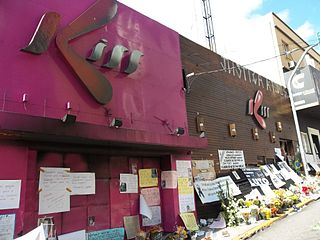
The Kiss nightclub fire started between 2:00 and 2:30 a.m. (BRST) on 27 January 2013 in Santa Maria, Rio Grande do Sul, Brazil, killing 245 people and injuring at least 630 others. It is the second most-devastating fire disaster in the history of Brazil—surpassed only by the Niterói circus fire of December 1961, which killed 503 people in Niterói, and the deadliest nightclub fire since the December 2000 fire that killed 309 people in Luoyang, China. It is also the third-deadliest nightclub fire in history, behind that fire and the Cocoanut Grove fire in 1942.

Brazil, officially the Federative Republic of Brazil, is the largest country in both South America and Latin America. At 8.5 million square kilometers (3,300,000 sq mi) and with over 217 million people, Brazil is the world's fifth-largest country by area and the seventh most populous. Its capital is Brasília, and its most populous city is São Paulo. The federation is composed of the union of the 26 states and the Federal District. It is the largest country to have Portuguese as an official language and the only one in the Americas; one of the most multicultural and ethnically diverse nations, due to over a century of mass immigration from around the world; and the most populous Roman Catholic-majority country.

Santa Maria is a municipality (município) in the central region of Rio Grande do Sul, the southernmost state of Brazil. In 2020, its population was 283,677 inhabitants in a total area of 1,823 square kilometres (704 sq mi). Santa Maria is the 5th biggest municipality in the state, and the largest in its micro-region.
Arab Spring: The Yemeni Revolution began as more than 16,000 protesters demonstrated in Sanaa to demand governmental changes.
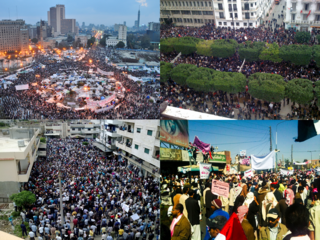
The Arab Spring was a series of anti-government protests, uprisings and armed rebellions that spread across much of the Arab world in the early 2010s. It began in Tunisia in response to corruption and economic stagnation. From Tunisia, the protests then spread to five other countries: Libya, Egypt, Yemen, Syria and Bahrain. Rulers were deposed or major uprisings and social violence occurred including riots, civil wars, or insurgencies. Sustained street demonstrations took place in Morocco, Iraq, Algeria, Lebanon, Jordan, Kuwait, Oman and Sudan. Minor protests took place in Djibouti, Mauritania, Palestine, Saudi Arabia and the Moroccan-occupied Western Sahara. A major slogan of the demonstrators in the Arab world is ash-shaʻb yurīd isqāṭ an-niẓām!.

The Yemeni Revolution (intifada), also known as the Yemeni Revolution of Dignity followed the initial stages of the Tunisian Revolution and occurred simultaneously with the Egyptian Revolution of 2011 and other Arab Spring protests in the Middle East and North Africa. In its early phase, protests in Yemen were initially against unemployment, economic conditions and corruption, as well as against the government's proposals to modify Yemen's constitution. The protesters' demands then escalated to calls for the resignation of Yemeni President Ali Abdullah Saleh. Mass defections from the military, as well as from Saleh's government, effectively rendered much of the country outside of the government's control, and protesters vowed to defy its authority.

Sanaa, also spelled Sana'a or Sana, is the capital and largest city in Yemen and the centre of Sanaa Governorate. The city is not part of the Governorate, but forms the separate administrative district of "ʾAmānat al-ʿĀṣima". Under the Yemeni constitution, Sanaa is the capital of the country, although the seat of the Yemeni government moved to Aden, the former capital of South Yemen in the aftermath of the Houthi occupation. Aden was declared as the temporary capital by President Abdrabbuh Mansur Hadi in March 2015.
Within Ursa Minor, H1504+65, a white dwarf with the hottest known surface temperature in the universe at 200,000 K, was documented.
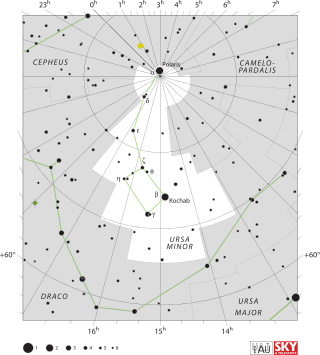
Ursa Minor, also known as the Little Bear, is a constellation located in the far northern sky. As with the Great Bear, the tail of the Little Bear may also be seen as the handle of a ladle, hence the North American name, Little Dipper: seven stars with four in its bowl like its partner the Big Dipper. Ursa Minor was one of the 48 constellations listed by the 2nd-century astronomer Ptolemy, and remains one of the 88 modern constellations. Ursa Minor has traditionally been important for navigation, particularly by mariners, because of Polaris being the north pole star.
H1504+65 is an enigmatic peculiar star in the constellation Ursa Minor. With a surface temperature of 200,000 K (360,000°F) and an atmosphere composed of carbon, oxygen and 2% neon, it is the second hottest white dwarf ever discovered. It is thought to be the stellar core of a post-asymptotic giant branch star, though its composition is unexplainable by current models of stellar evolution.

A white dwarf is a stellar core remnant composed mostly of electron-degenerate matter. A white dwarf is very dense: its mass is comparable to the Sun's, while its volume is comparable to the Earth's. A white dwarf's faint luminosity comes from the emission of residual thermal energy; no fusion takes place in a white dwarf. The nearest known white dwarf is Sirius B, at 8.6 light years, the smaller component of the Sirius binary star. There are currently thought to be eight white dwarfs among the hundred star systems nearest the Sun. The unusual faintness of white dwarfs was first recognized in 1910. The name white dwarf was coined by Willem Luyten in 1922.
Arab Spring: The Yemeni Revolution begins as over 16,000 protestors demonstrate in Sana'a.

The Arab Spring was a series of anti-government protests, uprisings and armed rebellions that spread across much of the Arab world in the early 2010s. It began in Tunisia in response to corruption and economic stagnation. From Tunisia, the protests then spread to five other countries: Libya, Egypt, Yemen, Syria and Bahrain. Rulers were deposed or major uprisings and social violence occurred including riots, civil wars, or insurgencies. Sustained street demonstrations took place in Morocco, Iraq, Algeria, Lebanon, Jordan, Kuwait, Oman and Sudan. Minor protests took place in Djibouti, Mauritania, Palestine, Saudi Arabia and the Moroccan-occupied Western Sahara. A major slogan of the demonstrators in the Arab world is ash-shaʻb yurīd isqāṭ an-niẓām!.

The Yemeni Revolution (intifada), also known as the Yemeni Revolution of Dignity followed the initial stages of the Tunisian Revolution and occurred simultaneously with the Egyptian Revolution of 2011 and other Arab Spring protests in the Middle East and North Africa. In its early phase, protests in Yemen were initially against unemployment, economic conditions and corruption, as well as against the government's proposals to modify Yemen's constitution. The protesters' demands then escalated to calls for the resignation of Yemeni President Ali Abdullah Saleh. Mass defections from the military, as well as from Saleh's government, effectively rendered much of the country outside of the government's control, and protesters vowed to defy its authority.

Sanaa, also spelled Sana'a or Sana, is the capital and largest city in Yemen and the centre of Sanaa Governorate. The city is not part of the Governorate, but forms the separate administrative district of "ʾAmānat al-ʿĀṣima". Under the Yemeni constitution, Sanaa is the capital of the country, although the seat of the Yemeni government moved to Aden, the former capital of South Yemen in the aftermath of the Houthi occupation. Aden was declared as the temporary capital by President Abdrabbuh Mansur Hadi in March 2015.
Within Ursa Minor, H1504+65, a white dwarf with the hottest known surface temperature in the universe at 200,000 K, was documented.

Ursa Minor, also known as the Little Bear, is a constellation located in the far northern sky. As with the Great Bear, the tail of the Little Bear may also be seen as the handle of a ladle, hence the North American name, Little Dipper: seven stars with four in its bowl like its partner the Big Dipper. Ursa Minor was one of the 48 constellations listed by the 2nd-century astronomer Ptolemy, and remains one of the 88 modern constellations. Ursa Minor has traditionally been important for navigation, particularly by mariners, because of Polaris being the north pole star.
H1504+65 is an enigmatic peculiar star in the constellation Ursa Minor. With a surface temperature of 200,000 K (360,000°F) and an atmosphere composed of carbon, oxygen and 2% neon, it is the second hottest white dwarf ever discovered. It is thought to be the stellar core of a post-asymptotic giant branch star, though its composition is unexplainable by current models of stellar evolution.

A white dwarf is a stellar core remnant composed mostly of electron-degenerate matter. A white dwarf is very dense: its mass is comparable to the Sun's, while its volume is comparable to the Earth's. A white dwarf's faint luminosity comes from the emission of residual thermal energy; no fusion takes place in a white dwarf. The nearest known white dwarf is Sirius B, at 8.6 light years, the smaller component of the Sirius binary star. There are currently thought to be eight white dwarfs among the hundred star systems nearest the Sun. The unusual faintness of white dwarfs was first recognized in 1910. The name white dwarf was coined by Willem Luyten in 1922.
Porfirio Lobo Sosa became the new president of Honduras, ending a constitutional crisis that had begun in 2009 when Manuel Zelaya was forcibly removed from office.

Porfirio Lobo Sosa, known as Pepe Lobo, is a Honduran politician and agricultural landowner who served as President of Honduras from 2010 to 2014. A member of the conservative National Party and a former deputy in the National Congress of Honduras from 1990, he was president of the National Congress of Honduras from 2002 to 2006. He came second to Manuel Zelaya with 46% of the vote in the 2005 general election. After the military ousted Zelaya in a coup d'état, Lobo was elected president in the 2009 presidential election and took office on 27 January 2010.

The president of Honduras officially known as the President of the Republic of Honduras, is the head of state and head of government of Honduras, and the Commander-in-chief of the Armed Forces. According to the 1982 Constitution of Honduras, the Government of Honduras consists of three branches: Executive, Legislative and Judicial. The president is the head of the Executive branch, their primary duty being to "Execute and enforce the Constitution, treaties and conventions, laws and other legal dispositions." The President is directly elected for a four year term.

The 2009 Honduran constitutional crisis was a political dispute over plans to either rewrite the Constitution of Honduras or write a new one.

José Manuel Zelaya Rosales is a Honduran politician who was President of Honduras from 27 January 2006 until 28 June 2009, and who since January 2022 serves as the first First Gentleman of Honduras. He is the eldest son of a wealthy businessman, and inherited his father's nickname "Mel". Before entering politics he was involved in his family's logging and timber businesses.

The 2009 Honduran coup d'état, part of the 2009 Honduran constitutional crisis, occurred when the Honduran Army on 28 June 2009 followed orders from the Honduran Supreme Court to oust President Manuel Zelaya and send him into exile. Zelaya had attempted to schedule a non-binding poll on holding a referendum on convening a constituent assembly to rewrite the constitution. Zelaya refused to comply with court orders to cease, and the Honduran Supreme Court issued a secret warrant for his arrest dated 26 June. Two days later, Honduran soldiers stormed the president's house in the middle of the night and detained him, forestalling the poll. Instead of bringing him to trial, the army put him on a military aeroplane and flew him to Costa Rica. Later that day, after the reading of a resignation letter of disputed authenticity, the Honduran Congress voted to remove Zelaya from office, and appointed Speaker of Congress Roberto Micheletti, his constitutional successor, to replace him. It was the first coup to occur in the country since 1978.
The 2009 Honduran constitutional crisis ends when Porfirio Lobo Sosa becomes the new President of Honduras.

The 2009 Honduran constitutional crisis was a political dispute over plans to either rewrite the Constitution of Honduras or write a new one.

Porfirio Lobo Sosa, known as Pepe Lobo, is a Honduran politician and agricultural landowner who served as President of Honduras from 2010 to 2014. A member of the conservative National Party and a former deputy in the National Congress of Honduras from 1990, he was president of the National Congress of Honduras from 2002 to 2006. He came second to Manuel Zelaya with 46% of the vote in the 2005 general election. After the military ousted Zelaya in a coup d'état, Lobo was elected president in the 2009 presidential election and took office on 27 January 2010.

The president of Honduras officially known as the President of the Republic of Honduras, is the head of state and head of government of Honduras, and the Commander-in-chief of the Armed Forces. According to the 1982 Constitution of Honduras, the Government of Honduras consists of three branches: Executive, Legislative and Judicial. The president is the head of the Executive branch, their primary duty being to "Execute and enforce the Constitution, treaties and conventions, laws and other legal dispositions." The President is directly elected for a four year term.
Apple announces the iPad.

Apple Inc. is an American multinational technology company headquartered in Cupertino, California, United States. Apple is the largest technology company by revenue and, as of June 2022, is the world's biggest company by market capitalization, the fourth-largest personal computer vendor by unit sales and second-largest mobile phone manufacturer. It is one of the Big Five American information technology companies, alongside Alphabet, Amazon, Meta, and Microsoft.

The iPad is a brand of iOS and iPadOS-based tablet computers that are developed by Apple Inc. The iPad was conceived before the related iPhone but the iPhone was developed and released first. Speculation about the development, operating system, and release of the original iPad began in 2002 prior to its introduction on January 20, 2010. The iPad range consists of the original iPad lineup and the flagship products iPad Mini, iPad Air, and iPad Pro.
The first selections for the United States National Recording Registry were announced by the Library of Congress.

The National Recording Registry is a list of sound recordings that "are culturally, historically, or aesthetically significant, and/or inform or reflect life in the United States." The registry was established by the National Recording Preservation Act of 2000, which created the National Recording Preservation Board, whose members are appointed by the Librarian of Congress. The recordings preserved in the United States National Recording Registry form a registry of recordings selected yearly by the National Recording Preservation Board for preservation in the Library of Congress.
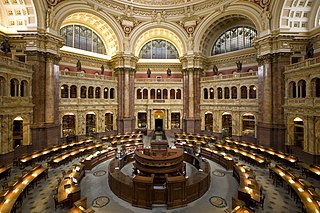
The Library of Congress (LOC) is the research library that officially serves the United States Congress and is the de facto national library of the United States. It is the oldest federal cultural institution in the country. The library is housed in three buildings on Capitol Hill in Washington, D.C.; it also maintains a conservation center in Culpeper, Virginia. The library's functions are overseen by the Librarian of Congress, and its buildings are maintained by the Architect of the Capitol. The Library of Congress is the largest library in the world. Its "collections are universal, not limited by subject, format, or national boundary, and include research materials from all parts of the world and in more than 470 languages."
The first selections for the National Recording Registry are announced by the Library of Congress.

The National Recording Registry is a list of sound recordings that "are culturally, historically, or aesthetically significant, and/or inform or reflect life in the United States." The registry was established by the National Recording Preservation Act of 2000, which created the National Recording Preservation Board, whose members are appointed by the Librarian of Congress. The recordings preserved in the United States National Recording Registry form a registry of recordings selected yearly by the National Recording Preservation Board for preservation in the Library of Congress.

The Library of Congress (LOC) is the research library that officially serves the United States Congress and is the de facto national library of the United States. It is the oldest federal cultural institution in the country. The library is housed in three buildings on Capitol Hill in Washington, D.C.; it also maintains a conservation center in Culpeper, Virginia. The library's functions are overseen by the Librarian of Congress, and its buildings are maintained by the Architect of the Capitol. The Library of Congress is the largest library in the world. Its "collections are universal, not limited by subject, format, or national boundary, and include research materials from all parts of the world and in more than 470 languages."
An explosion at a military storage facility in Lagos, Nigeria, kills at least 1,100 people and displaces over 20,000 others.
The Lagos armoury explosion was the accidental detonation of a large stock of high explosives at a military storage facility in the city of Lagos, Nigeria, on 27 January 2002. The fires created by the debris from this explosion burnt down a large section of Northern Lagos, and created a panic that spread to other areas. As people fled the flames, many stumbled into a concealed canal and drowned. The explosion and its aftermath are believed to have killed at least 1,100 people and displaced over 20,000, with many thousands injured or homeless. The government of Nigeria launched an enquiry, which blamed the Nigerian Army for failing to properly maintain the base, or to decommission it when instructed to do so in 2001.

Lagos is the largest city in Nigeria and the second most populous city in Africa, with a population of 15.4 million as of 2015 within the city proper. Lagos was the national capital of Nigeria until December 1991 following the government's decision to move their capital to Abuja in the centre of the country. The Lagos metropolitan area has a total population of roughly 23.5 million as of 2018, making it the largest metropolitan area in Africa. Lagos is a major African financial centre and is the economic hub of Lagos State and Nigeria at large. The city has been described as the cultural, financial, and entertainment capital of Africa, and is a significant influence on commerce, entertainment, technology, education, politics, tourism, art, and fashion. Lagos is also among the top ten of the world's fastest-growing cities and urban areas. The megacity has the fourth-highest GDP in Africa and houses one of the largest and busiest seaports on the continent. The Lagos metropolitan area is a major educational and cultural centre in Sub Saharan Africa.
Mahamane Ousmane, the first democratically elected president of Niger, was deposed by Colonel Ibrahim Baré Maïnassara in a military coup d'état.

Mahamane Ousmane is a Nigerien politician. He was the first democratically elected and fourth President of Niger, serving from 16 April 1993 until he was deposed in a military coup d'état on 27 January 1996. He has continued to run for president in each election since his ousting, and he was president of the National Assembly from December 1999 to May 2009. Since April 2020, he is the president of the Democratic and Republican Renewal, a major political party that is currently in opposition. RDR Tchanji formed an alliance with Ousmane's other political vehicle, MNRD Hankuri, on 16 December 2018.

This is a list of heads of state of Niger since the country gained independence from France in 1960 to the present day.

General Ibrahim Baré Maïnassara was a military officer and diplomat in Niger who ruled the country from his seizure of power in 1996 until his assassination during the military coup of April 1999.
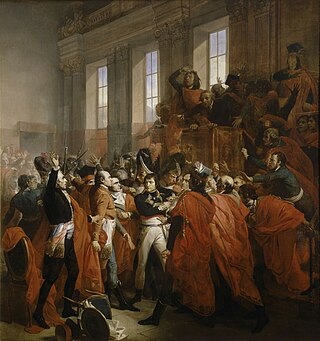
A coup d'état, also known as a coup or overthrow, is a seizure and removal of a government and its powers. Typically, it is an illegal seizure of power by a political faction, politician, cult, rebel group, military, or a dictator. Many scholars consider a coup successful when the usurpers seize and hold power for at least seven days.
In a military coup, Colonel Ibrahim Baré Maïnassara deposes the first democratically elected president of Niger, Mahamane Ousmane.
The 1996 Nigerien coup d'état was a military coup d'état which occurred on 27 January 1996 in Niamey, Niger. It ousted Niger's first democratically elected president, Mahamane Ousmane after nearly three years in power and installed General Ibrahim Baré Maïnassara as head of state. Prime Minister Hama Amadou was arrested in the coup and several soldiers and presidential guards were killed in the fighting.

General Ibrahim Baré Maïnassara was a military officer and diplomat in Niger who ruled the country from his seizure of power in 1996 until his assassination during the military coup of April 1999.
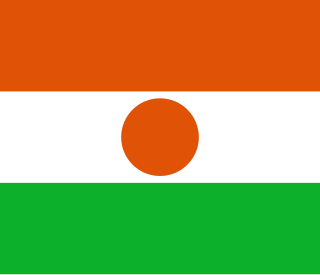
Niger or the Niger, officially the Republic of the Niger, is a landlocked country in West Africa. It is a unitary state bordered by Libya to the northeast, Chad to the east, Nigeria to the south, Benin and Burkina Faso to the southwest, Mali to the west, and Algeria to the northwest. It covers a land area of almost 1,270,000 km2 (490,000 sq mi), making it the second-largest landlocked country in West Africa, after Chad. Over 80% of its land area lies in the Sahara. Its predominantly Muslim population of about 25 million live mostly in clusters in the further south and west of the country. The capital Niamey is located in Niger's southwest corner.

Mahamane Ousmane is a Nigerien politician. He was the first democratically elected and fourth President of Niger, serving from 16 April 1993 until he was deposed in a military coup d'état on 27 January 1996. He has continued to run for president in each election since his ousting, and he was president of the National Assembly from December 1999 to May 2009. Since April 2020, he is the president of the Democratic and Republican Renewal, a major political party that is currently in opposition. RDR Tchanji formed an alliance with Ousmane's other political vehicle, MNRD Hankuri, on 16 December 2018.
Germany first observes the International Holocaust Remembrance Day.
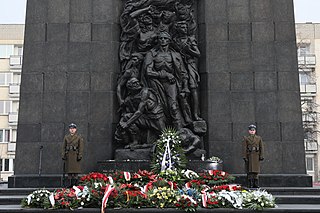
The International Holocaust Remembrance Day, or the International Day in Memory of the Victims of the Holocaust, is an international memorial day on 27 January that commemorates the victims of the Holocaust, which resulted in the murder of one third of the Jewish people, along with countless members of other minorities between 1933 and 1945 by Nazi Germany, an attempt to implement their "final solution" to the Jewish question. 27 January was chosen to commemorate the date when the Auschwitz concentration camp was liberated by the Red Army in 1945.
The pilot shaft of the Seikan Tunnel, the world's longest sub-aqueous tunnel (53.85 km) between the Japanese islands of Honshū and Hokkaidō, breaks through.
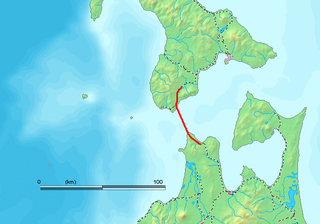
The Seikan Tunnel, is a 53.85 km (33.46 mi) dual-gauge railway tunnel in Japan, with a 23.3 km (14.5 mi) portion under the seabed of the Tsugaru Strait, which separates Aomori Prefecture on the main Japanese island of Honshu from the northern island of Hokkaido. The track level is about 100 m (330 ft) below the seabed and 240 m (790 ft) below sea level. The tunnel is part of the standard-gauge Hokkaido Shinkansen and the narrow-gauge Kaikyō Line of the Hokkaido Railway Company 's Tsugaru-Kaikyō Line. The name Seikan comes from combining the on'yomi readings of the first characters of Aomori (青森), the nearest major city on the Honshu side of the strait, and Hakodate (函館), the nearest major city on the Hokkaido side.

Honshu , historically called Hondo , is the largest and most populous island of Japan. It is located south of Hokkaidō across the Tsugaru Strait, north of Shikoku across the Inland Sea, and northeast of Kyūshū across the Kanmon Straits. The island separates the Sea of Japan, which lies to its north and west, from the North Pacific Ocean to the south and east. It is the seventh-largest island in the world, and the second-most populous after the Indonesian island of Java.

Hokkaidō is Japan's second largest island and comprises the largest and northernmost prefecture, making up its own region. The Tsugaru Strait separates Hokkaidō from Honshu; the two islands are connected by the undersea railway Seikan Tunnel.
Six American diplomats who had evaded capture in the Iran hostage crisis escaped with the help of Canadian government officials to Zürich, Switzerland.

On November 4, 1979, 52 United States diplomats and citizens were held hostage after a group of militarized Iranian college students belonging to the Muslim Student Followers of the Imam's Line, who supported the Iranian Revolution, took over the U.S. Embassy in Tehran and took them as hostages. A diplomatic standoff ensued. The hostages were held for 444 days, being released on January 20, 1981.
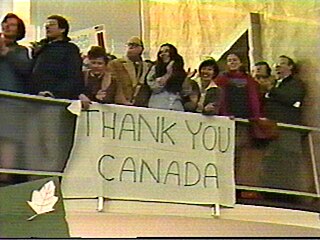
The "Canadian Caper" was the joint covert rescue by the Canadian government and the CIA of six American diplomats who had evaded capture during the seizure of the United States embassy in Tehran, Iran, on November 4, 1979, after the Iranian Revolution, when Islamist students took most of the American embassy personnel hostage, demanding the return of the US-backed Shah for trial.

Zürich is the largest city in Switzerland and the capital of the canton of Zürich. It is located in north-central Switzerland, at the northwestern tip of Lake Zürich. As of January 2020, the municipality has 434,335 inhabitants, the urban area 1.315 million (2009), and the Zürich metropolitan area 1.83 million (2011). Zürich is a hub for railways, roads, and air traffic. Both Zurich Airport and Zürich's main railway station are the largest and busiest in the country.
Through cooperation between the U.S. and Canadian governments, six American diplomats secretly escape hostilities in Iran in the culmination of the Canadian Caper.

On November 4, 1979, 52 United States diplomats and citizens were held hostage after a group of militarized Iranian college students belonging to the Muslim Student Followers of the Imam's Line, who supported the Iranian Revolution, took over the U.S. Embassy in Tehran and took them as hostages. A diplomatic standoff ensued. The hostages were held for 444 days, being released on January 20, 1981.

Iran, officially the Islamic Republic of Iran, and also called Persia, is a country in Western Asia. It is bordered by Iraq and Turkey to the west, by Azerbaijan and Armenia to the northwest, by the Caspian Sea and Turkmenistan to the north, by Afghanistan and Pakistan to the east, and by the Gulf of Oman and the Persian Gulf to the south. It covers an area of 1.64 million square kilometres, making it the 17th-largest country. Iran has a population of 86 million, making it the 17th-most populous country in the world, and the second-largest in the Middle East. Its largest cities, in descending order, are the capital Tehran, Mashhad, Isfahan, Karaj, Shiraz, and Tabriz.

The "Canadian Caper" was the joint covert rescue by the Canadian government and the CIA of six American diplomats who had evaded capture during the seizure of the United States embassy in Tehran, Iran, on November 4, 1979, after the Iranian Revolution, when Islamist students took most of the American embassy personnel hostage, demanding the return of the US-backed Shah for trial.
Brisbane, Australia, was flooded when the Brisbane River broke its banks.

Brisbane is the capital and most populous city of the Australian state of Queensland, and the third-most populous city in Australia and Oceania, with a population of approximately 2.6 million. Brisbane lies at the centre of the South East Queensland metropolitan region, which encompasses a population of around 3.8 million. The Brisbane central business district is situated within a peninsula of the Brisbane River about 15 km (9 mi) from its mouth at Moreton Bay, a bay of the Coral Sea. Brisbane is located in the hilly floodplain of the Brisbane River Valley between Moreton Bay and the Taylor and D'Aguilar mountain ranges. It sprawls across several local government areas, most centrally the City of Brisbane, Australia's most populous local government area. The demonym of Brisbane is Brisbanite.

In January 1974 a flood occurred in Brisbane, Queensland, Australia after three weeks of continual rain. The Brisbane River, which runs through the heart of the city, broke its banks and flooded the surrounding areas. The cyclone that produced the flood also flooded surrounding cities: Ipswich, Beenleigh, and the Gold Coast.

The Brisbane River is the longest river in South East Queensland, Australia, and flows through the city of Brisbane, before emptying into Moreton Bay on the Coral Sea. John Oxley, the first European to explore the river, named it after the Governor of New South Wales, Sir Thomas Brisbane in 1823. The penal colony of Moreton Bay later adopted the same name, eventually becoming the present city of Brisbane. The river is a tidal estuary and the water is brackish from its mouth through the majority of the Brisbane metropolitan area westward to the Mount Crosby Weir. The river is wide and navigable throughout the Brisbane metropolitan area.
The Paris Peace Accords officially ends the Vietnam War. Colonel William Nolde is killed in action becoming the conflict's last recorded American combat casualty.

The Paris Peace Accords, officially titled the Agreement on Ending the War and Restoring Peace in Viet Nam, was a peace treaty signed on January 27, 1973, to establish peace in Vietnam and end the Vietnam War. The treaty included the governments of the Democratic Republic of Vietnam, the Republic of Vietnam, and the United States, as well as the Republic of South Vietnam (PRG) that represented South Vietnamese communists. US ground forces up to that point had been sidelined with deteriorating morale and gradually withdrawn to coastal regions, not taking part in offensive operations or much direct combat for the preceding two-year period. The Paris Agreement Treaty would in effect remove all remaining US Forces, including air and naval forces in exchange. Direct U.S. military intervention was ended, and fighting between the three remaining powers temporarily stopped for less than a day. The agreement was not ratified by the United States Senate.

The Vietnam War was a conflict in Vietnam, Laos, and Cambodia from 1 November 1955 to the fall of Saigon on 30 April 1975. It was the second of the Indochina Wars and was officially fought between North Vietnam and South Vietnam. The north was supported by the Soviet Union, China, and other communist states, while the south was supported by the United States and other anti-communist allies. The war is widely considered to be a Cold War-era proxy war. It lasted almost 20 years, with direct U.S. involvement ending in 1973. The conflict also spilled over into neighboring states, exacerbating the Laotian Civil War and the Cambodian Civil War, which ended with all three countries becoming communist states by 1975.

Colonel William Benedict Nolde was an officer in the United States Army. Born in Menominee, Michigan, Nolde was a professor of military science at Central Michigan University before joining the army. He is known for being the last official American combat casualty of the Vietnam War: the 45,914th confirmed death and 57,597th in the total list of Americans killed during the conflict. Nolde was killed by artillery fire eleven hours before the cessation of all hostilities in accordance with the Paris Peace Accords.
A fire during a launch simulation for the Apollo 1 mission at Cape Kennedy killed astronauts Gus Grissom, Ed White and Roger Chaffee.
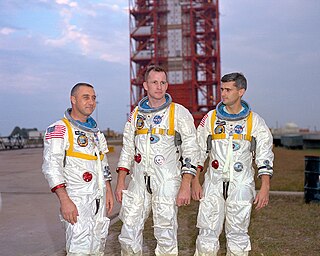
Apollo 1, initially designated AS-204, was the first crewed mission of the Apollo program, the American undertaking to land the first man on the Moon. It was planned to launch on February 21, 1967, as the first low Earth orbital test of the Apollo command and service module. The mission never flew; a cabin fire during a launch rehearsal test at Cape Kennedy Air Force Station Launch Complex 34 on January 27 killed all three crew members—Command Pilot Gus Grissom, Senior Pilot Ed White, and Pilot Roger B. Chaffee—and destroyed the command module (CM). The name Apollo 1, chosen by the crew, was made official by NASA in their honor after the fire.

Cape Canaveral Space Force Station (CCSFS) is an installation of the United States Space Force's Space Launch Delta 45, located on Cape Canaveral in Brevard County, Florida.
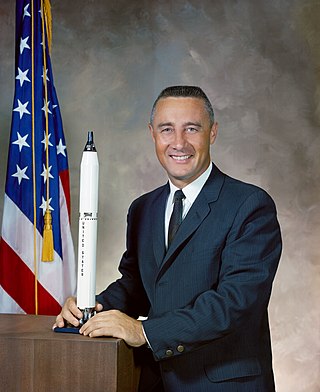
Virgil Ivan "Gus" Grissom was an American engineer, pilot in the United States Air Force, and member of the Mercury Seven selected by National Aeronautics and Space Administration's (NASA) as Project Mercury astronauts to be the first Americans in outer space. He was a Project Gemini and an Apollo program astronaut. As a member of the NASA Astronaut Corps, Grissom was the second American to fly in space in 1961. He was also the second American to fly in space twice, preceded only by Joe Walker with his sub-orbital X-15 flights.

Edward Higgins White II was an American aeronautical engineer, United States Air Force officer, test pilot, and NASA astronaut. He was a member of the crews of Gemini 4 and Apollo 1.

Roger Bruce Chaffee was an American naval officer, aviator and aeronautical engineer who was a NASA astronaut in the Apollo program.
Apollo program: Astronauts Gus Grissom, Ed White and Roger Chaffee are killed in a fire during a test of their Apollo 1 spacecraft at the Kennedy Space Center, Florida.

The Apollo program, also known as Project Apollo, was the third United States human spaceflight program carried out by the National Aeronautics and Space Administration (NASA), which succeeded in preparing and landing the first humans on the Moon from 1968 to 1972. It was first conceived in 1960 during President Dwight D. Eisenhower's administration as a three-person spacecraft to follow the one-person Project Mercury, which put the first Americans in space. Apollo was later dedicated to President John F. Kennedy's national goal for the 1960s of "landing a man on the Moon and returning him safely to the Earth" in an address to Congress on May 25, 1961. It was the third US human spaceflight program to fly, preceded by the two-person Project Gemini conceived in 1961 to extend spaceflight capability in support of Apollo.

An astronaut is a person trained, equipped, and deployed by a human spaceflight program to serve as a commander or crew member aboard a spacecraft. Although generally reserved for professional space travelers, the term is sometimes applied to anyone who travels into space, including scientists, politicians, journalists, and tourists.

Virgil Ivan "Gus" Grissom was an American engineer, pilot in the United States Air Force, and member of the Mercury Seven selected by National Aeronautics and Space Administration's (NASA) as Project Mercury astronauts to be the first Americans in outer space. He was a Project Gemini and an Apollo program astronaut. As a member of the NASA Astronaut Corps, Grissom was the second American to fly in space in 1961. He was also the second American to fly in space twice, preceded only by Joe Walker with his sub-orbital X-15 flights.

Edward Higgins White II was an American aeronautical engineer, United States Air Force officer, test pilot, and NASA astronaut. He was a member of the crews of Gemini 4 and Apollo 1.

Roger Bruce Chaffee was an American naval officer, aviator and aeronautical engineer who was a NASA astronaut in the Apollo program.

Apollo 1, initially designated AS-204, was the first crewed mission of the Apollo program, the American undertaking to land the first man on the Moon. It was planned to launch on February 21, 1967, as the first low Earth orbital test of the Apollo command and service module. The mission never flew; a cabin fire during a launch rehearsal test at Cape Kennedy Air Force Station Launch Complex 34 on January 27 killed all three crew members—Command Pilot Gus Grissom, Senior Pilot Ed White, and Pilot Roger B. Chaffee—and destroyed the command module (CM). The name Apollo 1, chosen by the crew, was made official by NASA in their honor after the fire.

The John F. Kennedy Space Center, located on Merritt Island, Florida, is one of the National Aeronautics and Space Administration's (NASA) ten field centers. Since December 1968, KSC has been NASA's primary launch center of human spaceflight. Launch operations for the Apollo, Skylab and Space Shuttle programs were carried out from Kennedy Space Center Launch Complex 39 and managed by KSC. Located on the east coast of Florida, KSC is adjacent to Cape Canaveral Space Force Station (CCSFS). The management of the two entities work very closely together, share resources and operate facilities on each other's property.

Florida is a state located in the Southeastern region of the United States. Florida is bordered to the west by the Gulf of Mexico, to the northwest by Alabama, to the north by Georgia, to the east by the Bahamas and Atlantic Ocean, and to the south by the Straits of Florida and Cuba; it is the only state that borders both the Gulf of Mexico and the Atlantic Ocean. Spanning 65,758 square miles (170,310 km2), Florida ranks 22nd in area among the 50 states, and with a population of over 21 million, is the third-most populous. The state capital is Tallahassee and the most populous city is Jacksonville. The Miami metropolitan area, with a population of almost 6.2 million, is the most populous urban area in Florida and the ninth-most populous in the United States; other urban conurbations with over one million people are Tampa Bay, Orlando, and Jacksonville.
Cold War: The Soviet Union, the United States, and the United Kingdom sign the Outer Space Treaty in Washington, D.C., banning deployment of nuclear weapons in space, and limiting the usage of the Moon and other celestial bodies to peaceful purposes.

The Cold War is a term commonly used to refer to a period of geopolitical tension between the United States and the Soviet Union and their respective allies, the Western Bloc and the Eastern Bloc. Historians do not fully agree on its starting and ending points, but the period is generally considered to span from the announcement of the Truman Doctrine on 12 March 1947 to the dissolution of the Soviet Union on 26 December 1991. The term cold war is used because there was no large-scale fighting directly between the two superpowers, but they each supported major regional conflicts known as proxy wars. The conflict was based around the ideological and geopolitical struggle for global influence by these two superpowers, following their temporary alliance and victory against Nazi Germany and Imperial Japan in 1945. Aside from the nuclear arsenal development and conventional military deployment, the struggle for dominance was expressed via indirect means such as psychological warfare, propaganda campaigns, espionage, far-reaching embargoes, rivalry at sports events, and technological competitions such as the Space Race.

The Soviet Union, officially the Union of Soviet Socialist Republics (USSR), was a transcontinental country that spanned much of Eurasia from 1922 to 1991. A flagship communist state, it was nominally a federal union of fifteen national republics; in practice, both its government and its economy were highly centralized until its final years. It was a one-party state governed by the Communist Party of the Soviet Union, with the city of Moscow serving as its capital as well as that of its largest and most populous republic: the Russian SFSR. Other major cities included Leningrad, Kiev, Minsk, Tashkent, Alma-Ata, and Novosibirsk. It was the largest country in the world, covering over 22,402,200 square kilometres (8,649,500 sq mi) and spanning eleven time zones.

The Outer Space Treaty, formally the Treaty on Principles Governing the Activities of States in the Exploration and Use of Outer Space, including the Moon and Other Celestial Bodies, is a multilateral treaty that forms the basis of international space law. Negotiated and drafted under the auspices of the United Nations, it was opened for signature in the United States, the United Kingdom, and the Soviet Union on 27 January 1967, entering into force on 10 October 1967. As of February 2022, 112 countries are parties to the treaty—including all major spacefaring nations—and another 23 are signatories.

Washington, D.C., formally the District of Columbia, also known as just Washington or simply D.C., is the capital city and federal district of the United States. It is located on the east bank of the Potomac River, which forms its southwestern and southern border with the U.S. state of Virginia, and it shares a land border with the U.S. state of Maryland on its other sides. The city was named for George Washington, a Founding Father and the first president of the United States, and the federal district is named after Columbia, the female personification of the nation. As the seat of the U.S. federal government and several international organizations, the city is an important world political capital. It is one of the most visited cities in the U.S. with over 20 million annual visitors as of 2016.

A nuclear weapon is an explosive device that derives its destructive force from nuclear reactions, either fission or a combination of fission and fusion reactions, producing a nuclear explosion. Both bomb types release large quantities of energy from relatively small amounts of matter.

The Moon is Earth's only natural satellite. It is the fifth largest satellite in the Solar System and the largest and most massive relative to its parent planet, with a diameter about one-quarter that of Earth. The Moon is a planetary-mass object with a differentiated rocky body, making it a satellite planet under the geophysical definitions of the term and larger than all known dwarf planets of the Solar System. It lacks any significant atmosphere, hydrosphere, or magnetic field. Its surface gravity is about one-sixth of Earth's at 0.1654 g, with Jupiter's moon Io being the only satellite in the Solar System known to have a higher surface gravity and density.

An astronomical object, celestial object, stellar object or heavenly body is a naturally occurring physical entity, association, or structure that exists in the observable universe. In astronomy, the terms object and body are often used interchangeably. However, an astronomical body or celestial body is a single, tightly bound, contiguous entity, while an astronomical or celestial object is a complex, less cohesively bound structure, which may consist of multiple bodies or even other objects with substructures.
South Vietnamese prime minister Trần Văn Hương was removed by the military junta of Nguyễn Khánh.

Trần Văn Hương was a South Vietnamese politician who was the penultimate president of South Vietnam for a week in April 1975 prior to its surrender to the communist forces of North Vietnam. Prior to that, he was prime minister for three months from November 1964 to January 1965 under the supervision of a military junta led by General Nguyen Khanh; during this time, there was widespread civil unrest from the Buddhist majority and power struggles with the military.

Nguyễn Khánh was a South Vietnamese military officer and Army of the Republic of Vietnam general who served in various capacities as head of state and prime minister of South Vietnam while at the head of a military junta from January 1964 until February 1965. He was involved in or against many coup attempts, failed and successful, from 1960 until his defeat and exile from South Vietnam in 1965. Khánh lived out his later years with his family in exile in the United States. He died in 2013 in San Jose, California, at age 85.
South Vietnamese Prime Minister Trần Văn Hương is removed by the military junta of Nguyễn Khánh.

Trần Văn Hương was a South Vietnamese politician who was the penultimate president of South Vietnam for a week in April 1975 prior to its surrender to the communist forces of North Vietnam. Prior to that, he was prime minister for three months from November 1964 to January 1965 under the supervision of a military junta led by General Nguyen Khanh; during this time, there was widespread civil unrest from the Buddhist majority and power struggles with the military.

Nguyễn Khánh was a South Vietnamese military officer and Army of the Republic of Vietnam general who served in various capacities as head of state and prime minister of South Vietnam while at the head of a military junta from January 1964 until February 1965. He was involved in or against many coup attempts, failed and successful, from 1960 until his defeat and exile from South Vietnam in 1965. Khánh lived out his later years with his family in exile in the United States. He died in 2013 in San Jose, California, at age 85.
The Soviet submarine S-80 sinks when its snorkel malfunctions, flooding the boat.

S-80 was a diesel-electric submarine of the Soviet Navy.

A submarine snorkel is a device which allows a submarine to operate submerged while still taking in air from above the surface. British Royal Navy personnel often refer to it as the snort. A concept devised by Dutch engineers, it was widely used on German U-boats during the last year of World War II and known to them as a Schnorchel.
Nuclear testing at the Nevada Test Site begins with Operation Ranger.

Nuclear weapons tests are experiments carried out to determine nuclear weapons' effectiveness, yield, and explosive capability. Testing nuclear weapons offers practical information about how the weapons function, how detonations are affected by different conditions, and how personnel, structures, and equipment are affected when subjected to nuclear explosions. However, nuclear testing has often been used as an indicator of scientific and military strength. Many tests have been overtly political in their intention; most nuclear weapons states publicly declared their nuclear status through a nuclear test.

The Nevada National Security Site, known as the Nevada Test Site (NTS) until 2010, is a United States Department of Energy (DOE) reservation located in southeastern Nye County, Nevada, about 65 miles (105 km) northwest of the city of Las Vegas. Formerly known as the Nevada Proving Grounds, the site was established in 1951 for the testing of nuclear devices. It covers approximately 1,360 square miles (3,500 km2) of desert and mountainous terrain. Nuclear weapons testing at the site began with a 1-kiloton-of-TNT (4.2 TJ) bomb dropped on Frenchman Flat on January 27, 1951. Over the subsequent four decades, over 1,000 nuclear explosions were detonated at the site. Many of the iconic images of the nuclear era come from the site.

Operation Ranger was the fourth American nuclear test series. It was conducted in 1951 and was the first series to be carried out at the Nevada Test Site. All the bombs were dropped by B-50D bombers and exploded in the open air over Frenchman Flat (Area 5).
The Soviet Red Army liberated about 7,000 prisoners left behind by the Nazis in Auschwitz concentration camp (entrance pictured), in present-day Oświęcim, Poland.

The Workers' and Peasants' Red Army, often shortened to the Red Army, was the army and air force of the Russian Soviet Federative Socialist Republic and, after 1922, the Union of Soviet Socialist Republics. The army was established in January 1918. The Bolsheviks raised an army to oppose the military confederations of their adversaries during the Russian Civil War. Starting in February 1946, the Red Army, along with the Soviet Navy, embodied the main component of the Soviet Armed Forces; taking the official name of "Soviet Army", until its dissolution in 1991.
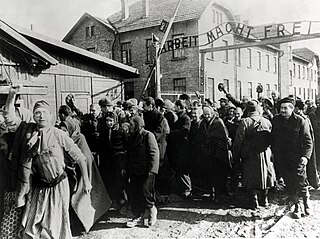
On 27 January 1945, Auschwitz concentration camp—a Nazi concentration camp and extermination camp in occupied Poland where more than a million people were murdered as part of the Nazi's "final solution" to the Jewish question—was liberated by the Red Army during the Vistula–Oder Offensive. Although most of the prisoners had been forced onto a death march, about 7,000 had been left behind. The Soviet soldiers attempted to help the survivors and were shocked at the scale of Nazi crimes. The date is recognized as International Holocaust Remembrance Day.

Nazi Germany was the German state between 1933 and 1945, when Adolf Hitler and the Nazi Party controlled the country, transforming it into a dictatorship. Under Hitler's rule, Germany quickly became a totalitarian state where nearly all aspects of life were controlled by the government. The Third Reich, meaning "Third Realm" or "Third Empire", alluded to the Nazi claim that Nazi Germany was the successor to the earlier Holy Roman Empire (800–1806) and German Empire (1871–1918). The Third Reich, which Hitler and the Nazis referred to as the Thousand-Year Reich, ended in May 1945 after just 12 years when the Allies defeated Germany, ending World War II in Europe.

Auschwitz concentration camp was a complex of over 40 concentration and extermination camps operated by Nazi Germany in occupied Poland during World War II and the Holocaust. It consisted of Auschwitz I, the main camp (Stammlager) in Oświęcim; Auschwitz II-Birkenau, a concentration and extermination camp with gas chambers; Auschwitz III-Monowitz, a labor camp for the chemical conglomerate IG Farben; and dozens of subcamps. The camps became a major site of the Nazis' final solution to the Jewish question.

Oświęcim is a city in the Lesser Poland province of southern Poland, situated 33 kilometres (21 mi) southeast of Katowice, near the confluence of the Vistula (Wisła) and Soła rivers. The city is known internationally for being the site of the Auschwitz concentration camp during World War II, when Poland was occupied by Nazi Germany.
World War II: The Soviet 322nd Rifle Division liberates the remaining inmates of Auschwitz-Birkenau.
The 322nd Rifle Division was a standard Red Army rifle division during World War II. It is most notable for liberating Auschwitz concentration camp as part of the 60th Army on January 27, 1945, in the course of the Vistula-Oder offensive. Prior to this the division also distinguished itself during the second liberation of Zhitomir on the last day of 1943. It received further distinctions for its service in western Ukraine and in Poland. Along with many other distinguished Soviet formations it was disbanded with the coming of peace.

On 27 January 1945, Auschwitz concentration camp—a Nazi concentration camp and extermination camp in occupied Poland where more than a million people were murdered as part of the Nazi's "final solution" to the Jewish question—was liberated by the Red Army during the Vistula–Oder Offensive. Although most of the prisoners had been forced onto a death march, about 7,000 had been left behind. The Soviet soldiers attempted to help the survivors and were shocked at the scale of Nazi crimes. The date is recognized as International Holocaust Remembrance Day.

Auschwitz concentration camp was a complex of over 40 concentration and extermination camps operated by Nazi Germany in occupied Poland during World War II and the Holocaust. It consisted of Auschwitz I, the main camp (Stammlager) in Oświęcim; Auschwitz II-Birkenau, a concentration and extermination camp with gas chambers; Auschwitz III-Monowitz, a labor camp for the chemical conglomerate IG Farben; and dozens of subcamps. The camps became a major site of the Nazis' final solution to the Jewish question.
World War II: The 900-day Siege of Leningrad is lifted.

The siege of Leningrad was a prolonged military blockade undertaken by the Axis powers against the Soviet city of Leningrad on the Eastern Front of World War II. Germany's Army Group North advanced from the south, while the German-allied Finnish army invaded from the north and completed the ring around the city.
World War II: The Eighth Air Force sorties ninety-one B-17s and B-24s to attack the U-boat construction yards at Wilhelmshaven, Germany. This was the first American bombing attack on Germany.

World War II or the Second World War, often abbreviated as WWII or WW2, was a world war that lasted from 1939 to 1945. It involved the vast majority of the world's countries—including all of the great powers—forming two opposing military alliances: the Allies and the Axis powers. World War II was a total war that directly involved more than 100 million personnel from more than 30 countries.

The Eighth Air Force is a numbered air force (NAF) of the United States Air Force's Air Force Global Strike Command (AFGSC). It is headquartered at Barksdale Air Force Base, Louisiana. The command serves as Air Forces Strategic – Global Strike, one of the air components of United States Strategic Command (USSTRATCOM). The Eighth Air Force includes the heart of America's heavy bomber force: the Northrop Grumman B-2 Spirit stealth bomber, the Rockwell B-1 Lancer supersonic bomber, and the Boeing B-52 Stratofortress heavy bomber aircraft.
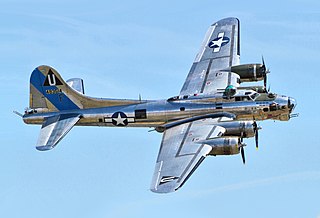
The Boeing B-17 Flying Fortress is a four-engined heavy bomber developed in the 1930s for the United States Army Air Corps (USAAC). Relatively fast and high-flying for a bomber of its era, the B-17 was used primarily in the European Theater of Operations and dropped more bombs than any other aircraft during World War II. It is the third-most produced bomber of all time, behind the four-engined Consolidated B-24 Liberator and the multirole, twin-engined Junkers Ju 88. It was also employed as a transport, antisubmarine aircraft, drone controller, and search-and-rescue aircraft.

The Consolidated B-24 Liberator is an American heavy bomber, designed by Consolidated Aircraft of San Diego, California. It was known within the company as the Model 32, and some initial production aircraft were laid down as export models designated as various LB-30s, in the Land Bomber design category.

U-boats were naval submarines operated by Germany, particularly in the First and Second World Wars. Although at times they were efficient fleet weapons against enemy naval warships, they were most effectively used in an economic warfare role and enforcing a naval blockade against enemy shipping. The primary targets of the U-boat campaigns in both wars were the merchant convoys bringing supplies from Canada and other parts of the British Empire, and from the United States, to the United Kingdom and to the Soviet Union and the Allied territories in the Mediterranean. German submarines also destroyed Brazilian merchant ships during World War II, causing Brazil to declare war on both Germany and Italy on 22 August 1942.

Wilhelmshaven is a coastal town in Lower Saxony, Germany. It is situated on the western side of the Jade Bight, a bay of the North Sea, and has a population of 76,089. Wilhelmshaven is the centre of the "Jade Bay" business region and is Germany's main military port.
First flight of the Lockheed P-38 Lightning.

The Lockheed P-38 Lightning is an American single-seat, twin piston-engined fighter aircraft that was used during World War II. Developed for the United States Army Air Corps by the Lockheed Corporation, the P-38 incorporated a distinctive twin-boom design with a central nacelle containing the cockpit and armament. Along with its use as a general fighter, the P-38 was used in various aerial combat roles, including as a highly effective fighter-bomber, a night fighter, and a long-range escort fighter when equipped with drop tanks. The P-38 was also used as a bomber-pathfinder, guiding streams of medium and heavy bombers, or even other P-38s equipped with bombs, to their targets. Used in the aerial reconnaissance role, the P-38 accounted for 90 percent of the aerial film captured over Europe.
Ibn Saud takes the title of King of Nejd.

Abdulaziz bin Abdul Rahman Al Saud, known in the West as Ibn Saud, was an Arab tribal, political, and religious leader who founded Saudi Arabia, the third Saudi state, and reigned as its first king from 23 September 1932 until his death in 1953. He had ruled parts of the kingdom since 1902, having previously been Emir, Sultan, and King of Nejd, and King of Hejaz.
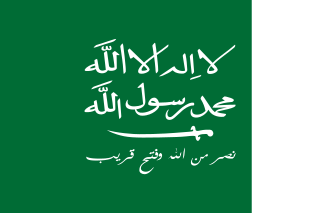
The Kingdom of Hejaz and Nejd, initially the Kingdom of Hejaz and Sultanate of Nejd, was a dual monarchy ruled by Abdulaziz following the victory of the Saudi Sultanate of Nejd over the Hashemite Kingdom of the Hejaz in 1925. It was the fourth iteration of the Third Saudi State.
Six days after his death Lenin's body is carried into a specially erected mausoleum.

On 21 January 1924, at 18:50 EET, Vladimir Lenin, leader of the October Revolution and the first leader and founder of the Soviet Union, died in Gorki aged 53 after falling into a coma. The official cause of death was recorded as an incurable disease of the blood vessels. Lenin was given a state funeral and then buried in a specially erected mausoleum on 27 January. A commission of the Central Committee of the RCP(b) was in charge of organising the funeral.

Lenin's Mausoleum, also known as Lenin's Tomb, situated on Red Square in the centre of Moscow, is a mausoleum that serves as the resting place of Soviet leader Vladimir Lenin. His preserved body has been on public display there since shortly after his death in 1924, with rare exceptions in wartime. Alexey Shchusev's granite structure incorporates some elements from ancient mausoleums, such as the Step Pyramid, the Tomb of Cyrus the Great and, to some degree, the Temple of the Inscriptions.
Beginning of the Finnish Civil War.
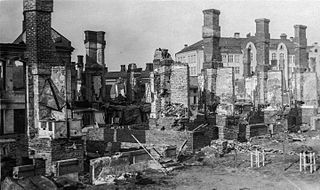
The Finnish Civil War was a civil war in Finland in 1918 fought for the leadership and control of the country between White Finland and the Finnish Socialist Workers' Republic during the country's transition from a grand duchy of the Russian Empire to an independent state. The clashes took place in the context of the national, political, and social turmoil caused by World War I in Europe. The war was fought between the "Reds", led by a section of the Social Democratic Party, and the "Whites", conducted by the conservative-based senate and the German Imperial Army. The paramilitary Red Guards, which were composed of industrial and agrarian workers, controlled the cities and industrial centers of southern Finland. The paramilitary White Guards, which consisted of land owners and those in the middle- and upper-classes, controlled rural central and northern Finland, and were led by General C. G. E. Mannerheim.
World War I: The British government passes the Military Service Act that introduces conscription in the United Kingdom.

World War I or the First World War, often abbreviated as WWI or WW1, and referred to by some Anglophone authors as the "Great War" or the "War to End All Wars", was a global conflict which lasted from 1914 to 1918, and is considered one of the deadliest conflicts in history. Belligerents included much of Europe, the Russian Empire, the United States, and the Ottoman Empire, with fighting occurring throughout Europe, the Middle East, Africa, the Pacific, and parts of Asia. An estimated 9 million soldiers were killed in combat, plus another 23 million wounded, while 5 million civilians died as a result of military action, hunger, and disease. Millions more died in genocides within the Ottoman Empire and in the 1918 influenza pandemic, which was exacerbated by the movement of combatants during the war.

The Military Service Act 1916 was an Act passed by the Parliament of the United Kingdom during the First World War to impose conscription in Great Britain, but not in Ireland or any other country around the world.

In the United Kingdom, military conscription has existed for two periods in modern times. The first was from 1916 to 1920, and the second from 1939 to 1960. The last conscripted soldiers left the service in 1963. It was legally designated as "Military Service" from 1916 to 1920, and as "National Service" from 1939 to 1960. However, between 1939 and 1948, it was often referred to as "War Service" in documents relating to National Insurance and pension provision.
Thomas Edison receives a patent for his incandescent lamp.

Thomas Alva Edison was an American inventor and businessman. He developed many devices in fields such as electric power generation, mass communication, sound recording, and motion pictures. These inventions, which include the phonograph, the motion picture camera, and early versions of the electric light bulb, have had a widespread impact on the modern industrialized world. He was one of the first inventors to apply the principles of organized science and teamwork to the process of invention, working with many researchers and employees. He established the first industrial research laboratory.
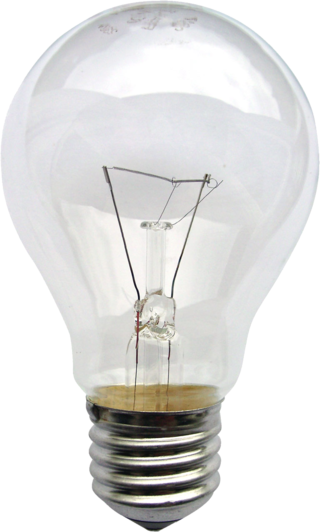
An incandescent light bulb, incandescent lamp or incandescent light globe is an electric light with a wire filament heated until it glows. The filament is enclosed in a glass bulb with a vacuum or inert gas to protect the filament from oxidation. Current is supplied to the filament by terminals or wires embedded in the glass. A bulb socket provides mechanical support and electrical connections.
Modest Mussorgsky's opera Boris Godunov premieres in Mariinsky Theatre in St.Petersburg
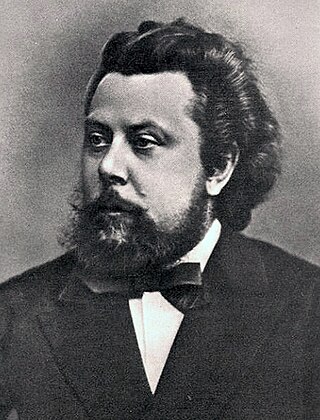
Modest Petrovich Mussorgsky was a Russian composer, one of the group known as "The Five". He was an innovator of Russian music in the Romantic period. He strove to achieve a uniquely Russian musical identity, often in deliberate defiance of the established conventions of Western music.

Boris Godunov is an opera by Modest Mussorgsky (1839–1881). The work was composed between 1868 and 1873 in Saint Petersburg, Russia. It is Mussorgsky's only completed opera and is considered his masterpiece. Its subjects are the Russian ruler Boris Godunov, who reigned as Tsar during the Time of Troubles, and his nemesis, the False Dmitriy. The Russian-language libretto was written by the composer, and is based on the 1825 drama Boris Godunov by Aleksandr Pushkin, and, in the Revised Version of 1872, on Nikolay Karamzin's History of the Russian State.

The Mariinsky Theatre is a historic theatre of opera and ballet in Saint Petersburg, Russia. Opened in 1860, it became the preeminent music theatre of late 19th-century Russia, where many of the stage masterpieces of Tchaikovsky, Mussorgsky, and Rimsky-Korsakov received their premieres. Through most of the Soviet era, it was known as the Kirov Theatre. Today, the Mariinsky Theatre is home to the Mariinsky Ballet, Mariinsky Opera and Mariinsky Orchestra. Since Yuri Temirkanov's retirement in 1988, the conductor Valery Gergiev has served as the theatre's general director.

Saint Petersburg, formerly known as Petrograd (1914–1924) and later Leningrad (1924–1991), is the second-largest city in Russia. It is situated on the Neva River, at the head of the Gulf of Finland on the Baltic Sea, with a population of roughly 5.4 million residents. Saint Petersburg is the fourth-most populous city in Europe after Istanbul, Moscow and London, the most populous city on the Baltic Sea, and the world's northernmost city of more than 1 million residents. As Russia's Imperial capital, and a historically strategic port, it is governed as a federal city.
Boshin War: Tokugawa rebels establish the Ezo Republic in Hokkaidō.
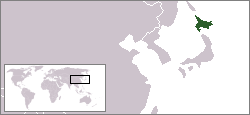
The Republic of Ezo was a short-lived separatist state established in 1869 on the island of Ezo, now Hokkaido, by a part of the former military of the Tokugawa shogunate at the end of the Bakumatsu period in Japan. It was the first government to attempt to institute democracy in Japan, though voting was allowed only to the samurai caste. The Republic of Ezo existed for five months before being annexed by the newly established Empire of Japan.

Hokkaidō is Japan's second largest island and comprises the largest and northernmost prefecture, making up its own region. The Tsugaru Strait separates Hokkaidō from Honshu; the two islands are connected by the undersea railway Seikan Tunnel.
Boshin War: The Battle of Toba–Fushimi begins, between forces of the Tokugawa shogunate and pro-Imperial factions; it will end in defeat for the shogunate, and is a pivotal point in the Meiji Restoration.

The Boshin War , sometimes known as the Japanese Revolution or Japanese Civil War, was a civil war in Japan fought from 1868 to 1869 between forces of the ruling Tokugawa shogunate and a clique seeking to seize political power in the name of the Imperial Court.
The Battle of Toba–Fushimi occurred between pro-Imperial and Tokugawa shogunate forces during the Boshin War in Japan. The battle started on 27 January 1868, when the forces of the shogunate and the allied forces of Chōshū, Satsuma and Tosa Domains clashed near Fushimi, Kyoto. The battle lasted for four days, ending in a decisive defeat for the shogunate.

The Tokugawa shogunate, also known as the Edo shogunate , was the military government of Japan during the Edo period from 1603 to 1868.
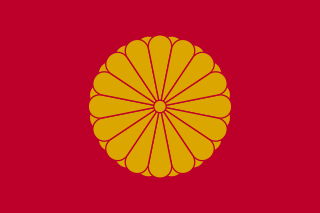
The emperor of Japan is the monarch and the head of the Imperial Family of Japan. Under the Constitution of Japan, he is defined as the symbol of the Japanese state and the unity of the Japanese people, and his position is derived from "the will of the people with whom resides sovereign power". Imperial Household Law governs the line of imperial succession. The emperor is immune from prosecution by the Supreme Court of Japan. He is also the head of the Shinto religion. In Japanese, the emperor is called Tennō , literally "Emperor of heaven or "Heavenly Sovereign". The Japanese Shinto religion holds him to be the direct descendant of the sun goddess Amaterasu. The emperor is also the head of all national Japanese orders, decorations, medals, and awards. In English, the use of the term Mikado (帝/御門) for the emperor was once common but is now considered obsolete.

The Meiji Restoration , referred to at the time as the Honorable Restoration , and also known as the Meiji Renovation, Revolution, Regeneration, Reform, or Renewal, was a political event that restored practical imperial rule to Japan in 1868 under Emperor Meiji. Although there were ruling emperors before the Meiji Restoration, the events restored practical abilities and consolidated the political system under the Emperor of Japan. The goals of the restored government were expressed by the new emperor in the Charter Oath.
The U.S. Congress approves Indian Territory (in what is present-day Oklahoma), clearing the way for forced relocation of the Eastern Indians on the "Trail of Tears".

The United States Congress is the legislature of the federal government of the United States. It is bicameral, composed of a lower body, the House of Representatives, and an upper body, the Senate. It meets in the United States Capitol in Washington, D.C. Senators and representatives are chosen through direct election, though vacancies in the Senate may be filled by a governor's appointment. Congress has 535 voting members: 100 senators and 435 representatives. The vice president of the United States has a vote in the Senate only when senators are evenly divided. The House of Representatives has six non-voting members.
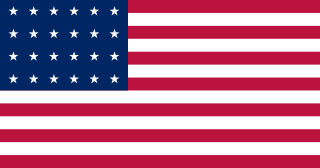
The Indian Territory and the Indian Territories are terms that generally described an evolving land area set aside by the United States Government for the relocation of Native Americans who held aboriginal title to their land as a sovereign independent state. In general, the tribes ceded land they occupied in exchange for land grants in 1803. The concept of an Indian Territory was an outcome of the US federal government's 18th- and 19th-century policy of Indian removal. After the American Civil War (1861–1865), the policy of the US government was one of assimilation.

Oklahoma is a state in the South Central region of the United States, bordered by Texas on the south and west, Kansas on the north, Missouri on the northeast, Arkansas on the east, New Mexico on the west, and Colorado on the northwest. Partially in the western extreme of the Upland South, it is the 20th-most extensive and the 28th-most populous of the 50 United States. Its residents are known as Oklahomans, and its capital and largest city is Oklahoma City.

The term Five Civilized Tribes was applied by European Americans in the colonial and early federal period in the history of the United States to the five major Native American nations in the Southeast—the Cherokee, Chickasaw, Choctaw, Creek (Muscogee), and Seminole. Americans of European descent classified them as "civilized" because they had adopted attributes of the Anglo-American culture. Examples of such colonial attributes adopted by these five tribes included Christianity, centralized governments, literacy, market participation, written constitutions, intermarriage with white Americans, and chattel slavery practices, including purchase of enslaved African Americans. For a period, the Five Civilized Tribes tended to maintain stable political relations with the European Americans, before the United States promoted Indian Removal of these tribes from the Southeast.
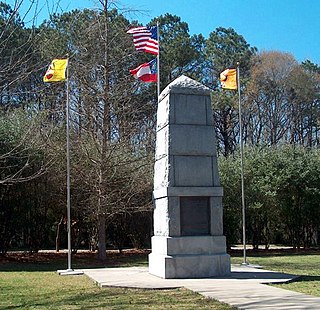
The Trail of Tears was a series of forced displacements of approximately 60,000 American Indians of the "Five Civilized Tribes" between 1830 and 1850 by the United States government. Part of the Indian removal, the ethnic cleansing was gradual, occurring over a period of nearly two decades. Members of the so-called "Five Civilized Tribes"—the Cherokee, Muscogee (Creek), Seminole, Chickasaw, and Choctaw nations —were forcibly removed from their ancestral homelands in the Southeastern United States to areas west of the Mississippi River that had been designated Indian Territory. The forced relocations were carried out by government authorities after the passage of the Indian Removal Act in 1830. The Cherokee removal in 1838 was brought on by the discovery of gold near Dahlonega, Georgia, in 1828, resulting in the Georgia Gold Rush.
A Russian expedition led by naval officers Fabian Gottlieb von Bellingshausen and Mikhail Lazarev made the first sighting of the coast of Antarctica.

The First Russian Antarctic Expedition took place in 1819–1821 under the direction of Fabian Bellingshausen and Mikhail Lazarev. The expedition aimed to reach the Southern Ocean in order to prove or disprove the existence of a suspected seventh continent, Antarctica. The sloop Vostok was under the command of Bellingshausen, while Lazarev commanded the sloop Mirny. Overall, the crew consisted of 190 people.
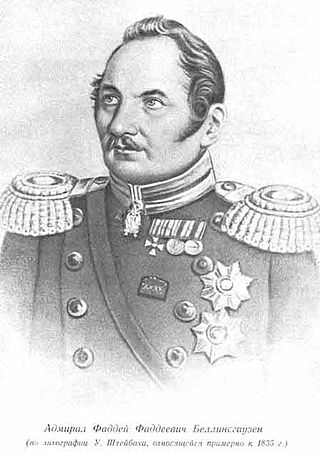
Fabian Gottlieb Thaddeus von Bellingshausen was a Russian naval officer, cartographer and explorer, who ultimately rose to the rank of admiral. He participated in the first Russian circumnavigation of the globe, and subsequently became a leader of another circumnavigation expedition that discovered the continent of Antarctica. Like Otto von Kotzebue and Adam Johann von Krusenstern, Bellingshausen belonged to the cohort of prominent Baltic German navigators who helped Russia launch its naval expeditions.
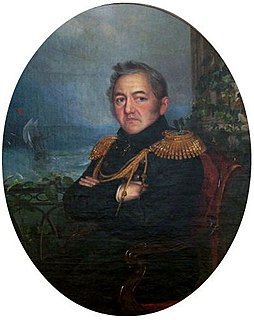
Admiral Mikhail Petrovich Lazarev was a Russian fleet commander and an explorer.

Antarctica is Earth's southernmost and least-populated continent. Situated almost entirely south of the Antarctic Circle and surrounded by the Southern Ocean, it contains the geographic South Pole. Antarctica is the fifth-largest continent, being about 40% larger than Europe, and has an area of 14,200,000 km2 (5,500,000 sq mi). Most of Antarctica is covered by the Antarctic ice sheet, with an average thickness of 1.9 km (1.2 mi).
A Russian expedition led by Fabian Gottlieb von Bellingshausen and Mikhail Petrovich Lazarev discovers the Antarctic continent, approaching the Antarctic coast.

The Russian Empire was the final period of the Russian monarchy from 1721 to 1917, ruling across large parts of Eurasia. It succeeded the Tsardom of Russia following the Treaty of Nystad, which ended the Great Northern War. The rise of the Russian Empire coincided with the decline of neighbouring rival powers: the Swedish Empire, the Polish–Lithuanian Commonwealth, Qajar Iran, the Ottoman Empire, and Qing China. It also held colonies in North America between 1799 and 1867. Covering an area of approximately 22,800,000 square kilometres (8,800,000 sq mi), it remains the third-largest empire in history, surpassed only by the British Empire and the Mongol Empire; it ruled over a population of 125.6 million people per the 1897 Russian census, which was the only census carried out during the entire imperial period. Owing to its geographic extent across three continents at its peak, it featured great ethnic, linguistic, religious, and economic diversity.

Fabian Gottlieb Thaddeus von Bellingshausen was a Russian naval officer, cartographer and explorer, who ultimately rose to the rank of admiral. He participated in the first Russian circumnavigation of the globe, and subsequently became a leader of another circumnavigation expedition that discovered the continent of Antarctica. Like Otto von Kotzebue and Adam Johann von Krusenstern, Bellingshausen belonged to the cohort of prominent Baltic German navigators who helped Russia launch its naval expeditions.

Admiral Mikhail Petrovich Lazarev was a Russian fleet commander and an explorer.

The Antarctic is a polar region around Earth's South Pole, opposite the Arctic region around the North Pole. The Antarctic comprises the continent of Antarctica, the Kerguelen Plateau and other island territories located on the Antarctic Plate or south of the Antarctic Convergence. The Antarctic region includes the ice shelves, waters, and all the island territories in the Southern Ocean situated south of the Antarctic Convergence, a zone approximately 32 to 48 km wide varying in latitude seasonally. The region covers some 20 percent of the Southern Hemisphere, of which 5.5 percent is the surface area of the Antarctica continent itself. All of the land and ice shelves south of 60°S latitude are administered under the Antarctic Treaty System. Biogeographically, the Antarctic realm is one of eight biogeographic realms of Earth's land surface.
The University of Georgia, one of the oldest public universities in the United States, was founded.
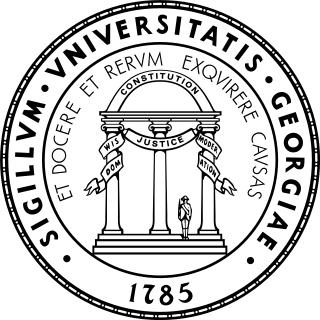
The University of Georgia is a public land-grant research university with its main campus in Athens, Georgia. Founded in 1785, it is one of the oldest public universities in the United States. The flagship school of the University System of Georgia, it has been ranked by major institutional rankings among the best public universities in the United States.
The title of oldest public university in the United States is claimed by three universities: the University of Georgia, the University of North Carolina at Chapel Hill, and the College of William and Mary. Each has a distinct basis for the claim: North Carolina being the first to hold classes and graduate students as a public institution, Georgia being the first created by state charter, and William & Mary having the oldest founding and operations dates of any current public university, but it was a private institution for over 200 years, until 1906. While all three universities closed for a time as a result of the American Civil War, William and Mary was closed for over two decades.
The University of Georgia is founded, the first public university in the United States.

The University of Georgia is a public land-grant research university with its main campus in Athens, Georgia. Founded in 1785, it is one of the oldest public universities in the United States. The flagship school of the University System of Georgia, it has been ranked by major institutional rankings among the best public universities in the United States.
American Revolutionary War: Henry Knox's "noble train of artillery" arrives in Cambridge, Massachusetts.

The American Revolutionary War, also known as the Revolutionary War or American War of Independence, secured American independence from Great Britain. Fighting began on April 19, 1775, followed by the Lee Resolution on July 2, 1776, and the Declaration of Independence on July 4, 1776. The American Patriots were supported by the Kingdom of France and, to a lesser extent, the Dutch Republic and the Spanish Empire, in a conflict taking place in North America, the Caribbean, and the Atlantic Ocean.

Henry Knox, a Founding Father of the United States, was a senior general of the Continental Army during the Revolutionary War, serving as chief of artillery in most of Washington's campaigns. Following the revolution, he oversaw the War Department under the Articles of Confederation, 1785—1789. Washington, at the start of his first administration, appointed Knox the nation's first Secretary of War, a position he held from 1789—1794. He is perhaps best remembered today as the namesake of Fort Knox in Kentucky, the repository of a large portion of the nation's gold reserves.

The noble train of artillery, also known as the Knox Expedition, was an expedition led by Continental Army Colonel Henry Knox to transport heavy weaponry that had been captured at Fort Ticonderoga to the Continental Army camps outside Boston during the winter of 1775–76.

Cambridge is a city in Middlesex County, Massachusetts, United States. Part of the Boston metropolitan area, at the 2020 U.S. Census the city's population was 118,403, making it the fourth most populous city in the state, behind Boston, Worcester, and Springfield. It is one of two de jure county seats of Middlesex County, although the county's executive government was abolished in 1997. Situated directly north of Boston, across the Charles River, it was named in honor of the University of Cambridge in England, once also an important center of the Puritan theology embraced by the town's founders.
Spanish forces clash with indigenous Huilliches of southern Chile in the battle of Río Bueno.

The Huilliche [wi.ˈʝi.tʃe], Huiliche or Huilliche-Mapuche are the southern partiality of the Mapuche macroethnic group of Chile. Located in the Zona Sur, they inhabit both Futahuillimapu and, as the Cunco subgroup, the north half of Chiloé Island. The Huilliche are the principal indigenous people of those regions. According to Ricardo E. Latcham the term Huilliche started to be used in Spanish after the second founding of Valdivia in 1645, adopting the usage of the Mapuches of Araucanía for the southern Mapuche tribes. Huilliche means 'southerners' A genetic study showed significant affinities between Huilliches and indigenous peoples east of the Andes, which suggests but does not prove a partial origin in present-day Argentina.
The Battle of Río Bueno in 1759 was a military engagement between Spanish colonial forces and local Huilliche in the Bueno River of south-central Chile. The battle was fought on January 27 with the Spanish forces led by Juan Antonio Garretón. The battle of 1759 was an exception to the overall policy of befriending indigenous communities on behalf of the Spanish authorities in Valdivia.
Mustafa II becomes the Ottoman sultan and Caliph of Islam in Istanbul on the death of Ahmed II. Mustafa rules until his abdication in 1703.
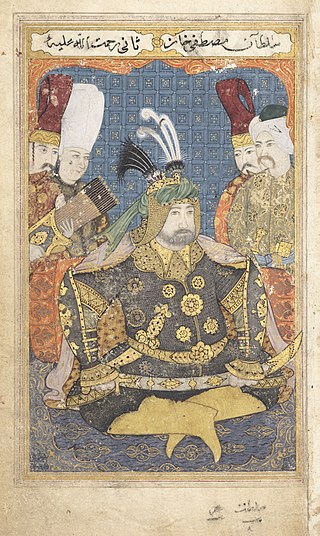
Mustafa II was the Sultan of the Ottoman Empire from 1695 to 1703.
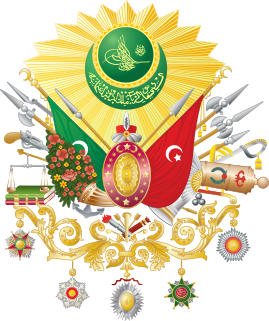
The sultans of the Ottoman Empire, who were all members of the Ottoman dynasty, ruled over the transcontinental empire from its perceived inception in 1299 to its dissolution in 1922. At its height, the Ottoman Empire spanned an area from Hungary in the north to rebel in the south and from Algeria in the west to Iraq in the east. Administered at first from the city of Söğüt since before 1280 and then from the city of Bursa since 1323 or 1324, the empire's capital was moved to Adrianople in 1363 following its conquest by Murad I and then to Constantinople in 1453 following its conquest by Mehmed II.

A caliphate or khilāfah is an institution or public office under the leadership of an Islamic steward with the title of caliph, a person considered a political-religious successor to the Islamic prophet Muhammad and a leader of the entire Muslim world (ummah). Historically, the caliphates were polities based on Islam which developed into multi-ethnic trans-national empires. During the medieval period, three major caliphates succeeded each other: the Rashidun Caliphate (632–661), the Umayyad Caliphate (661–750), and the Abbasid Caliphate (750–1258). In the fourth major caliphate, the Ottoman Caliphate, the rulers of the Ottoman Empire claimed caliphal authority from 1517. Throughout the history of Islam, a few other Muslim states, almost all hereditary monarchies such as the Mamluk Sultanate (Cairo) and Ayyubid Caliphate, have claimed to be caliphates.

Istanbul, formerly known as Constantinople, is the largest city in Turkey, serving as the country's economic, cultural and historic hub. The city straddles the Bosporus strait, lying in both Europe and Asia, and has a population of over 15 million residents, comprising 19% of the population of Turkey. Istanbul is the most populous European city, and the world's 15th-largest city.

Ahmed II was the Sultan of the Ottoman Empire from 1691 to 1695.

1703 (MDCCIII) was a common year starting on Monday of the Gregorian calendar and a common year starting on Friday of the Julian calendar, the 1703rd year of the Common Era (CE) and Anno Domini (AD) designations, the 703rd year of the 2nd millennium, the 3rd year of the 18th century, and the 4th year of the 1700s decade. As of the start of 1703, the Gregorian calendar was 11 days ahead of the Julian calendar, which remained in localized use until 1923.
Gunpowder Plot: The trial of Guy Fawkes and other conspirators begins, ending with their execution on January 31.
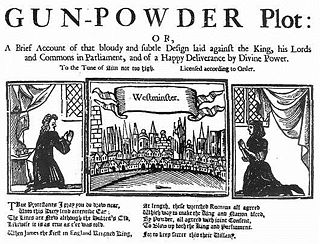
The Gunpowder Plot of 1605, in earlier centuries often called the Gunpowder Treason Plot or the Jesuit Treason, was a failed assassination attempt against King James I by a group of provincial English Catholics led by Robert Catesby who sought to restore the Catholic monarchy to England after decades of persecution against Catholics.

Guy Fawkes, also known as Guido Fawkes while fighting for the Spanish, was a member of a group of provincial English Catholics involved in the failed Gunpowder Plot of 1605. He was born and educated in York; his father died when Fawkes was eight years old, after which his mother married a recusant Catholic.
Clement VI issued the papal bull Unigenitus, justifying the power of the pope and the use of indulgences.
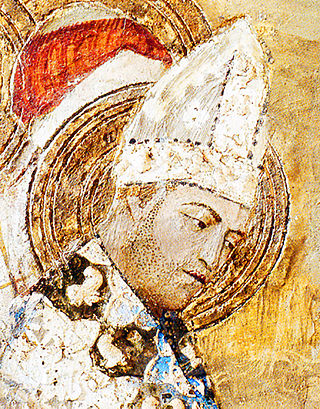
Pope Clement VI, born Pierre Roger, was head of the Catholic Church from 7 May 1342 to his death in December 1352. He was the fourth Avignon pope. Clement reigned during the first visitation of the Black Death (1348–1350), during which he granted remission of sins to all who died of the plague.

A papal bull is a type of public decree, letters patent, or charter issued by a pope of the Catholic Church. It is named after the leaden seal (bulla) that was traditionally appended to the end in order to authenticate it.

The pope, also known as supreme pontiff, Roman pontiff or sovereign pontiff, is the bishop of Rome, head of the worldwide Catholic Church, and has also served as the head of state or sovereign of the Papal States and later the Vatican City State since the eighth century. From a Catholic viewpoint, the primacy of the bishop of Rome is largely derived from his role as the apostolic successor to Saint Peter, to whom primacy was conferred by Jesus, who gave Peter the Keys of Heaven and the powers of "binding and loosing", naming him as the "rock" upon which the Church would be built. The current pope is Francis, who was elected on 13 March 2013.

In the teaching of the Catholic Church, an indulgence is "a way to reduce the amount of punishment one has to undergo for sins". The Catechism of the Catholic Church describes an indulgence as "a remission before God of the temporal punishment due to sins whose guilt has already been forgiven, which the faithful Christian who is duly disposed gains under certain prescribed conditions through the action of the Church which, as the minister of redemption, dispenses and applies with authority the treasury of the satisfactions of Christ and all of the saints".
Pope Clement VI issues the papal bull Unigenitus to justify the power of the pope and the use of indulgences. Nearly 200 years later, Martin Luther would protest this.

Pope Clement VI, born Pierre Roger, was head of the Catholic Church from 7 May 1342 to his death in December 1352. He was the fourth Avignon pope. Clement reigned during the first visitation of the Black Death (1348–1350), during which he granted remission of sins to all who died of the plague.

A papal bull is a type of public decree, letters patent, or charter issued by a pope of the Catholic Church. It is named after the leaden seal (bulla) that was traditionally appended to the end in order to authenticate it.

The pope, also known as supreme pontiff, Roman pontiff or sovereign pontiff, is the bishop of Rome, head of the worldwide Catholic Church, and has also served as the head of state or sovereign of the Papal States and later the Vatican City State since the eighth century. From a Catholic viewpoint, the primacy of the bishop of Rome is largely derived from his role as the apostolic successor to Saint Peter, to whom primacy was conferred by Jesus, who gave Peter the Keys of Heaven and the powers of "binding and loosing", naming him as the "rock" upon which the Church would be built. The current pope is Francis, who was elected on 13 March 2013.

In the teaching of the Catholic Church, an indulgence is "a way to reduce the amount of punishment one has to undergo for sins". The Catechism of the Catholic Church describes an indulgence as "a remission before God of the temporal punishment due to sins whose guilt has already been forgiven, which the faithful Christian who is duly disposed gains under certain prescribed conditions through the action of the Church which, as the minister of redemption, dispenses and applies with authority the treasury of the satisfactions of Christ and all of the saints".

Martin Luther was a German priest, theologian, author, hymnwriter, and professor. A former Augustinian friar, he is best known as the seminal figure in the Protestant Reformation and the namesake of Lutheranism.
Dante Alighieri is condemned in absentia and exiled from Florence.

Dante Alighieri, probably baptized Durante di Alighiero degli Alighieri and often referred to as Dante, was an Italian poet, writer and philosopher. His Divine Comedy, originally called Comedìa and later christened Divina by Giovanni Boccaccio, is widely considered one of the most important poems of the Middle Ages and the greatest literary work in the Italian language.

Florence is a city in Central Italy and the capital city of the Tuscany region. It is the most populated city in Tuscany, with 383,083 inhabitants in 2016, and over 1,520,000 in its metropolitan area.
Henry VI, the son and heir of the Holy Roman Emperor Frederick I, marries Constance of Sicily.

Henry VI, a member of the Hohenstaufen dynasty, was King of Germany from 1169 and Holy Roman Emperor from 1191 until his death. From 1194 he was also King of Sicily.
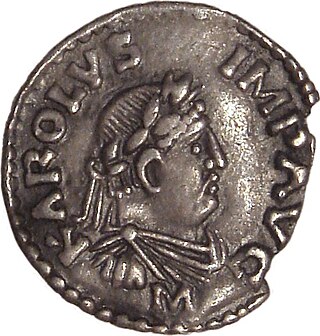
The Holy Roman Emperor, originally and officially the Emperor of the Romans during the Middle Ages, and also known as the German-Roman Emperor since the early modern period, was the ruler and head of state of the Holy Roman Empire. The title was held in conjunction with the title of king of Italy from the 8th to the 16th century, and, almost without interruption, with the title of king of Germany throughout the 12th to 18th centuries.

Frederick Barbarossa, also known as Frederick I, was the Holy Roman Emperor from 1155 until his death 35 years later. He was elected King of Germany in Frankfurt on 4 March 1152 and crowned in Aachen on 9 March 1152. He was crowned King of Italy on 24 April 1155 in Pavia and emperor by Pope Adrian IV on 18 June 1155 in Rome. Two years later, the term sacrum ("holy") first appeared in a document in connection with his empire. He was later formally crowned King of Burgundy, at Arles on 30 June 1178. He was named Barbarossa by the northern Italian cities which he attempted to rule: Barbarossa means "red beard" in Italian; in German, he was known as Kaiser Rotbart, which means "Emperor Redbeard" in English. The prevalence of the Italian nickname, even in later German usage, reflects the centrality of the Italian campaigns to his career.

Constance I was reigning Queen of Sicily from 1194–98, jointly with her spouse from 1194 to 1197, and with her infant son Frederick II, Holy Roman Emperor, in 1198, as the heiress of the Norman kings of Sicily. She was also Holy Roman Empress and later Dowager by marriage to Henry VI, Holy Roman Emperor.
Brothers Stephen and Constantine Lekapenos, having deposed their father as Byzantine emperor a few weeks earlier, were themselves overthrown by Constantine VII, their co-emperor.

Stephen Lekapenos or Lecapenus was the second son of the Byzantine emperor Romanos I Lekapenos, and co-emperor from 924 to 945. With his younger brother Constantine, he deposed Romanos I in December 944, but was overthrown and exiled by the legitimate emperor Constantine VII a few weeks later. Stephen lived out his life in exile on the island of Lesbos, where he died on Easter 963.

Constantine Lekapenos or Lecapenus was the third son of the Byzantine emperor Romanos I Lekapenos, and co-emperor from 924 to 945. With his elder brother Stephen, he deposed Romanos I in December 944, but was overthrown and exiled by the legitimate emperor Constantine VII a few weeks later. Constantine was exiled to the island of Samothrace, where he was killed while attempting to escape sometime between 946 and 948.

Romanos I Lekapenos, Latinized as Romanus I Lecapenus, was Byzantine emperor from 920 until his deposition in 944, serving as regent for the infant Constantine VII.

Constantine VII Porphyrogenitus was the fourth Emperor of the Macedonian dynasty of the Byzantine Empire, reigning from 6 June 913 to 9 November 959. He was the son of Emperor Leo VI and his fourth wife, Zoe Karbonopsina, and the nephew of his predecessor Alexander.
The co-emperors Stephen and Constantine are overthrown and forced to become monks by Constantine VII, who becomes sole emperor of the Byzantine Empire.

Stephen Lekapenos or Lecapenus was the second son of the Byzantine emperor Romanos I Lekapenos, and co-emperor from 924 to 945. With his younger brother Constantine, he deposed Romanos I in December 944, but was overthrown and exiled by the legitimate emperor Constantine VII a few weeks later. Stephen lived out his life in exile on the island of Lesbos, where he died on Easter 963.

Constantine Lekapenos or Lecapenus was the third son of the Byzantine emperor Romanos I Lekapenos, and co-emperor from 924 to 945. With his elder brother Stephen, he deposed Romanos I in December 944, but was overthrown and exiled by the legitimate emperor Constantine VII a few weeks later. Constantine was exiled to the island of Samothrace, where he was killed while attempting to escape sometime between 946 and 948.

Constantine VII Porphyrogenitus was the fourth Emperor of the Macedonian dynasty of the Byzantine Empire, reigning from 6 June 913 to 9 November 959. He was the son of Emperor Leo VI and his fourth wife, Zoe Karbonopsina, and the nephew of his predecessor Alexander.

The Byzantine Empire, also referred to as the Eastern Roman Empire or Byzantium, was the continuation of the Roman Empire in its eastern provinces during Late Antiquity and the Middle Ages, when its capital city was Constantinople. It survived the fragmentation and fall of the Western Roman Empire in the 5th century AD and continued to exist for an additional thousand years until the fall of Constantinople to the Ottoman Empire in 1453. During most of its existence, the empire remained the most powerful economic, cultural, and military force in Europe. The terms "Byzantine Empire" and "Eastern Roman Empire" were coined after the end of the realm; its citizens continued to refer to their empire as the Roman Empire, and to themselves as Romans—a term which Greeks continued to use for themselves into Ottoman times. Although the Roman state continued and its traditions were maintained, modern historians distinguish Byzantium from its earlier incarnation because it was centered on Constantinople, oriented towards Greek rather than Latin culture, and characterised by Eastern Orthodox Christianity.
Trajan succeeded his adoptive father Nerva as Roman emperor; the Roman Empire reached its maximum extent under his rule.
AD 98 (XCVIII) was a common year starting on Monday of the Julian calendar. At the time, it was known as the Year of the Consulship of Augustus and Traianus. The denomination AD 98 for this year has been used since the early medieval period, when the Anno Domini calendar era became the prevalent method in Europe for naming years.
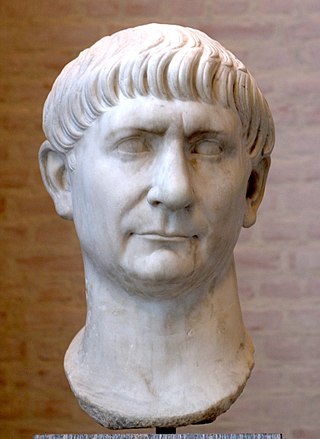
Trajan was Roman emperor from 98 to 117. Officially declared optimus princeps by the senate, Trajan is remembered as a successful soldier-emperor who presided over one of the greatest military expansions in Roman history and led the empire to attain its greatest territorial extent by the time of his death. He is also known for his philanthropic rule, overseeing extensive public building programs and implementing social welfare policies, which earned him his enduring reputation as the second of the Five Good Emperors who presided over an era of peace within the Empire and prosperity in the Mediterranean world.

Nerva was Roman emperor from 96 to 98. Nerva became emperor when aged almost 66, after a lifetime of imperial service under Nero and the succeeding rulers of the Flavian dynasty. Under Nero, he was a member of the imperial entourage and played a vital part in exposing the Pisonian conspiracy of 65. Later, as a loyalist to the Flavians, he attained consulships in 71 and 90 during the reigns of Vespasian and Domitian, respectively. On 18 September 96, Domitian was assassinated in a palace conspiracy involving members of the Praetorian Guard and several of his freedmen. On the same day, Nerva was declared emperor by the Roman Senate. As the new ruler of the Roman Empire, he vowed to restore liberties which had been curtailed during the autocratic government of Domitian.

The Roman emperor was the ruler of the Roman Empire during the imperial period. The emperors used a variety of different titles throughout history. Often when a given Roman is described as becoming "emperor" in English it reflects his taking of the title augustus. Another title often used was caesar, used for heirs-apparent, and imperator, originally a military honorific. Early emperors also used the title princeps civitatis. Emperors frequently amassed republican titles, notably princeps senatus, consul, and pontifex maximus.

The Roman Empire was the post-Republican period of ancient Rome. As a polity, it included large territorial holdings around the Mediterranean Sea in Europe, North Africa, and Western Asia, and was ruled by emperors. From the accession of Caesar Augustus as the first Roman emperor to the military anarchy of the 3rd century, it was a principate with Italia as the metropole of its provinces and the city of Rome as its sole capital. The Empire was later ruled by multiple emperors who shared control over the Western Roman Empire and the Eastern Roman Empire. The city of Rome remained the nominal capital of both parts until AD 476 when the imperial insignia were sent to Constantinople following the capture of the Western capital of Ravenna by the Germanic barbarians. The adoption of Christianity as the state church of the Roman Empire in AD 380 and the fall of the Western Roman Empire to Germanic kings conventionally marks the end of classical antiquity and the beginning of the Middle Ages. Because of these events, along with the gradual Hellenization of the Eastern Roman Empire, historians distinguish the medieval Roman Empire that remained in the Eastern provinces as the Byzantine Empire.
Trajan succeeds his adoptive father Nerva as Roman emperor; under his rule the Roman Empire will reach its maximum extent.
AD 98 (XCVIII) was a common year starting on Monday of the Julian calendar. At the time, it was known as the Year of the Consulship of Augustus and Traianus. The denomination AD 98 for this year has been used since the early medieval period, when the Anno Domini calendar era became the prevalent method in Europe for naming years.

Trajan was Roman emperor from 98 to 117. Officially declared optimus princeps by the senate, Trajan is remembered as a successful soldier-emperor who presided over one of the greatest military expansions in Roman history and led the empire to attain its greatest territorial extent by the time of his death. He is also known for his philanthropic rule, overseeing extensive public building programs and implementing social welfare policies, which earned him his enduring reputation as the second of the Five Good Emperors who presided over an era of peace within the Empire and prosperity in the Mediterranean world.

Nerva was Roman emperor from 96 to 98. Nerva became emperor when aged almost 66, after a lifetime of imperial service under Nero and the succeeding rulers of the Flavian dynasty. Under Nero, he was a member of the imperial entourage and played a vital part in exposing the Pisonian conspiracy of 65. Later, as a loyalist to the Flavians, he attained consulships in 71 and 90 during the reigns of Vespasian and Domitian, respectively. On 18 September 96, Domitian was assassinated in a palace conspiracy involving members of the Praetorian Guard and several of his freedmen. On the same day, Nerva was declared emperor by the Roman Senate. As the new ruler of the Roman Empire, he vowed to restore liberties which had been curtailed during the autocratic government of Domitian.

The Roman emperor was the ruler of the Roman Empire during the imperial period. The emperors used a variety of different titles throughout history. Often when a given Roman is described as becoming "emperor" in English it reflects his taking of the title augustus. Another title often used was caesar, used for heirs-apparent, and imperator, originally a military honorific. Early emperors also used the title princeps civitatis. Emperors frequently amassed republican titles, notably princeps senatus, consul, and pontifex maximus.

The Roman Empire was the post-Republican period of ancient Rome. As a polity, it included large territorial holdings around the Mediterranean Sea in Europe, North Africa, and Western Asia, and was ruled by emperors. From the accession of Caesar Augustus as the first Roman emperor to the military anarchy of the 3rd century, it was a principate with Italia as the metropole of its provinces and the city of Rome as its sole capital. The Empire was later ruled by multiple emperors who shared control over the Western Roman Empire and the Eastern Roman Empire. The city of Rome remained the nominal capital of both parts until AD 476 when the imperial insignia were sent to Constantinople following the capture of the Western capital of Ravenna by the Germanic barbarians. The adoption of Christianity as the state church of the Roman Empire in AD 380 and the fall of the Western Roman Empire to Germanic kings conventionally marks the end of classical antiquity and the beginning of the Middle Ages. Because of these events, along with the gradual Hellenization of the Eastern Roman Empire, historians distinguish the medieval Roman Empire that remained in the Eastern provinces as the Byzantine Empire.
Andy Devine, British TV actor (b. 1942) deaths
Peter Devine was a British actor primarily on television, whose best known role was Shadrach Dingle on one of ITV's long-running soap operas, Emmerdale. He played Shadrach on and off starting in 2000 and made his final appearance in July 2010. His credits have occasionally been confused with those of the American actor Andy Devine (1905–1977). Devine served in the Royal Navy in the 1960s, and was also a classical actor before going into the soaps.
Cloris Leachman, American actress and comedian (b. 1926) deaths

Cloris Leachman was an American actress and comedian whose career spanned nearly eight decades. She won many accolades, including eight Primetime Emmy Awards from 22 nominations, making her the most nominated and, along with Julia Louis-Dreyfus, most awarded performer in Emmy history. She won an Academy Award, a British Academy Film Award, a Golden Globe Award, and a Daytime Emmy Award.
Lina Ben Mhenni, Tunisian Internet activist and blogger (b. 1983) deaths

Lina Ben Mhenni was a Tunisian Internet activist, blogger and lecturer in linguistics at Tunis University. She was internationally recognised for her work during the 2011 Tunisian revolution and in the following years.
Countess Maya von Schönburg-Glauchau, German socialite (b. 1958) deaths
Countess Maria Felicitas von Schönburg-Glauchau, also known as Maya von Schönburg, was a German socialite.
Ingvar Kamprad, Founder of IKEA (b. 1926) deaths

Feodor Ingvar Kamprad was a Swedish billionaire business magnate best known for founding IKEA, a multinational retail company specialising in furniture. He lived in Switzerland from 1976 to 2014.

IKEA is a Swedish-Dutch multinational conglomerate based in the Netherlands that designs and sells ready-to-assemble furniture, kitchen appliances, decoration, home accessories, and various other goods and home services. Started in 1943 by Ingvar Kamprad, IKEA has been the world's largest furniture retailer since 2008. The brand used by the group is derived from an acronym that consists of the founder's initials, and those of Elmtaryd, the family farm where he was born, and the nearby village Agunnaryd.
Mort Walker, American cartoonist (b. 1923) deaths

Addison Morton Walker was an American comic strip writer, best known for creating the newspaper comic strips Beetle Bailey in 1950 and Hi and Lois in 1954. He signed Addison to some of his strips.
Emmanuelle Riva, French actress (b. 1927) deaths
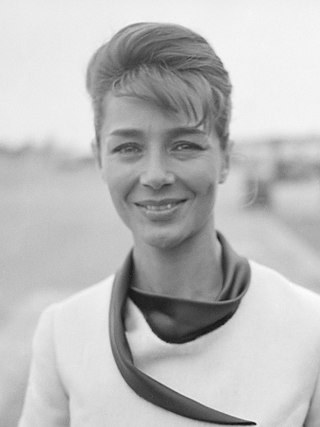
Emmanuelle Riva was a French actress, best known for her roles in the films Hiroshima mon amour (1959) and Amour (2012).
Arthur H. Rosenfeld, American physicist (b. 1926) deaths
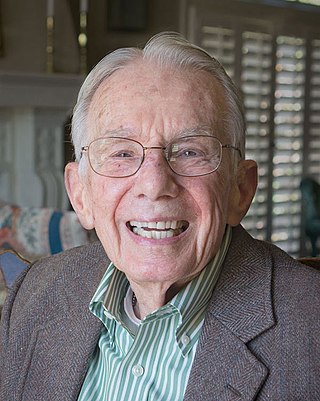
Arthur Hinton Rosenfeld was a UC Berkeley physicist and California energy commissioner, dubbed the "Godfather of Energy Efficiency", for developing new standards which helped improve energy efficiency in California and subsequently worldwide.
Carlos Loyzaga, Filipino basketball player and coach (b. 1930) deaths

Carlos "Caloy" Matute Loyzaga was a Filipino basketball player and coach. He was the most dominant basketball player of his era in the Philippines and is considered as the greatest Filipino basketball player of all time. Loyzaga was a two-time Olympian, as a member of the Philippine national team.
Rocky Bridges, American baseball player and coach (b. 1927) deaths

Everett Lamar "Rocky" Bridges was a middle infielder and third baseman with an 11-year career in Major League Baseball from 1951 to 1961. Bridges played for the Brooklyn Dodgers, Cincinnati Redlegs and St. Louis Cardinals of the National League, and the Washington Senators, Detroit Tigers, Cleveland Indians and Los Angeles Angels of the American League.
David Landau, English-Israeli journalist (b. 1947) deaths

David Landau OBE was a British/Israeli journalist and newspaper editor. Landau was editor-in-chief of the Israeli newspaper Haaretz from 2004 to 2008. He was the founder and editor-in-chief of the paper's English edition from 1997 to 2004. Before joining Haaretz in 1997, Landau was the diplomatic correspondent of The Jerusalem Post for 12 years, and its managing editor for four years. After leaving Haaretz Landau became the Israel correspondent for The Economist.
Joseph Rotman, Canadian businessman and philanthropist (b. 1935) deaths
Joseph Louis Rotman,, was a noted Canadian businessman and philanthropist. Rotman was the founder, benefactor and member of many successful organizations, such as the Clairvest Group Inc., the Rotman Research Institute, the Rotman School of Management, and the Rotman Institute of Philosophy. Throughout his life, he received three honorary degrees, as well as an induction into the Canadian Business Hall of Fame. He is well-regarded for donating his time and financial assistance to numerous philanthropic causes including the arts, education and healthcare.
Charles Hard Townes, American physicist and academic, Nobel Prize laureate (b. 1915) deaths

Charles Hard Townes was an American physicist. Townes worked on the theory and application of the maser, for which he obtained the fundamental patent, and other work in quantum electronics associated with both maser and laser devices. He shared the 1964 Nobel Prize in Physics with Nikolay Basov and Alexander Prokhorov. Townes was an adviser to the United States Government, meeting every US president from Harry S. Truman (1945) to Bill Clinton (1999).

The Nobel Prize in Physics is a yearly award given by the Royal Swedish Academy of Sciences for those who have made the most outstanding contributions for humankind in the field of physics. It is one of the five Nobel Prizes established by the will of Alfred Nobel in 1895 and awarded since 1901, the others being the Nobel Prize in Chemistry, Nobel Prize in Literature, Nobel Peace Prize, and Nobel Prize in Physiology or Medicine. Physics is traditionally the first award presented in the Nobel Prize ceremony.
Larry Winters, American wrestler and trainer (b. 1956) deaths

Larry Winters was an American professional wrestler and trainer who competed in the Midwest, Mid-Atlantic and East Coast independent circuit during the 1980s and 90s. He has wrestled in the American Wrestling Association, the National Wrestling Alliance, National Wrestling Federation, Pro Wrestling USA and the World Wrestling Council. It was reported on several wrestling websites that Winters died due to a heart attack January 27, 2015.
Pete Seeger, American singer-songwriter, guitarist and activist (b. 1919) deaths

Peter Seeger was an American folk singer and social activist. A fixture on nationwide radio in the 1940s, Seeger also had a string of hit records during the early 1950s as a member of the Weavers, notably their recording of Lead Belly's "Goodnight, Irene", which topped the charts for 13 weeks in 1950. Members of the Weavers were blacklisted during the McCarthy Era. In the 1960s, Seeger re-emerged on the public scene as a prominent singer of protest music in support of international disarmament, civil rights, counterculture, workers' rights, and environmental causes.
Epimaco Velasco, Filipino lawyer and politician, Governor of Cavite (b. 1935) deaths
Epimaco Ardina Velasco, popularly known as Epi, was a Filipino politician who served as DILG Secretary, governor of Cavite, and NBI Director. He was the first NBI Director who rose from the ranks and rose to prominence at the NBI with the killing of Number 1 Most Wanted Man in Cavite, Leonardo Manecio aka Nardong Putik.

The governor of Cavite is the local chief executive of the Province of Cavite in the Philippines.
Paul Zorner, German soldier and pilot (b. 1920) deaths

Paul Anton Guido Zorner, born Paul Zloch was a German night fighter pilot, who fought in the Luftwaffe during World War II. Zorner is credited with 59 night aerial victories claimed in 272 missions, including 110 night fighter missions. Zorner was the ninth most successful fighter pilot in the Luftwaffe and in the history of aerial warfare.
Ivan Bodiul, Ukrainian-Russian politician (b. 1918) deaths

Ivan Ivanovich Bodiul was a Soviet and Moldovan politician prominent in the Moldavian SSR, particularly during the Brezhnev era.
Stanley Karnow, American journalist and historian (b. 1925) deaths
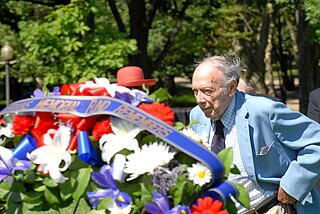
Stanley Abram Karnow was an American journalist and historian. He is best known for his writings on the Vietnam War.
Greg Cook, American football player and sportscaster (b. 1946) deaths

Gregory Lynn Cook was an American football quarterback who played two professional seasons, in the American Football League (AFL) and later the National Football League (NFL). He played college football for the University of Cincinnati and was selected 5th overall in the 1969 NFL/AFL draft. Once considered a rising star for the Cincinnati Bengals, he had his pro career prematurely ended by recurring shoulder troubles.
Ted Dicks, English composer and screenwriter (b. 1928) deaths
Edward Dicks was an English composer. He is best known for composing the music for the novelty songs "Right Said Fred" and "The Hole in the Ground". They were both Top 10 hits in the UK Singles Chart in 1962, recorded by Bernard Cribbins with lyrics by Myles Rudge, and produced by George Martin for Parlophone. Another song by Dicks and Rudge, "A Windmill in Old Amsterdam", was a million-seller hit in 1965 for Ronnie Hilton.
Jeannette Hamby, American nurse and politician (b. 1933) deaths
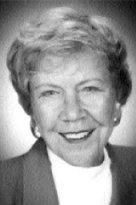
Jeannette Hamby was an American politician and nurse in Oregon. A native of Minnesota, she worked as an airline attendant, nurse, and educator before entering local politics. A Republican, she served in both chambers of the Oregon Legislature, winning re-election three times to the Oregon State Senate.
Kevin White, American politician, 51st Mayor of Boston (b. 1929) deaths

Kevin Hagan White was an American politician best known as the Mayor of Boston, an office to which he was first elected at the age of 38, and which he held for four terms, amounting to 16 years, from 1968 to 1984. He presided as mayor during racially turbulent years in the late 1960s and 1970s, and the start of desegregation of schools via court-ordered busing of school children in Boston. White won the mayoral office in the 1967 general election in a hard-fought campaign opposing the anti-busing and anti-desegregation Boston School Committee member Louise Day Hicks. Earlier he had been elected Massachusetts Secretary of the Commonwealth in 1960 at the age of 31, and he resigned from that office after his election as Mayor.

The mayor of Boston is the head of the municipal government in Boston, Massachusetts. Boston has a mayor–council government. Boston's mayoral elections are nonpartisan, and elect a mayor to a four-year term; there are no term limits. The mayor's office is in Boston City Hall, in Government Center.
Charlie Callas, American comedian and musician (b. 1927) deaths

Charlie Callas was an American actor and comedian. He was most commonly known for his work with Mel Brooks, Jerry Lewis, and Dean Martin, and his many stand-up appearances on television talk shows in the 1970s. He was also known for his role as Malcolm Argos, the restaurant owner and former con man, on the Eddie Albert and Robert Wagner television series Switch (1975–1978). Callas was also known as the voice of Elliott the Dragon in Disney's live-action/animated musical film Pete's Dragon (1977).
Zelda Rubinstein, American actress (b. 1933) deaths

Zelda May Rubinstein was an American actress and human rights activist, known as eccentric medium Tangina Barrons in the Poltergeist film series. Playing "Ginny", she was a regular on David E. Kelley's Emmy Award-winning television series Picket Fences for two seasons. She also made guest appearances in the TV show Poltergeist: The Legacy (1996), as seer Christina, and was the voice of Skittles candies in their long-running "Taste the Rainbow" ad campaign. Rubinstein was also known for her outspoken activism for little people and her early participation in the fight against HIV/AIDS.
J. D. Salinger, American soldier and author (b. 1919) deaths
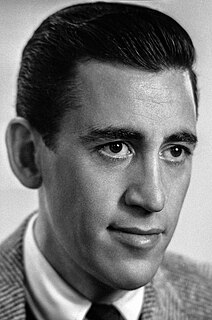
Jerome David Salinger was an American author best known for his 1951 novel The Catcher in the Rye. Salinger got his start in 1940, before serving in World War II, by publishing several short stories in Story magazine. In 1948, his critically acclaimed story "A Perfect Day for Bananafish" appeared in The New Yorker, which published much of his later work.
Howard Zinn, American historian, author, and activist (b. 1922) deaths

Howard Zinn was an American historian, playwright, philosopher, socialist thinker and World War II veteran. He was chair of the history and social sciences department at Spelman College, and a political science professor at Boston University. Zinn wrote over 20 books, including his best-selling and influential A People's History of the United States in 1980. In 2007, he published a version of it for younger readers, A Young People's History of the United States.
John Updike, American novelist, short story writer, and critic (b. 1932) deaths

John Hoyer Updike was an American novelist, poet, short-story writer, art critic, and literary critic. One of only four writers to win the Pulitzer Prize for Fiction more than once, Updike published more than twenty novels, more than a dozen short-story collections, as well as poetry, art and literary criticism and children's books during his career.
R. Venkataraman, Indian lawyer and politician, 8th President of India (b. 1910) deaths
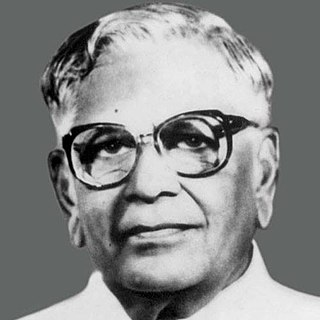
Ramaswamy Venkataraman was an Indian lawyer, Indian independence activist and politician who served as a Union Minister and as the eighth president of India. Venkataraman was born in Rajamadam village in Tanjore district, Madras Presidency. He studied law and practised in the Madras High Court and the Supreme Court of India. In his young age, he was an activist of the Indian independence movement and participated in the Quit India Movement. He was appointed as the member of the Constituent Assembly and the provisional cabinet. He was elected to the Lok Sabha four times and served as Union Finance Minister and Defence Minister. In 1984, he was elected as the seventh vice president of India and in 1987, he became the eighth President of India and served from 1987 to 1992. He also served as a State minister under K. Kamaraj and M. Bhaktavatsalam.

The president of India is the head of state of the Republic of India. The president is the nominal head of the executive, the first citizen of the country, as well as the commander-in-chief of the Indian Armed Forces. Droupadi Murmu is the 15th and current president, having taken office from 25 July 2022.
Suharto, Indonesian general and politician, 2nd President of Indonesia (b. 1921) deaths
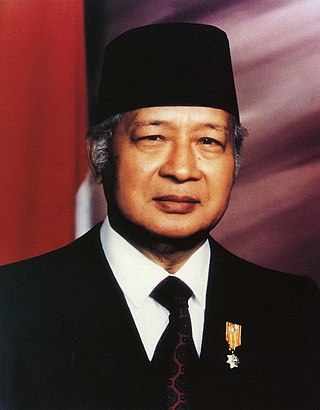
Suharto was an Indonesian army officer and politician, who served as the second and the longest serving president of Indonesia. Widely regarded as a military dictator by international observers, Suharto led Indonesia through a dictatorship for 31 years, from the fall of Sukarno in 1967 until his own resignation in 1998. The legacy of his 31-year rule, and his US$38 billion net worth, is still debated at home and abroad.

The President of the Republic of Indonesia is both the head of state and the head of government of the Republic of Indonesia. The president leads the executive branch of the Indonesian government and is the commander-in-chief of the Indonesian National Armed Forces. Since 2004, the president and vice president are directly elected to a five-year term, once renewable, allowing for a maximum of 10 years in office.
Gordon B. Hinckley, American religious leader and author, 15th President of The Church of Jesus Christ of Latter-day Saints (b. 1910) deaths
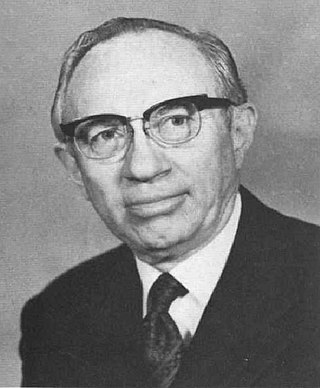
Gordon Bitner Hinckley was an American religious leader and author who served as the 15th President of the Church of Jesus Christ of Latter-day Saints from March 1995 until his death in January 2008 at age 97. Considered a prophet, seer, and revelator by church members, Hinckley was the oldest person to preside over the church in its history until Russell M. Nelson surpassed his age in 2022.

The President of the Church is the highest office of the Church of Jesus Christ of Latter-day Saints. It was the office held by Joseph Smith, the church's founder. The church's president is its leader and the head of the First Presidency, its highest governing body. Latter-day Saints consider the president of the church to be a "prophet, seer, and revelator" and refer to him as "the Prophet", a title that was originally given to Smith. When the name of the president is used by adherents, it is usually prefaced by the title "President". Russell M. Nelson has been the president since January 14, 2018.
Louie Welch, American businessman and politician, 54th Mayor of Houston (b. 1918) deaths

Louie Welch was an American politician who served from 1964 to 1973 as the mayor of Houston, Texas.

The following is a list of people who have served as mayor of the city of Houston in the U.S. state of Texas.
Yang Chuan-kwang, Taiwanese decathlete, long jumper, and hurdler (b. 1933) deaths

Yang Chuan-kwang, or C.K. Yang, was an Olympic decathlete from Taiwan. Yang attended college at UCLA where he trained and competed with team mate and Olympian Rafer Johnson and was coached by Elvin C. Drake.
Gene McFadden, American singer-songwriter and producer (b. 1948) deaths
Gene McFadden was an American singer, songwriter, and record producer. He is best known as one of the key members of the Philadelphia International record label, and was one-half of the successful team of McFadden & Whitehead with John Whitehead.
Johannes Rau, German journalist and politician, 8th President of Germany (b. 1931) deaths

Johannes Rau was a German politician (SPD). He was the president of Germany from 1 July 1999 until 30 June 2004 and the minister president of North Rhine-Westphalia from 20 September 1978 to 9 June 1998. In the latter role, he also served as president of the Bundesrat in 1982/83 and in 1994/95.
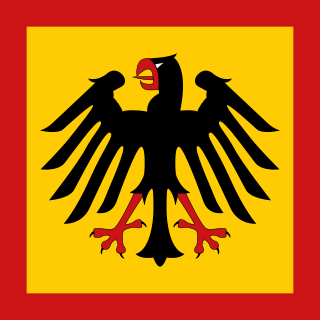
The president of Germany, officially the Federal President of the Federal Republic of Germany, is the head of state of Germany.
Salvador Laurel, Filipino lawyer and politician, 10th Vice President of the Philippines (b. 1928) deaths

Salvador Roman Hidalgo Laurel, also known as Doy Laurel, was a Filipino lawyer and politician who served as the vice president of the Philippines from 1986 to 1992 under President Corazon Aquino and briefly served as the last prime minister from February 25 to March 25, 1986, when the position was abolished. He was a major leader of the United Nationalist Democratic Organization (UNIDO), the political party that helped topple the dictatorship of President Ferdinand Marcos with the 1986 People Power Revolution.

The vice president of the Philippines is the second-highest official in the executive branch of the Philippine government. The vice president is directly elected by the people, and is one of only two nationally elected executive officials, the other being the president.
Jack Paar, American talk show host and author (b. 1918) deaths

Jack Harold Paar was an American talk show host, author, radio and television comedian, and film actor. He was the second host of The Tonight Show from 1957 to 1962. Time magazine's obituary of Paar reported wryly, "His fans would remember him as the fellow who split talk show history into two eras: Before Paar and Below Paar."
Henryk Jabłoński, Polish historian and politician, President of Poland (b. 1909) deaths

Henryk Jan Jabłoński was a Polish historian and politician. After 1948, he became a politician of the ruling Polish United Workers' Party, as well as a historian and professor at Warsaw University. He served as head of state of the People's Republic of Poland between 1972 and 1985.

The president of Poland, officially the president of the Republic of Poland, is the head of state of Poland. Their rights and obligations are determined in the Constitution of Poland. The president heads the executive branch. In addition, the president has a right to dissolve parliament in certain cases, can veto legislation and represents Poland in the international arena.
Cory Paix, Australian rugby league player births
Cory Paix is a professional rugby league footballer who plays as a hooker for the Brisbane Broncos in the NRL.
Friedrich Gulda, Austrian pianist and composer (b. 1930) deaths

Friedrich Gulda was an Austrian pianist and composer who worked in both the classical and jazz fields.
Ralph Yarborough, American colonel, lawyer, and politician (b. 1903) deaths

Ralph Webster Yarborough was an American politician and lawyer. He was a Texas Democratic politician who served in the United States Senate from 1957 to 1971 and was a leader of the progressive wing of his party. Along with Senate Majority Leader Lyndon B. Johnson and Speaker of the House Sam Rayburn, but unlike most Southern congressmen, Yarborough refused to support the 1956 Southern Manifesto, which called for resistance to the racial integration of schools and other public places. Yarborough voted in favor of the Civil Rights Acts of 1957, 1960, 1964, and 1968, as well as the 24th Amendment to the U.S. Constitution, the Voting Rights Act of 1965, and the confirmation of Thurgood Marshall to the U.S. Supreme Court. Yarborough was the only senator from a state that was part of the Confederacy to vote for all five bills.
Harrison Reed, English footballer births
Harrison James Reed is an English professional footballer who plays as a midfielder for Premier League club Fulham.
Jack Stephens, English footballer births

Jack Stephens is an English professional footballer who plays as a defender for Premier League club AFC Bournemouth on loan from Southampton.
Claude Akins, American actor (b. 1918) deaths

Claude Aubrey Akins was an American character actor with a long career on stage, screen, and television. He was best known as Sheriff Lobo on the 1979–1981 television series B. J. and the Bear, and later The Misadventures of Sheriff Lobo, a spin-off series.
André the Giant, French professional wrestler and actor (b. 1946) deaths

André René Roussimoff, better known by his ring name André the Giant, was a French professional wrestler and actor. Roussimoff was known for his great size, which was a result of gigantism caused by excess growth hormone. It also led to him being called "The Eighth Wonder of the World".
Stefano Pettinari, Italian footballer births
Stefano Pettinari is an Italian professional footballer who plays as an attacking midfielder or striker for Ternana.
Christian Bickel, German footballer births

Christian Bickel is a German professional footballer who plays for an amateur side SV Blau-Weiß 91 Bad Frankenhausen as a midfielder.
Sebastine Ikahihifo, New Zealand rugby league player births

Sebastine Ikahihifo is a New Zealand professional rugby league footballer who plays as a prop and loose forward for the Huddersfield Giants in the Betfred Super League.
Alberto Botía, Spanish footballer births

Alberto Tomás Botía Rabasco is a Spanish professional footballer who plays as a central defender for Saudi Arabian club Al Wehda FC.
Thomas Sopwith, English ice hockey player and pilot (b. 1888) deaths
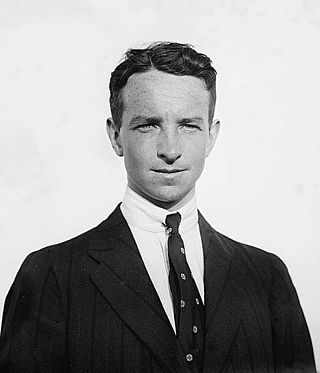
Sir Thomas Octave Murdoch Sopwith, CBE, Hon FRAeS was an English aviation pioneer, businessman and yachtsman.
Kerlon, Brazilian footballer births
Kerlon Moura Souza is a Brazilian former professional footballer who played as an attacking midfielder. After retiring, he worked as a coach at Olé Soccer in the United States.
Massa Makan Diabaté, Malian historian, author, and playwright (b. 1938) deaths

Massa Makan Diabaté was a Malian historian, author, and playwright.
Katy Rose, American singer-songwriter and producer births
Kathryn Rosemary Bullard, known professionally as Katy Rose, is an American singer-songwriter and producer. Rose released two studio albums, Because I Can and Candy Eyed. Since her last album, Rose has released eight independent singles.
Anton Shunin, Russian footballer births

Anton Vladimirovich Shunin is a Russian footballer who plays as a goalkeeper for Dynamo Moscow and the Russian national team.
Norman McLaren, Scottish-Canadian animator and director (b. 1914) deaths

William Norman McLaren, was a Scottish Canadian animator, director and producer known for his work for the National Film Board of Canada (NFB). He was a pioneer in a number of areas of animation and filmmaking, including hand-drawn animation, drawn-on-film animation, visual music, abstract film, pixilation and graphical sound. McLaren was also an artist and printmaker, and explored his interest in dance in his films.
Lilli Palmer, German-American actress (b. 1914) deaths

Lilli Palmer was a German actress and writer. After beginning her career in British films in the 1930s, she would later transition to major Hollywood productions, earning a Golden Globe Award nomination for her performance in But Not for Me (1959).
Vince Mellars, New Zealand rugby league player births

Vincent "Vinny" Mellars is a New Zealand rugby league and rugby union footballer who plays in the Centres. He has previously played in the NRL, Super League and Air New Zealand Cup and in the RFL Championship for Featherstone Rovers.
Carlo Colaiacovo, Canadian ice hockey player births

Carlo Colaiacovo is a Canadian former professional ice hockey defenceman who is currently co-hosting a show on Canada’s TSN 1050 radio station, First Up with Korolnek and Colaiacovo. He most recently played for Adler Mannheim in the Deutsche Eishockey Liga (DEL). Colaiacovo has an identical twin brother, Paulo Colaiacovo, who has also played professional ice hockey, as a goaltender.
Paulo Colaiacovo, Canadian ice hockey player births
Paulo Colaiacovo is a Canadian former professional ice hockey goaltender. He is the identical twin brother of National Hockey League defenceman Carlo Colaiacovo. He was born in Toronto, Ontario.
Gavin Floyd, American baseball player births

Gavin Christopher Floyd, is an American former professional baseball pitcher, who played in Major League Baseball (MLB) for the Philadelphia Phillies, Chicago White Sox, Atlanta Braves, Cleveland Indians, and Toronto Blue Jays.
Lee Grant, English footballer births

Lee Anderson Grant is an English football coach and former professional footballer, who is a first-team coach at EFL League One side Ipswich Town.
Louis de Funès, French actor and screenwriter (b. 1914) deaths
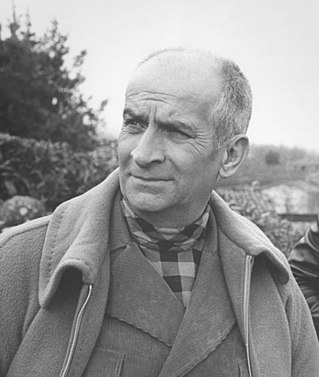
Louis Germain David de Funès de Galarza was a French actor and comedian. He is France's favourite actor, according to a series of polls conducted since the late 1960s, having played over 150 roles in film and over 100 on stage. His acting style is remembered for its high-energy performance and his wide range of facial expressions and tics. A considerable part of his best-known acting was directed by Jean Girault.
Eva Asderaki, Greek tennis umpire births
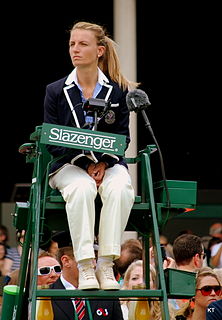
Eva Asderaki, also known by her married name Eva Asderaki-Moore, is a Greek tennis umpire, who has umpired international tennis matches since 2001. She has umpired at all four Grand Slam tournaments, and in 2015, she became the first woman to umpire a men's US Open tennis final.
Trần Văn Hương, South Vietnamese politician, 3rd President of South Vietnam, 3rd Vice President of South Vietnam, and 3rd Prime Minister of South Vietnam (b. 1902) deaths

Trần Văn Hương was a South Vietnamese politician who was the penultimate president of South Vietnam for a week in April 1975 prior to its surrender to the communist forces of North Vietnam. Prior to that, he was prime minister for three months from November 1964 to January 1965 under the supervision of a military junta led by General Nguyen Khanh; during this time, there was widespread civil unrest from the Buddhist majority and power struggles with the military.

This is a list of leaders of South Vietnam, since the establishment of the Autonomous Republic of Cochinchina in 1946, and the division of Vietnam in 1954 until the fall of the Republic of Vietnam in 1975, and the reunification of Vietnam in 1976.
Alicia Molik, Australian tennis player and sportscaster births

Alicia Molik is an Australian former professional tennis player. She reached a career-high singles ranking of world No. 8.
Tony Woodcock, New Zealand rugby player births

Tony Dale Woodcock is a New Zealand former rugby union player. His position was loosehead prop, and he played 111 tests for the New Zealand national team, the All Blacks. Woodcock played for the All Blacks from 2002 to 2015, scoring eight test tries. He was described by The Dominion Post as "widely regarded as the world's premier loosehead", and by The New Zealand Herald as having the "best range of skills of any prop on the planet". He is now the most capped All Black prop of all time, and is the second most capped player in Blues history, behind Keven Mealamu. He was a key member of the 2011 and 2015 Rugby World Cup winning squads, becoming one of only 20 players to have won multiple Rugby World Cups.
Chanda Gunn, American ice hockey player and coach births
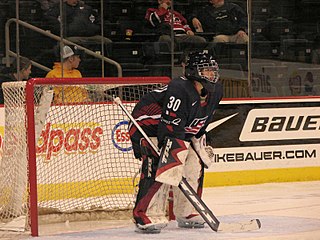
Chanda Leigh Gunn is an American ice hockey player. She won a bronze medal at the 2006 Winter Olympics. At the games in Turin, she played close to 250 minutes and had 50 saves with a save percentage of 89.3%.
Marat Safin, Russian tennis player and politician births

Marat Mubinovich Safin is a Russian retired world No. 1 tennis player and former politician. He achieved the Association of Tennis Professionals (ATP) world No. 1 singles ranking on 20 November 2000. Safin is also the older brother of former WTA world No. 1 player Dinara Safina. They are the only brother-sister tandem in tennis history who have both achieved No. 1 rankings. Safin began his professional tennis career in 1997, and held the No. 1 ranking for a total of 9 weeks between November 2000 and April 2001. He won his first Grand Slam title at the 2000 US Open, defeating Pete Sampras in the final, and won the 2005 Australian Open, defeating Lleyton Hewitt in the final. Safin helped lead Russia to Davis Cup victories in 2002 and 2006. Despite his dislike of grass courts, he became the first Russian man to reach the semifinals of Wimbledon at the 2008 Wimbledon Championships, where he lost to Roger Federer. At the time of his retirement in November 2009, he was ranked world No. 61. In 2011, he became a member of the State Duma representing the United Russia party. In 2016, he became the first Russian tennis player inducted into the International Tennis Hall of Fame.
Daniel Vettori, New Zealand cricketer and coach births

Daniel Luca Vettori is a New Zealand cricket coach and former cricketer who played for the New Zealand national cricket team. He was the 200th player to win their Test cricket cap for New Zealand.
Victoria Ocampo. Argentine writer (b. 1890) deaths

Ramona Victoria Epifanía Rufina Ocampo was an Argentine writer and intellectual. Best known as an advocate for others and as publisher of the literary magazine Sur, she was also a writer and critic in her own right and one of the most prominent South American women of her time. Her sister is Silvina Ocampo, also a writer.
Pete Laforest, Canadian-American baseball player and manager births

Pierre-Luc "Pete" Laforest is a Canadian former professional baseball catcher and was the first manager of the Trois-Rivières Aigles.
Ahn Jung-hwan, South Korean footballer births
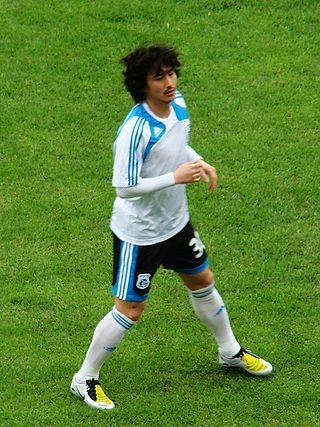
Ahn Jung-hwan is a South Korean former football player and television personality. Ahn played for South Korea as a second striker and scored a total of three goals in two FIFA World Cups, including a golden goal against Italy. After his retirement as a footballer, he became an entertainer and a football commentator.
Danielle George MBE FIET, American professor births

Danielle Amanda George is a Professor of Radio frequency engineering in the Department of Electrical and Electronic Engineering (EEE) and Associate Dean for Teaching and Learning at the University of Manchester in the UK. George became the 139th President of the Institution of Engineering and Technology in October 2020.

The Most Excellent Order of the British Empire is a British order of chivalry, rewarding contributions to the arts and sciences, work with charitable and welfare organisations, and public service outside the civil service. It was established on 4 June 1917 by King George V and comprises five classes across both civil and military divisions, the most senior two of which make the recipient either a knight if male or dame if female. There is also the related British Empire Medal, whose recipients are affiliated with, but not members of, the order.

Fellow of the UK Institution of Engineering and Technology (FIET) is the highest grade of Institution of Engineering and Technology membership, awarded to those who have sustained high levels of achievement, for several years.
Bill Walsh, American screenwriter and producer (b. 1913) deaths
William Crozier Walsh was a film producer, screenwriter and comics writer who primarily worked on live-action films for Walt Disney Productions. He was born in New York City. For his work on Mary Poppins, he shared Academy Award nominations for Best Picture with Walt Disney, and for Best Writing, Screenplay Based on Material from Another Medium with Don DaGradi. He also wrote the Mickey Mouse comic strip for more than two decades. He died in Los Angeles and was interred in Glendale's Forest Lawn Memorial Park Cemetery.
Ole Einar Bjørndalen, Norwegian skier and biathlete births

Ole Einar Bjørndalen is a retired Norwegian professional biathlete and coach, often referred to by the nickname, the "King of Biathlon". With 13 Winter Olympic Games medals, he is second on the list of multiple medalists behind Marit Bjørgen who has won 15 medals. He is also the most successful biathlete of all time at the Biathlon World Championships, having won 45 medals, more than double that of any other biathlete except Martin Fourcade. With 95 World Cup wins, Bjørndalen is ranked first all-time for career victories on the Biathlon World Cup tour, more than twice that of anyone else but Fourcade. He has won the Overall World Cup title six times, in 1997–98, in 2002–03, in 2004–05, in 2005–06, in 2007–08 and in 2008–09.
Andrei Pavel, Romanian tennis player and coach births
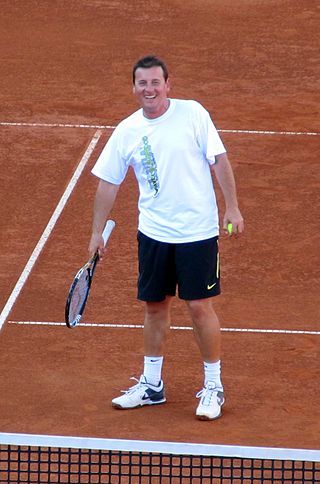
Andrei Pavel is a Romanian tennis coach and former professional tennis player.
Chaminda Vaas, Sri Lankan cricketer and coach births

Deshabandu Warnakulasuriya Patabendige Ushantha Gerald Joseph Chaminda Vaas is a former Sri Lankan international cricketer, who played all forms of the game, and a former ODI captain who is often described as the greatest fast medium bowler Sri Lanka has produced, due to his highly accurate lines, lengths and capability of swinging the ball. Vaas currently holds the record for the best bowling figures in ODI history, and is the only bowler to take an 8-wicket haul in ODIs.
Georgios Grivas, Cypriot general (b. 1898) deaths

Georgios Grivas, also known by his nickname Digenis, was a Cypriot general in the Hellenic Army and the leader of the Organization X (1942-1949), EOKA (1955-1959) and EOKA B (1971-1974) organisations.
Valyantsin Byalkevich, Belarusian footballer and manager (d. 2014) births

Valyantsin Byalkevich, also referred to as Valiantsin Bialkevich, was a Belarusian professional footballer who played as a midfielder. He spent the majority of his career with Ukrainian club Dynamo Kyiv, where he was predominantly used as a playmaker, and was part of the team that reached the semi-finals of 1998–99 UEFA Champions League.
William Nolde, American colonel (b. 1929) deaths

Colonel William Benedict Nolde was an officer in the United States Army. Born in Menominee, Michigan, Nolde was a professor of military science at Central Michigan University before joining the army. He is known for being the last official American combat casualty of the Vietnam War: the 45,914th confirmed death and 57,597th in the total list of Americans killed during the conflict. Nolde was killed by artillery fire eleven hours before the cessation of all hostilities in accordance with the Paris Peace Accords.
Bibi Gaytán, Mexican singer and actress births

Bibi Gaytán is a Mexican singer and actress. Since she was born, she has lived in Villahermosa, Tabasco and she considers herself "Tabasqueña".
Mahalia Jackson, American singer (b. 1911) deaths

Mahalia Jackson was an American gospel singer, widely considered one of the most influential vocalists of the 20th century. With a career spanning 40 years, Jackson was integral to the development and spread of gospel blues in black churches throughout the U.S. During a time when racial segregation was pervasive in American society, she met considerable and unexpected success in a recording career, selling an estimated 22 million records and performing in front of integrated and secular audiences in concert halls around the world.
Patrice Brisebois, Canadian ice hockey player and coach births

Joseph Jean-Guy Patrice Brisebois is a Canadian former professional ice hockey defenceman for the Montreal Canadiens and Colorado Avalanche, playing nearly 900 games with the former and 1,009 games overall. Brisebois was recently the Canadiens' Director of Player Development.
Jacobo Árbenz, Guatemalan captain and politician, President of Guatemala (b. 1913) deaths

Juan Jacobo Árbenz Guzmán was a Guatemalan military officer and politician who served as the 25th President of Guatemala. He was Minister of National Defense from 1944 to 1950, and the second democratically elected President of Guatemala, from 1951 to 1954. He was a major figure in the ten-year Guatemalan Revolution, which represented some of the few years of representative democracy in Guatemalan history. The landmark program of agrarian reform Árbenz enacted as president was very influential across Latin America.
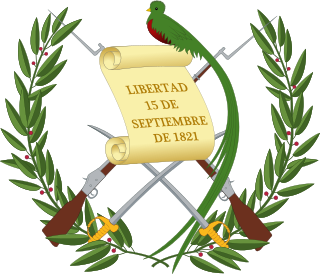
The president of Guatemala, officially known as the President of the Republic of Guatemala, is the head of state and head of government of Guatemala, elected to a single four-year term. The position of President was created in 1839.
Bradley Clyde, Australian rugby league player births

Bradley Clyde is an Australian former professional rugby league footballer who played in the 1980s, 1990s and 2000s who, at the peak of his playing career was widely acknowledged as the best lock in the game. He represented both New South Wales, and played for the Australian national side, and played his club football in Australia for the Canberra Raiders and Canterbury-Bankstown Bulldogs, and in England for Leeds Rhinos.
Dean Headley, English cricketer and coach births
Dean Warren Headley is a former English professional cricketer who played international cricket for the England cricket team in the 1990s.
Rocco D'Assunta, Italian actor, comedian and playwright (b. 1904) deaths
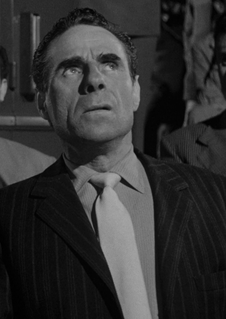
Rocco D'Assunta was an Italian actor, comedian and playwright.
Marietta Blau, Austrian physicist and academic (b. 1894) deaths
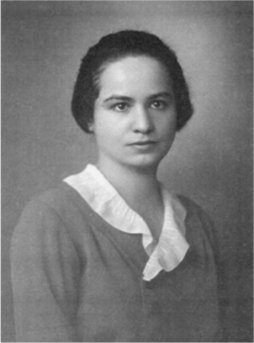
Marietta Blau was an Austrian physicist credited with developing photographic nuclear emulsions that were usefully able to image and accurately measure high-energy nuclear particles and events, significantly advancing the field of particle physics in her time. For this, she was awarded the Lieben Prize by the Austrian Academy of Sciences. As a Jew, she was forced to flee Austria when Nazi Germany annexed it in 1938, eventually making her way to the United States. She was nominated for Nobel Prizes in both physics and chemistry for her work, but did not win. After her return to Austria, she won the Erwin Schrödinger Prize from the Austrian Academy of Sciences.
Michael Kulas, Canadian singer-songwriter and producer births
Michael Wade Kulas is a Canadian singer, songwriter and music producer who was a member of the English rock band James between 1997 and 2001.
Patton Oswalt, American comedian and actor births

Patton Peter Oswalt is an American stand-up comedian, actor and writer. He is known as Spence Olchin in the sitcom The King of Queens (1998–2007) and narrated the sitcom The Goldbergs (2013–present) as adult Adam F. Goldberg. After making his acting debut in the Seinfeld episode "The Couch", he has since appeared in a variety of television series, such as Parks and Recreation, Community, Two and a Half Men, Drunk History, Reno 911!, Mystery Science Theater 3000, Archer, Veep, Justified, Kim Possible, and Brooklyn Nine-Nine, portraying Principal Ralph Durbin in A.P. Bio (2018–2021) and Matthew the Raven in the TV series The Sandman (2022–present).
Shane Thomson, New Zealand cricketer births
Shane Alexander Thomson is a former New Zealand international cricketer. He played as a genuine all-rounder, making 19 Test and 56 One Day International appearances for New Zealand.
Tracy Lawrence, American country singer births

Tracy Lee Lawrence is an American country music singer, songwriter, and record producer. Born in Atlanta, Texas, and raised in Foreman, Arkansas, Lawrence began performing at age 15 and moved to Nashville, Tennessee, in 1990 to begin his country music career. He signed to Atlantic Records Nashville in 1991 and made his debut late that year with the album Sticks and Stones. Five more studio albums, as well as a live album and a compilation album, followed throughout the 1990s and into 2000 on Atlantic before the label's country division was closed in 2001. Afterward, he recorded for Warner Bros. Records, DreamWorks Records, Mercury Records Nashville, and his own labels, Rocky Comfort Records and Lawrence Music Group.
Mike Patton, American singer, composer, and voice artist births

Michael Allan Patton is an American singer, producer, film composer and voice actor, best known as the lead vocalist of the alternative metal band Faith No More. Noted for his vocal proficiency, diverse singing techniques, wide range of projects, style-transcending influences, eccentric public image and contempt for the music industry, Patton has earned critical praise and influenced many contemporary singers. Patton is also co-founder and lead vocalist of Mr. Bungle, and has played with Tomahawk, Fantômas, Moonchild Trio, Kaada/Patton, Dead Cross, Lovage, Mondo Cane, and Peeping Tom. Consistent collaborators through his varied career include avant-garde jazz saxophonist John Zorn, hip hop producer Dan the Automator and classical violinist Eyvind Kang.
Matt Stover, American football player births

John Matthew Stover is a former American football placekicker who played in the National Football League (NFL) for 20 seasons, primarily with the Baltimore Ravens. After five seasons for the Cleveland Browns, he was among the Browns players transferred to the newly-created Ravens franchise in 1996, with whom he played 13 seasons. Additionally, Stover was a member of the New York Giants during his first season and Indianapolis Colts during his last. His most successful season was in 2000 when he earned Pro Bowl and first-team All-Pro honors en route to the Ravens winning their first Super Bowl title in Super Bowl XXXV. He was also part of the Giants team that won Super Bowl XXV. For his accomplishments with the Ravens, Stover was named to the Baltimore Ravens Ring of Honor in 2011.
Dave Manson, Canadian ice hockey player and coach births

David Michael Manson is a Canadian former professional ice hockey defenceman who played in the National Hockey League (NHL) with several teams. He is an assistant coach with the Edmonton Oilers of the National Hockey League (NHL).
crew of Apollo 1 deaths

Roger Bruce Chaffee was an American naval officer, aviator and aeronautical engineer who was a NASA astronaut in the Apollo program.
crew of Apollo 1 deaths

Virgil Ivan "Gus" Grissom was an American engineer, pilot in the United States Air Force, and member of the Mercury Seven selected by National Aeronautics and Space Administration's (NASA) as Project Mercury astronauts to be the first Americans in outer space. He was a Project Gemini and an Apollo program astronaut. As a member of the NASA Astronaut Corps, Grissom was the second American to fly in space in 1961. He was also the second American to fly in space twice, preceded only by Joe Walker with his sub-orbital X-15 flights.
crew of Apollo 1 deaths

Edward Higgins White II was an American aeronautical engineer, United States Air Force officer, test pilot, and NASA astronaut. He was a member of the crews of Gemini 4 and Apollo 1.
Alphonse Juin, Algerian-French general (b. 1888) deaths

Alphonse Pierre Juin was a senior French Army general who became Marshal of France. A graduate of the École Spéciale Militaire class of 1912, he served in Morocco in 1914 in command of native troops. Upon the outbreak of the First World War, he was sent to the Western Front in France, where he was gravely wounded in 1915. As a result of this wound, he lost the use of his right arm.
Tamlyn Tomita, Japanese-American actress and singer births
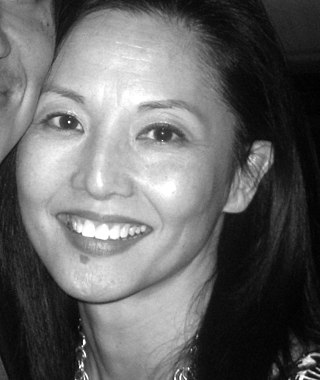
Tamlyn Naomi Tomita is a Japanese-American actress and singer. She made her screen debut as Kumiko in The Karate Kid Part II (1986) and reprised the character for the streaming series Cobra Kai (2021). She is also well known for her role as Waverly in The Joy Luck Club (1993). Additional films include Come See the Paradise (1990), Picture Bride (1994), Four Rooms (1995), Robot Stories (2003), The Day After Tomorrow (2004) and Gaijin 2: Love Me as I Am (2005).
Alan Cumming, Scottish-American actor births

Alan Cumming is a British actor. His London stage appearances include Hamlet, the Maniac in Accidental Death of an Anarchist, the lead in Bent, The National Theatre of Scotland's The Bacchae and Samuel Beckett's Endgame at The Old Vic, opposite Daniel Radcliffe. On Broadway, he has appeared in The Threepenny Opera, as the master of ceremonies in Cabaret, Design for Living, and a one-man adaptation of Macbeth.
Mike Newell, English footballer and manager births
Michael Colin Newell is an English football manager and former professional footballer.
Ignacio Noé, Argentinian author and illustrator births
Ignacio Noé, usually known simply as Noé, is an artist in a wide range of graphic genres, working in comics, children's books, magazine illustration and erotic comics, in a highly rendered style that utilizes both digital and traditional media. His works include "The Piano Tuner", "Ship of Fools" and most notably "The Convent of Hell".
Attila Sekerlioglu, Austrian footballer and manager births
Attila Sekerlioglu is a retired Austrian footballer of Turkish descent. He played in midfield. After retiring, he moved into management. He has most recently been manager of Austrian club SV Stockerau. He is now a scout for Bayern Munich.
Abraham Walkowitz, American painter (b. 1878) deaths

Abraham Walkowitz was a Russian-American painter grouped in with early American Modernists working in the Modernist style. While never attaining the same level of fame as his contemporaries, Walkowitz' close relationship with the 291 Gallery and Alfred Stieglitz placed him at the center of the modernist movement. His early abstract cityscapes and collection of over 5,000 drawings of Isadora Duncan also remain significant art historical records.
Patrick van Deurzen, Dutch composer and academic births

Patrick van Deurzen is a Dutch composer.
Bridget Fonda, American actress births
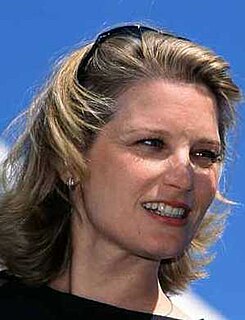
Bridget Jane Fonda Elfman is an American actress. She is known for her roles in The Godfather Part III (1990), Single White Female (1992), Singles (1992), Point of No Return (1993), It Could Happen to You (1994), and Jackie Brown (1997). She is the daughter of Peter Fonda, niece of Jane Fonda, and granddaughter of Henry Fonda. Fonda was nominated for a Golden Globe Award for Best Supporting Actress for playing Mandy Rice-Davies in the 1989 film Scandal and provided the voice for Jenna in the 1995 animated feature film Balto. She received an Emmy Award nomination for the 1997 TV film In the Gloaming, and a second Golden Globe Award nomination for the 2001 TV film No Ordinary Baby.
George Monbiot, English-Welsh author and activist births

George Joshua Richard Monbiot is a British writer known for his environmental and political activism. He writes a regular column for The Guardian and is the author of a number of books.
John Farrow, Australian-American director, producer, and screenwriter (b. 1904) deaths
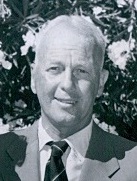
John Villiers Farrow, KGCHS was an Australian film director, producer, and screenwriter. Spending a considerable amount of his career in the United States, in 1942 he was nominated for the Academy Award for Best Director for Wake Island, and in 1957 he won the Academy Award for Best Adapted Screenplay for Around the World in Eighty Days. He had seven children by his wife, actress Maureen O'Sullivan, including actress Mia Farrow.
Roberto Paci Dalò, Italian director and composer births

Roberto Paci Dalò is an Italian author, composer and musician, film maker and theatre director, sound and visual artist, radio-maker. He is the co-founder and director of the performing arts ensemble Giardini Pensili and he has been the artistic director of Wikimania 2016 Esino Lario. He won the Premio Napoli per la lingua e la cultura italiana in 2015.
Narciso Rodriguez, American fashion designer births

Narciso Jesus Rodriguez III is an American fashion designer.
Margo Timmins, Canadian singer-songwriter births

Margo Timmins is the lead vocalist of Canadian alternative country and folk rock band Cowboy Junkies. She is the sister of Michael Timmins, the band's lead guitarist, and Peter Timmins, the band's drummer. Her ethereal vocals, paired with the band's spare and low-key instrumentation played at a relaxed pace, lend the band its unique atmospheric sound.
Bernard Friedberg, Austrian scholar and author (b. 1876) deaths
Bernard Friedberg was an Austrian Hebraist, scholar and bibliographer.
Fiona O'Donnell, Canadian-Scottish politician births

Fiona O'Donnell is a Scottish Labour Party politician who served as the Member of Parliament (MP) for East Lothian from 2010 to 2015.
Cris Collinsworth, American football player and sportscaster births

Anthony Cris Collinsworth is an American sports broadcaster and former professional American football player. Collinsworth was a wide receiver in the National Football League (NFL) for eight seasons (1981-1988), all with the Cincinnati Bengals. He played college football at the University of Florida, where he was recognized as an All-American. He is currently a television sportscaster for NBC, Showtime, and the NFL Network, and winner of 17 Sports Emmy Awards. He is also the majority owner of Pro Football Focus.
Göran Hägglund, Swedish lawyer and politician, 28th Swedish Minister for Social Affairs births

Bo Göran Hägglund is a Swedish politician of the Christian Democrats. He was Leader of the Christian Democrats from 2004 to 2015, Member of the Riksdag from 1991 to 2015, and served as Minister for Social Affairs from 2006 to 2014.

The Minister of Health and Social Affairs or Social minister is the chief of the Ministry of Health and Social Affairs in the government of Sweden.
Keith Olbermann, American journalist and author births

Keith Theodore Olbermann is an American sports and political commentator and writer.
James Grippando, American lawyer and author births
James Grippando is an American novelist and lawyer best known as the 2017 winner of the Harper Lee Prize for Legal Fiction.
Alan Milburn, English businessman and politician, Chancellor of the Duchy of Lancaster births

Alan Milburn is a British Labour Party politician who was Member of Parliament (MP) for Darlington from 1992 to 2010. He served for five years in the Cabinet, first as Chief Secretary to the Treasury from 1998 to 1999, and subsequently as Secretary of State for Health until 2003, when he resigned. He briefly rejoined the Cabinet as Chancellor of the Duchy of Lancaster in order to manage Labour's 2005 re-election campaign. He did not seek re-election in the 2010 election.

The chancellor of the Duchy of Lancaster is a ministerial office in the Government of the United Kingdom. The position is currently sixth in the ministerial ranking and is the second highest ranking minister in the Cabinet Office, immediately after the Prime Minister, and senior to the Minister for the Cabinet Office. The role includes as part of its duties the administration of the estates and rents of the Duchy of Lancaster.
Janick Gers, English guitarist and songwriter births
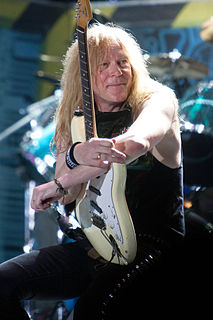
Janick Robert Gers is an English musician who is best known as one of the three guitarists in heavy metal band Iron Maiden. He initially joined to replace Adrian Smith, but remained in the band after Smith rejoined. Gers was previously a member of Gillan and co-founder of the band White Spirit in 1975.
Frank Miller, American illustrator, director, producer, and screenwriter births
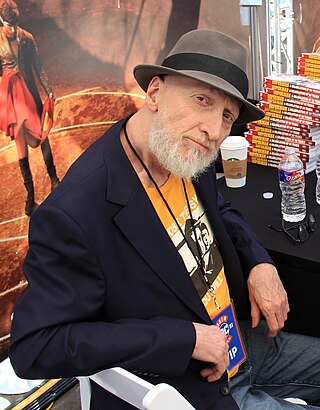
Frank Miller is an American comic book writer, penciller and inker, novelist, screenwriter, film director, and producer known for his comic book stories and graphic novels such as his run on Daredevil and subsequent Daredevil: Born Again, The Dark Knight Returns, Batman: Year One, Sin City, and 300.
Mimi Rogers, American actress births
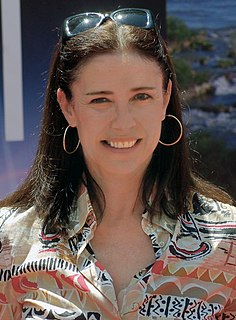
Miriam Rogers is an American actress. Her notable film roles are Gung Ho (1986), Someone to Watch Over Me (1987), Desperate Hours (1990), and Full Body Massage (1995). She garnered the greatest acclaim of her career for her role in the religious drama The Rapture (1991), with critic Robin Wood declaring that she "gave one of the greatest performances in the history of the Hollywood cinema." Rogers has since appeared in Reflections on a Crime (1994), The Mirror Has Two Faces (1996), Austin Powers: International Man of Mystery (1997), Lost in Space (1998), Ginger Snaps (2000), The Door in the Floor (2004), and For a Good Time, Call... (2012). Her extensive work in television includes Paper Dolls (1984), Weapons of Mass Distraction (1997), The Loop (2006–2007), and recurring roles on The X-Files (1998–1999), Two and a Half Men (2011–2015), Wilfred (2014), Mad Men (2015), Bosch (2014–2021), and Bosch: Legacy (2022).
Erich Kleiber, Austrian conductor and director (b. 1890) deaths

Erich Kleiber was an Austrian, later Argentine, conductor, known for his interpretations of the classics and as an advocate of new music.
Brian Engblom, Canadian ice hockey player and sportscaster births
Brian Paul Engblom is a Canadian ice hockey broadcaster for the Tampa Bay Lightning, and a former professional hockey defenseman.
John Roberts, American lawyer and judge, 17th Chief Justice of the United States births

John Glover Roberts Jr. is an American lawyer and jurist who has served as the 17th chief justice of the United States since 2005. Roberts has authored the majority opinion in several landmark cases, including National Federation of Independent Business v. Sebelius, Shelby County v. Holder, and Riley v. California. He has been described as having a conservative judicial philosophy but, above all, as an institutionalist. He has shown a willingness to work with the Supreme Court's liberal bloc, and after the retirement of Anthony Kennedy in 2018, he has been regarded as the primary swing vote on the Court. Roberts is no longer the median vote since Amy Coney Barrett replaced Ruth Bader Ginsburg in 2020.

The chief justice of the United States is the chief judge of the Supreme Court of the United States and the highest-ranking officer of the U.S. federal judiciary. Article II, Section 2, Clause 2 of the U.S. Constitution grants plenary power to the president of the United States to nominate, and with the advice and consent of the United States Senate, appoint "Judges of the supreme Court", who serve until they resign, retire, are impeached and convicted, or die. The existence of a chief justice is explicit in Article One, Section 3, Clause 6 which states that the chief justice shall preside on the impeachment trial of the president.
Peter Laird, American author and illustrator births

Peter Alan Laird is an American comic book writer and artist best known for co-creating the Teenage Mutant Ninja Turtles with writer and artist Kevin Eastman.
Ed Schultz, American talk show host and sportscaster (d. 2018) births

Edward Andrew Schultz was an American television and radio host, political commentator, news anchor and sports broadcaster.
Brian Gottfried, American tennis player births
Brian Edward Gottfried is a retired American tennis player who won 25 singles titles and 54 doubles titles during his professional career. He was the runner-up in singles at the 1977 French Open, won the 1975 and 1977 French Open Doubles as well as the 1976 Wimbledon Doubles. He achieved a career-high singles ranking on the ATP tour on June 19, 1977, when he became world No. 3, and a career-high doubles ranking on December 12, 1976, when he became No. 2.
Billy Johnson, American football player and coach births
William Arthur Johnson, better known as Billy "White Shoes" Johnson, is an American former professional football player who was a wide receiver and return specialist in the National Football League (NFL) from 1974 through 1988. A 75th and 100th Anniversary All-Time NFL Team selection, Johnson is also well known as one of the first players to display elaborate celebrations in the end zone.
Tam O'Shaughnessy, American tennis player, psychologist, and academic births
Tam Elizabeth O'Shaughnessy is an American children's science writer and former professional tennis player who co-founded the science education company Sally Ride Science together with her partner, astronaut Sally Ride, the first American woman and third woman in space. The company was relaunched as a nonprofit entity, Sally Ride Science at UC San Diego, on October 1, 2015. O'Shaughnessy serves as executive director.
G. E. Smith, American guitarist and songwriter births
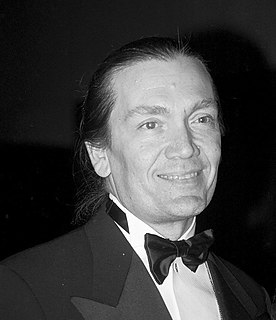
George Edward Smith is an American guitarist. Smith was the lead guitarist for the duo Hall & Oates during the band's heyday from 1979 to 1985, playing on five number one singles. After Hall & Oates went into a hiatus in 1985, Smith joined the sketch-comedy show Saturday Night Live, serving as bandleader and co-musical director of the Saturday Night Live Band.
Seth Justman, American keyboard player and songwriter births
Seth Justman is the keyboard player for the U.S. rock band, The J. Geils Band.
Cees van der Knaap, Dutch soldier and politician births

Cornelis (Cees) van der Knaap is a Dutch politician. He was State Secretary for Defence for the Christian Democratic Appeal (CDA).
Carl Gustaf Emil Mannerheim, Finnish field marshal and politician, 6th President of Finland (b. 1867) deaths
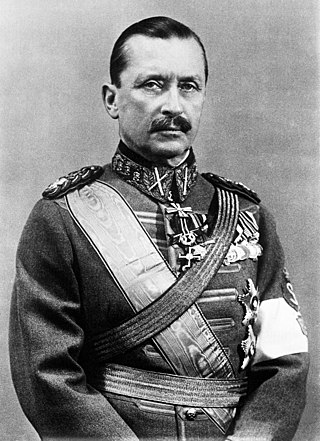
Baron Carl Gustaf Emil Mannerheim was a Finnish military leader and statesman. He served as the military leader of the Whites in the Finnish Civil War of 1918, as Regent of Finland (1918–1919), as commander-in-chief of Finland's defence forces during the period of World War II (1939–1945), as Marshal of Finland (1942–), and as the sixth president of Finland (1944–1946).

The president of the Republic of Finland is the head of state of Finland. Under the Constitution of Finland, executive power is vested in the Finnish Government and the president, with the latter possessing only residual powers. The president is directly elected by universal suffrage for a term of six years. Since 1994, no president may be elected for more than two consecutive terms. The president must be a natural-born Finnish citizen. The presidential office was established in the Constitution Act of 1919. The incumbent president is Sauli Niinistö. He was elected for the first time in 2012 and was re-elected in 2018.
Mikhail Baryshnikov, Russian-American dancer, choreographer, and actor births

Mikhail Nikolayevich Baryshnikov is a Soviet Latvian-born Russian-American dancer, choreographer, and actor. He was the preeminent male classical dancer of the 1970s and 1980s. He subsequently became a noted dance director.
Jean-Philippe Collard, French pianist births

Jean-Philippe Henri Collard is a French pianist known for his interpretations of the works of Gabriel Fauré and Camille Saint-Saëns.
Björn Afzelius, Swedish singer-songwriter and guitarist (d. 1999) births

Björn Svante Afzelius was a Swedish singer-songwriter and guitar player. He was an outspoken socialist, known for his support for Olof Palme. His songs are about love, politics and joys and sadness in life.
Vyron Polydoras, Greek lawyer and politician, Greek Minister for Public Order births
Vyron Polydoras is a Greek politician who was the Minister for Public Order and Justice of Greece from 2006 to 2007 in the first Cabinet of Kostas Karamanlis.
The Ministry of Citizen Protection is the government department responsible for Greece's public security services, i.e. the Hellenic Police, the Hellenic Fire Service, Hellenic (Corrections) Prison System, the Agrarian Police and the General Secretariat for Civil Protection.
Cal Schenkel, American painter and illustrator births
Calvin "Cal" Schenkel is an American illustrator, graphic designer, animator and comics artist, specializing in album cover design.
Philip Sugden, English historian and author (d. 2014) births
Philip Sugden was an English historian, best known for his comprehensive study of Jack the Ripper case, including the books The Complete History of Jack the Ripper, first published in 1994, and The Life and Times of Jack the Ripper (1996). He was the first academic historian to work on the case.
Perfecto Yasay Jr., Filipino lawyer and Secretary of Foreign Affairs of the Philippines (d. 2020) births
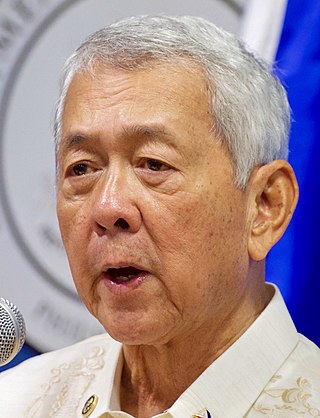
Perfecto Rivas Yasay Jr. was a Philippine government official who served as Secretary of Foreign Affairs of the Philippines under the Duterte administration in an ad interim basis from June 30, 2016, until March 8, 2017, the rejection of his appointment by the Commission on Appointments over eligibility concerns resulting from questions on his citizenship.

The secretary of foreign affairs is the Cabinet of the Philippines member in charge of implementing foreign policy for the government of the Philippines as the head of the Department of Foreign Affairs.
Christopher Hum, English academic and diplomat, British Ambassador to China births
Sir Christopher Owen Hum is the former UK Ambassador to the People's Republic of China and Master of a constituent college of the University of Cambridge.

The British Ambassador to China is the United Kingdom's foremost diplomatic representative in the People's Republic of China, and in charge of the UK's diplomatic mission in China. The ambassador's official title is His Brittanic Majesty's Ambassador to the People's Republic of China
Nedra Talley, American singer births
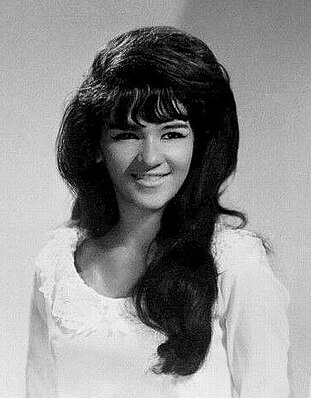
Nedra Talley, now known as Nedra Talley-Ross, is an American singer best known as a former member of the girl group the Ronettes, in which she performed with her cousins Ronnie and Estelle Bennett. As of 2022, Talley is the last surviving member of the group.
Harold Cardinal, Canadian lawyer and politician (d. 2005) births
Harold Cardinal was a Cree writer, political leader, teacher, negotiator, and lawyer. Throughout his career he advocated, on behalf of all First Nation peoples, for the right to be "the red tile in the Canadian mosaic."
Peter Akinola, Nigerian archbishop births
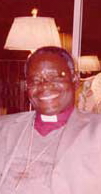
Peter Jasper Akinola is the former Anglican Primate of the Church of Nigeria. He is also the former bishop of Abuja and Archbishop of Province III, which covered the northern and central parts of the country. When the division into ecclesiastical provinces was adopted in 2002, he became the first Archbishop of Abuja Province, a position he held until 2010. He is married and a father of six.
Mairead Maguire, Northern Irish activist, Nobel Prize laureate births

Mairead Maguire, also known as Mairead Corrigan Maguire and formerly as Mairéad Corrigan, is a peace activist from Northern Ireland. She co-founded, with Betty Williams and Ciaran McKeown, the Women for Peace, which later became the Community for Peace People, an organization dedicated to encouraging a peaceful resolution of the Troubles in Northern Ireland. Maguire and Williams were awarded the 1976 Nobel Peace Prize.

The Nobel Peace Prize is one of the five Nobel Prizes established by the will of Swedish industrialist, inventor and armaments manufacturer Alfred Nobel, along with the prizes in Chemistry, Physics, Physiology or Medicine and Literature. Since March 1901, it has been awarded annually to those who have "done the most or the best work for fraternity between nations, for the abolition or reduction of standing armies and for the holding and promotion of peace congresses".
Nick Mason, English drummer, songwriter, and producer births

Nicholas Berkeley Mason, is an English drummer and a founder member of the progressive rock band Pink Floyd. He is the only member to feature on every Pink Floyd album, and the only constant member since its formation in 1965. He co-wrote Pink Floyd compositions such as "Echoes", "Time", "Careful with That Axe, Eugene", and "One of These Days". In 2018, he formed a new band, Nick Mason's Saucerful of Secrets, to perform music from Pink Floyd's early years. He was inducted into the Rock and Roll Hall of Fame in 1996 as a member of Pink Floyd.
Julia Cumberlege, Baroness Cumberlege, English businesswoman and politician births

Julia Frances Cumberlege, Baroness Cumberlege, is a British Conservative Party politician and businesswoman. She was created a life peer on 18 May 1990 as Baroness Cumberlege, of Newick in the County of East Sussex.
Maki Asakawa, Japanese singer-songwriter and producer (d. 2010) births

Maki Asakawa was a Japanese jazz and blues singer, lyricist and composer. She was an important voice of the Japanese urban counterculture.
Tasuku Honjo, Japanese immunologist, Nobel Prize laureate in Physiology or Medicine births
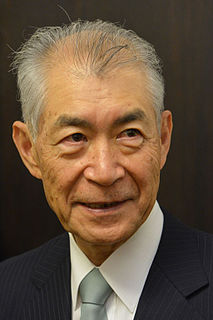
Tasuku Honjo is a Japanese physician-scientist and immunologist. He won the 2018 Nobel Prize in Physiology or Medicine and is best known for his identification of programmed cell death protein 1 (PD-1). He is also known for his molecular identification of cytokines: IL-4 and IL-5, as well as the discovery of activation-induced cytidine deaminase (AID) that is essential for class switch recombination and somatic hypermutation.
John Witherspoon, American actor and comedian (d. 2019) births

John Weatherspoon, better known as John Witherspoon, was an American actor and comedian who performed in various television shows and films.

2019 (MMXIX) was a common year starting on Tuesday of the Gregorian calendar, the 2019th year of the Common Era (CE) and Anno Domini (AD) designations, the 19th year of the 3rd millennium and the 21st century, and the 10th and last year of the 2010s decade.
Kate Wolf, American singer-songwriter and guitarist (d. 1986) births

Kate Wolf was an American folk singer and songwriter. Though her career was relatively short, she had a significant impact on the folk music scene. Her best-known compositions include "Here in California", "Love Still Remains", "Across the Great Divide", "Unfinished Life", “Green Eyes” and "Give Yourself to Love". She recorded six albums as a solo artist. She was elected to the NAIRD Independent Music Hall of Fame in 1987. Her songs have since been recorded by artists such as Nanci Griffith and Emmylou Harris.
Kaarel Eenpalu, Estonian journalist and politician, Prime Minister of Estonia (b. 1888) deaths
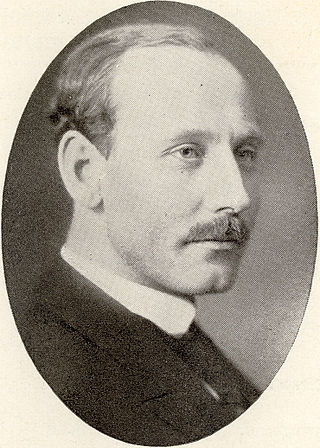
Kaarel Eenpalu was an Estonian journalist, politician and head of state, who served as 7th Prime Minister of Estonia.
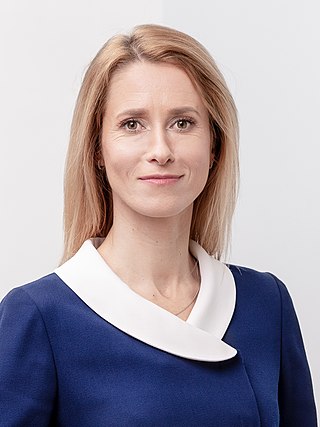
The Prime Minister of Estonia is the head of government of the Republic of Estonia. The prime minister is nominated by the president after appropriate consultations with the parliamentary factions and confirmed by the parliament (Riigikogu). In case of disagreement, the Parliament can reject the president's nomination and choose their own candidate. In practice, since the prime minister must maintain the confidence of Parliament in order to remain in office, they are usually the leader of the senior partner in the governing coalition. The current prime minister is Kaja Kallas of the Reform Party. She took the office on 26 January 2021 following the resignation of Jüri Ratas.
Beatrice Tinsley, New Zealand astronomer and cosmologist (d. 1981) births
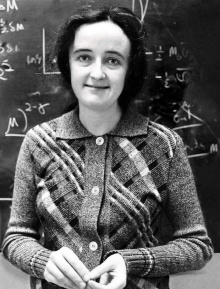
Beatrice Muriel Hill Tinsley was a British-born New Zealand astronomer and cosmologist and professor of astronomy at Yale University, whose research made fundamental contributions to the astronomical understanding of how galaxies evolve, grow and die.
Ahmet Kurtcebe Alptemoçin, Turkish engineer and politician, 35th Turkish Minister of Foreign Affairs births
Ahmet Kurtcebe Alptemoçin is a Turkish mechanical engineer, industrialist and politician belonging to the Motherland Party. He served as Minister of Finance and Customs between 1984–1985 and Minister of Foreign Affairs between 1990 and 1991.

This is a list of Ministers of Foreign Affairs of Turkey.
James Cromwell, American actor births
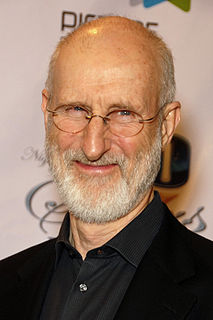
James Oliver Cromwell is an American actor and activist. Some of his best-known films include Babe (1995), Star Trek: First Contact (1996), L.A. Confidential (1997), The Green Mile (1999), The Queen (2006), Secretariat (2010), The Artist (2011), and Jurassic World: Fallen Kingdom (2018).
Terry Harper, Canadian ice hockey player and coach births

Terrance Victor Harper is a Canadian former professional ice hockey player. Harper played in the National Hockey League from 1962 to 1981. During this time, he played for the Montreal Canadiens, Los Angeles Kings, Detroit Red Wings, St. Louis Blues, and Colorado Rockies.
Petru Lucinschi, Romanian activist and politician, 2nd President of Moldova births

Petru Lucinschi is a former Moldovan politician who was Moldova's second President (1997–2001).

The President of the Republic of Moldova is the head of state of Moldova. The current president is Maia Sandu, who assumed office on 24 December 2020.
Reynaldo Rey, American actor and screenwriter (d. 2015) births
Reynaldo Rey was an American actor, comedian, and television personality.
Isaac Babel, Russian short story writer, journalist, and playwright (b. 1894) deaths

Isaac Emmanuilovich Babel was a Russian writer, journalist, playwright, and literary translator. He is best known as the author of Red Cavalry and Odessa Stories, and has been acclaimed as "the greatest prose writer of Russian Jewry." Babel was arrested by the NKVD on 15 May 1939 on fabricated charges of terrorism and espionage, and executed on 27 January 1940.
Fred Åkerström, Swedish singer-songwriter and guitarist (d. 1985) births
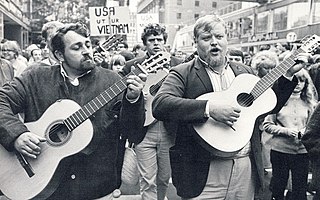
Fred Åkerström was a Swedish folk guitarist and singer particularly noted for his interpretations of Carl Michael Bellman's music, and his own work of the typically Swedish song segment named visa. These songs, visor, are traditionally very narrative and the performance is "acted" to some degree. The singer is in context a vissångare, a troubadour character. Åkerström was also known for his actor's interpretations of Bellman's 18th century material, and his unusual ability to reach deep bass notes.
Troy Donahue, American actor (d. 2001) births
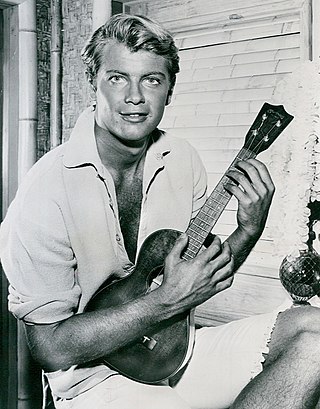
Troy Donahue was an American film and television actor and singer. He was a popular sex symbol in the 1950s and 1960s.
Samuel C. C. Ting, American physicist and academic, Nobel Prize laureate births

Samuel Chao Chung Ting is an American physicist who, with Burton Richter, received the Nobel Prize in 1976 for discovering the subatomic J/ψ particle. More recently he has been the principal investigator in research conducted with the Alpha Magnetic Spectrometer, a device installed on the International Space Station in 2011.

The Nobel Prize in Physics is a yearly award given by the Royal Swedish Academy of Sciences for those who have made the most outstanding contributions for humankind in the field of physics. It is one of the five Nobel Prizes established by the will of Alfred Nobel in 1895 and awarded since 1901, the others being the Nobel Prize in Chemistry, Nobel Prize in Literature, Nobel Peace Prize, and Nobel Prize in Physiology or Medicine. Physics is traditionally the first award presented in the Nobel Prize ceremony.
Steve Demeter, American baseball player, coach, and manager (d. 2013) births
Stephen Demeter was an American professional baseball player and scout. He played in Major League Baseball as a third baseman for two seasons.
Édith Cresson, French politician and diplomat, Prime Minister of France births
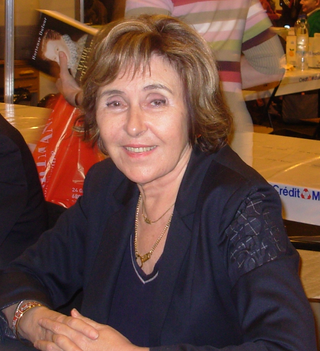
Édith Cresson is a French politician from the Socialist Party. She served as Prime Minister of France from 1991 to 1992, the first woman to do so. She was the only woman to be prime minister until 2022, when Élisabeth Borne was appointed. Other than her breakthrough gender role, Cresson’s term was uneventful. Her political career ended in scandal as a result of corruption charges dating from her tenure as European Commissioner for Research, Science and Technology.

The head of the government of France has been called the prime minister of France since 1959, when Michel Debré became the first officeholder appointed under the Fifth Republic. During earlier periods of history, the head of government of France was known by different titles. As was common in European democracies of the 1815–1958 period, the head of government was called President of the Council of Ministers, generally shortened to President of the Council. This should not be confused with the elected office of president of the French Republic, who appoints the prime minister as head of state.
George Follmer, American race car driver births

George Follmer is an American former auto racing driver, and one of the most successful road racers of the 1970s. He was born in Phoenix, Arizona. His family moved to California when he was just an infant.
Jerry Buss, American chemist and businessman (d. 2013) births

Gerald Hatten Buss was an American businessman, investor, chemist, and philanthropist. He was the majority owner of the Los Angeles Lakers of the National Basketball Association (NBA), winning 10 league championships that were highlighted by the team's Showtime era during the 1980s. He was inducted into the Naismith Memorial Basketball Hall of Fame as a contributor. Buss owned other professional sports franchises in Southern California.
Boris Shakhlin, Russian-Ukrainian gymnast (d. 2008) births

Boris Anfiyanovich Shakhlin was a Soviet gymnast who was the 1960 Olympic all-around champion and the 1958 all-around World Champion. He won a total of 13 medals including seven gold medals at the Summer Olympics, and was the most successful athlete at the 1960 Summer Olympics. He held the record for most Olympic medals by a male athlete record until gymnast Nikolai Andrianov won his 14th and 15th medals at the 1980 Summer Olympics. He also won 14 medals at the World Championships.
Mordecai Richler, Canadian author and screenwriter (d. 2001) births

Mordecai Richler was a Canadian writer. His best known works are The Apprenticeship of Duddy Kravitz (1959) and Barney's Version (1997). His 1970 novel St. Urbain's Horseman and 1989 novel Solomon Gursky Was Here. He is also well known for the Jacob Two-Two fantasy series for children. In addition to his fiction, Richler wrote numerous essays about the Jewish community in Canada, and about Canadian and Quebec nationalism. Richler's Oh Canada! Oh Quebec! (1992), a collection of essays about nationalism and anti-Semitism, generated considerable controversy.
Nigel Vinson, Baron Vinson, English lieutenant and businessman births
Nigel Vinson, Baron Vinson LVO, is a British entrepreneur, inventor, philanthropist and Conservative former member of the House of Lords.
Nishinoumi Kajirō II, Japanese sumo wrestler, the 25th Yokozuna (b. 1880) deaths

Nishinoumi Kajirō II was a Japanese professional sumo wrestler. He was the sport's 25th yokozuna.

Makuuchi (幕内), or makunouchi (幕の内), is the top division of the six divisions of professional sumo. Its size is fixed at 42 wrestlers (rikishi), ordered into five ranks according to their ability as defined by their performance in previous tournaments.
Bobby "Blue" Bland, American blues singer-songwriter (d. 2013) births

Robert Calvin Bland, known professionally as Bobby "Blue" Bland, was an American blues singer.
Mohamed Al-Fayed, Egyptian-Swiss businessman births
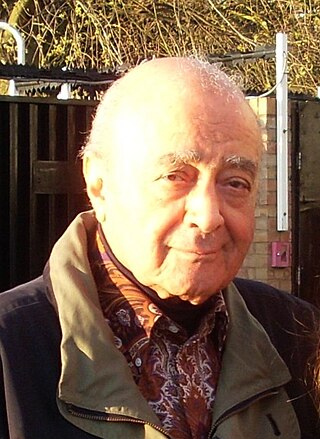
Mohamed Al-Fayed is an Egyptian-born businessman whose residence and chief business interests have been in the United Kingdom since the late 1960s. His business interests include ownership of Hôtel Ritz Paris and formerly Harrods department store and Fulham F.C., both in London. In November 2022, Fayed's wealth was estimated at US$1.9 billion, ranking his wealth at no. 1,512 in the world.
Gastón Suárez, Bolivian author and playwright (d. 1984) births

Gastón Suárez was a Bolivian novelist and dramatist. Suárez was born in the town of Tupiza in the southern part of Potosí, Bolivia in 1929.
Michael Craig, Indian-English actor and screenwriter births
Michael Francis Gregson, known professionally as Michael Craig, is a British actor and screenwriter, known for his work in theatre, film and television both in the United Kingdom and in Australia.
Hans Modrow, Polish-German lawyer and politician, 5th Prime Minister of East Germany births

Hans Modrow is a German politician best known as the last communist premier of East Germany.

The political leadership of East Germany was distributed between several offices. The Socialist Unity Party of Germany (SED) and its leader held ultimate power and authority over state and government.
Jurgis Matulaitis-Matulevičius, Lithuanian bishop (b. 1871) deaths

Jurgis Matulaitis-Matulevičius, also known as Jerzy Bolesław Matulewicz-Matulaitis was a Latin Church Catholic prelate who served as the Bishop of Vilnius from late 1918 until his resignation in 1925. Matulaitis was also the founder of the Sisters of the Immaculate Conception and the Handmaids of Jesus in the Eucharist; he served as the Superior-General of the Marian Fathers from 1911 until his death. He worked in secret to revive the Marian Fathers after the Russian authorities suppressed all religious orders and he even relinquished his teaching position to better dedicate himself to that secret revival. He was a noted teacher and spiritual director who set up other branches of the order in places such as Switzerland and the United States far from Russian authorities.
Fritz Spiegl, Austrian flute player and journalist (d. 2003) births
Fritz Spiegl was an Austrian-born English musician, journalist, broadcaster, humorist and collector who lived and worked in Britain from 1939. His works include compiling the Radio 4 UK Theme in 1978.
Ingrid Thulin, Swedish actress (d. 2004) births
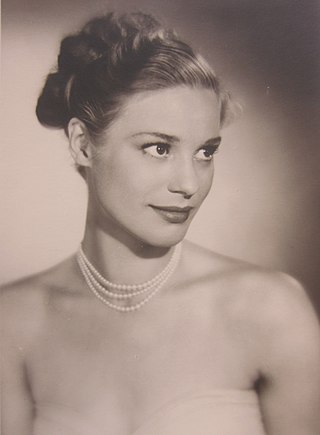
Ingrid Lilian Thulin was a Swedish actress and director who collaborated with filmmaker Ingmar Bergman. She was often cast as harrowing and desperate characters, and earned acclaim from both Swedish and international critics. She won the Cannes Film Festival Award for Best Actress for her performance in Brink of Life (1958) and the inaugural Guldbagge Award for Best Actress in a Leading Role for The Silence (1963), and was nominated for a Best Supporting Actress BAFTA for Cries and Whispers (1972).
Rauf Denktaş, Cypriot lawyer and politician, 1st President of Northern Cyprus (d. 2012) births

Rauf Raif Denktaş was a Turkish Cypriot politician, barrister and jurist who served as the founding president of Northern Cyprus. He occupied this position as the president of the Turkish Republic of Northern Cyprus between the declaration of the de facto state by Denktaş in 1983 and 2005, as the president of the Turkish Federated State of Cyprus between 1975 and 1983 and as the president of the Autonomous Turkish Cypriot Administration between 1974 and 1975. He was also elected in 1973 as the vice-president of the Republic of Cyprus.
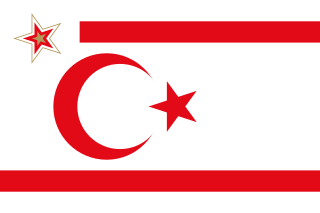
The president of Northern Cyprus is the head of state of the Turkish Republic of Northern Cyprus. Rauf Denktaş was the first and founding president of Northern Cyprus, and retired in 2005. His position was taken over by Mehmet Ali Talat, followed by Derviş Eroğlu, then Mustafa Akıncı, and the current president, Ersin Tatar.
Brian Rix, English actor, producer, and politician (d. 2016) births
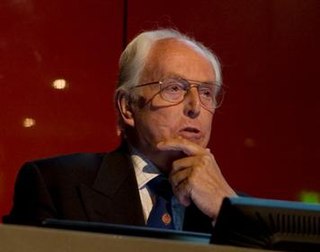
Brian Norman Roger Rix, Baron Rix, was an English actor-manager, who produced a record-breaking sequence of long-running farces on the London stage, including Dry Rot, Simple Spymen and One for the Pot. His one-night TV shows made him the joint-highest paid star on the BBC. He often worked with his wife Elspet Gray and sister Sheila Mercier, who became the matriarch in Emmerdale Farm.
Harvey Shapiro, American poet (d. 2013) births

Harvey Shapiro was an American poet and editor of The New York Times. He wrote a dozen books of poetry from 1953 to 2006, writing in epigrammatic style about things in his everyday life. As an editor, he was always affiliated with The New York Times in some capacity, mainly in the magazine and book reviews, from 1957 to 2005.
Nellie Bly, American journalist and author (b. 1864) deaths

Elizabeth Cochran Seaman, better known by her pen name Nellie Bly, was an American journalist, industrialist, inventor, and charity worker who was widely known for her record-breaking trip around the world in 72 days, in emulation of Jules Verne's fictional character Phileas Fogg, and an exposé in which she worked undercover to report on a mental institution from within. She was a pioneer in her field and launched a new kind of investigative journalism.
Donna Reed, American actress (d. 1986) births

Donna Reed was an American actress. Her career spanned more than 40 years, with performances in more than 40 films. She is well known for her portrayal of Mary Hatch Bailey in Frank Capra's fantasy holiday film It's a Wonderful Life (1946). Reed won the Academy Award for Best Supporting Actress for Fred Zinnemann's war drama film From Here to Eternity (1953).
Maurice Buckley, Australian sergeant (b. 1891) deaths

Maurice Vincent Buckley, was an Australian soldier serving under the pseudonym Gerald Sexton who was awarded the Victoria Cross during the First World War. This is the highest award for gallantry in the face of the enemy that can be awarded to British and Commonwealth forces.
Hiroyoshi Nishizawa, Japanese lieutenant and pilot (d. 1944) births
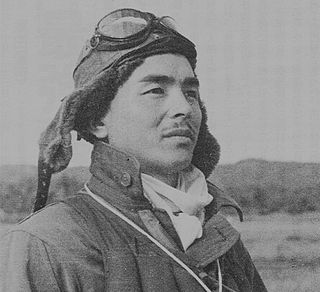
Lieutenant Junior Grade Hiroyoshi Nishizawa was a Japanese naval aviator and an ace of the Imperial Japanese Navy Air Service during World War II. Nishizawa was known to his colleagues as 'the Devil' for his breathtaking, brilliant, and unpredictable aerobatics and superb control of his aircraft while in combat. He was a member of the Tainan Kōkūtai's famous "clean up trio" with fellow aces Saburō Sakai and Toshio Ōta and would see action in the New Guinea campaign as well as in the aerial battles over Guadalcanal and over the Solomon Islands. He was killed in 1944 during the Philippines Campaign while aboard an IJN transport aircraft. It is possible that he was the most successful Japanese fighter ace of the war, reportedly telling his last CO that he had achieved a tally of 86 or 87 aerial victories- post war he was linked with scores of 147 or 103, but both of these scores have been considered inaccurate.
Helmut Zacharias, German violinist and composer (d. 2002) births

Helmut Zacharias was a German violinist and composer who created over 400 works and sold 14 million records. He also appeared in a number of films, usually playing musicians.
Ross Bagdasarian, Sr., American singer-songwriter, pianist, producer, and actor, created Alvin and the Chipmunks (d. 1972) births

Ross S. Bagdasarian, known professionally by his stage name David Seville, was an American singer, songwriter, record producer, and actor, best known for creating the cartoon band Alvin and the Chipmunks. Initially a stage and film actor, he rose to prominence in 1958 with the songs "Witch Doctor" and "The Chipmunk Song ", which both became Billboard number-one singles. He produced and directed The Alvin Show, which aired on CBS in 1961–62.
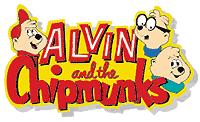
Alvin and the Chipmunks, originally David Seville and the Chipmunks or simply The Chipmunks, are an American animated virtual band and media franchise first created by Ross Bagdasarian for novelty records in 1958. The group consists of three singing animated anthropomorphic chipmunks named Alvin, Simon, and Theodore who are originally managed by their human adoptive father, David "Dave" Seville.
Endre Ady, Hungarian poet and journalist (b. 1877) deaths

Endre Ady was a turn-of-the-century Hungarian poet and journalist. Regarded by many as the greatest Hungarian poet of the 20th century, he was noted for his steadfast belief in social progress and development and for his poetry's exploration of fundamental questions of the modern European experience: love, temporality, faith, individuality, and patriotism.
Skitch Henderson, American pianist, composer, and conductor (d. 2005) births

Lyle Russel "Skitch" Henderson was a pianist, conductor, and composer. His nickname "Skitch" came from his ability to "re-sketch" a song in a different key. Bing Crosby suggested that he should use the name professionally.
Elmore James, American singer-songwriter and guitarist (d. 1963) births

Elmore James was an American blues guitarist, singer, songwriter, and bandleader. Noted for his use of loud amplification and his stirring voice, James was inducted into the Rock and Roll Hall of Fame in 1992. His slide guitar technique earned him the nickname "King of the Slide Guitar".
William Seawell, American general (d. 2005) births

William Thomas Seawell was a brigadier general in the United States Air Force and former head of Pan Am.
Jules Archer, American historian and author (d. 2008) births
Jules Archer was an American author who wrote many volumes of non-fiction history for a general audience and for young adults. Archer attended DeWitt Clinton High School in New York City and the College of the City of New York, where he received a degree in advertising.
Jacques Hnizdovsky, Ukrainian-American painter, sculptor, and illustrator (d. 1985) births

Jacques Hnizdovsky, (1915–1985) was a Ukrainian-American painter, printmaker, graphic designer, illustrator and sculptor.
Arne Næss, Norwegian philosopher and environmentalist (d. 2009) births
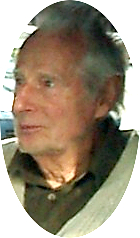
Arne Dekke Eide Næss was a Norwegian philosopher who coined the term "deep ecology", an important intellectual and inspirational figure within the environmental movement of the late twentieth century, and a prolific writer on many other philosophical issues. Næss cited Rachel Carson's 1962 book Silent Spring as being a key influence in his vision of deep ecology. Næss combined his ecological vision with Gandhian nonviolence and on several occasions participated in direct action.
Francis Rogallo, American engineer, invented the Rogallo wing (d. 2009) births

Francis Melvin Rogallo was an American aeronautical engineer inventor born in Sanger, California, U.S. Together with his wife, he is credited with the invention of the Rogallo wing, or "flexible wing", a precursor to the modern hang glider and paraglider. His patents were ranged over mechanical utility patents and ornamental design patents for wing controls, airfoils, target kite, flexible wing, and advanced configurations for flexible wing vehicles.

The Rogallo wing is a flexible type of wing. In 1948, Francis Rogallo, a NASA engineer, and his wife Gertrude Rogallo, invented a self-inflating flexible wing they called the Parawing, also known after them as the "Rogallo Wing" and flexible wing. NASA considered Rogallo's flexible wing as an alternative recovery system for the Mercury and Gemini space capsules, and for possible use in other spacecraft landings, but the idea was dropped from Gemini in 1964 in favor of conventional parachutes.
Edvard Kardelj, Slovene general, economist, and politician, 2nd Foreign Minister of Yugoslavia (d. 1979) births

Edvard Kardelj, also known by the pseudonyms Bevc, Sperans and Krištof, was a Yugoslav politician and economist. He was one of the leading members of the Communist Party of Slovenia before World War II. During the war, Kardelj was one of the leaders of the Liberation Front of the Slovenian People and a Slovene Partisan, and after the war, he was a federal political leader in the Socialist Federal Republic of Yugoslavia and led the Yugoslav delegation in peace talks with Italy over the border dispute in the Julian March. He was the main creator of the Yugoslav system of workers' self-management. He was an economist and a full member of both the Slovene Academy of Sciences and Arts and the Serbian Academy of Sciences and Arts. he played a major role and setting the foreign policy by designing the fundamental ideological basis for the Yugoslav policy of nonalignment in the 1950s and the 1960s.

The Ministry of Foreign Affairs of Yugoslavia was the ministry responsible for representing the Kingdom of Yugoslavia internationally from 1918 to 1941 and the Socialist Federal Republic of Yugoslavia from 1945 to 1992. It may also refer to the ministry which represented Serbia and Montenegro from 1992 to 2006.
Thomas Crapper, English plumber and businessman (b. 1836) deaths
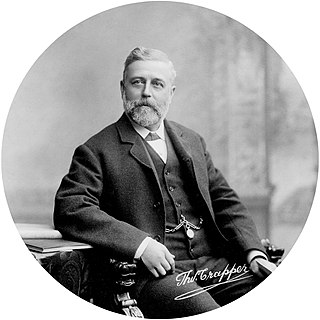
Thomas Crapper was an English plumber and businessman. He founded Thomas Crapper & Co in London, a plumbing equipment company. His notability with regard to toilets has often been overstated, mostly due to the publication in 1969 of a fictional biography by New Zealand satirist Wallace Reyburn.
William Randolph Hearst, Jr., American journalist and publisher (d. 1993) births
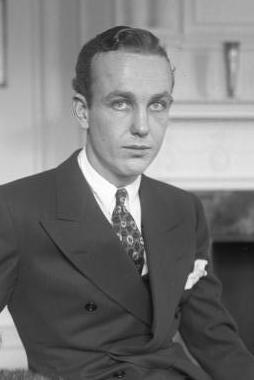
William Randolph Hearst Jr. was an American businessman and newspaper publisher. He was the second son of the publisher William Randolph Hearst. He became editor-in-chief of Hearst Newspapers after the death of his father in 1951. He won a Pulitzer Prize for his interview with Soviet premier, Nikita Khrushchev, and associated commentaries in 1955.
Howard McNear, American actor (d. 1969) births
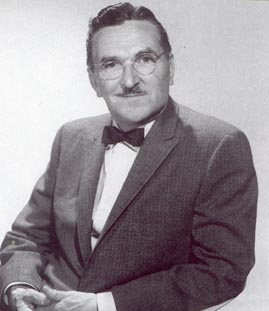
Howard Terbell McNear was an American stage, screen, and radio character actor. McNear is best remembered as the original voice of Doc Adams in the radio version of Gunsmoke and as Floyd Lawson, the barber on The Andy Griffith Show (1961–1967).
James J. Gibson, American psychologist and academic (d. 1979) births
James Jerome Gibson, was an American psychologist and is considered to be one of the most important contributors to the field of visual perception. Gibson challenged the idea that the nervous system actively constructs conscious visual perception, and instead promoted ecological psychology, in which the mind directly perceives environmental stimuli without additional cognitive construction or processing. A Review of General Psychology survey, published in 2002, ranked him as the 88th most cited psychologist of the 20th century, tied with John Garcia, David Rumelhart, Louis Leon Thurstone, Margaret Floy Washburn, and Robert S. Woodworth.
John Eccles, Australian-Swiss neurophysiologist and academic, Nobel Prize laureate (d. 1997) births

Sir John Carew Eccles was an Australian neurophysiologist and philosopher who won the 1963 Nobel Prize in Physiology or Medicine for his work on the synapse. He shared the prize with Andrew Huxley and Alan Lloyd Hodgkin.

The Nobel Prize in Physiology or Medicine is awarded yearly by the Nobel Assembly at the Karolinska Institute for outstanding discoveries in physiology or medicine. The Nobel Prize is not a single prize, but five separate prizes that, according to Alfred Nobel's 1895 will, are awarded "to those who, during the preceding year, have conferred the greatest benefit to humankind". Nobel Prizes are awarded in the fields of Physics, Chemistry, Physiology or Medicine, Literature, and Peace.
Willy Fritsch, German actor (d. 1973) births
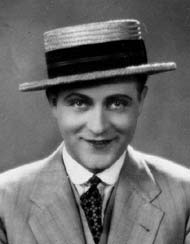
Willy Fritsch was a German theater and film actor, a popular leading man and character actor from the silent-film era to the early 1960s.
Art Rooney, American football player, coach and owner (d. 1988) births
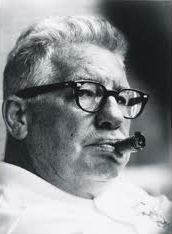
Arthur Joseph Rooney Sr., often referred to as "The Chief", was the founding owner of the Pittsburgh Steelers, an American football franchise in the National Football League (NFL), from 1933 until his death. Rooney is a member of the Pro Football Hall of Fame, was an Olympic qualifying boxer, and was part or whole owner in several track sport venues and Pittsburgh area pro teams. He was the first president of the Pittsburgh Steelers from 1933 to 1974, and the first chairman of the team from 1933 to 1988.
Giuseppe Verdi, Italian composer (b. 1813) deaths

Giuseppe Fortunino Francesco Verdi was an Italian composer best known for his operas. He was born near Busseto to a provincial family of moderate means, receiving a musical education with the help of a local patron. Verdi came to dominate the Italian opera scene after the era of Gioachino Rossini, Gaetano Donizetti, and Vincenzo Bellini, whose works significantly influenced him.
Hyman G. Rickover, American admiral (d. 1986) births

Hyman G. Rickover was an admiral in the U.S. Navy. He directed the original development of naval nuclear propulsion and controlled its operations for three decades as director of the U.S. Naval Reactors office. In addition, he oversaw the development of the Shippingport Atomic Power Station, the world's first commercial pressurized water reactor used for generating electricity. Rickover is also one of four people who have been awarded two Congressional Gold Medals.
Joseph Rosenstock, Polish-American conductor and manager (d. 1985) births
Joseph Rosenstock was an American conductor.
Harry Ruby, American composer and screenwriter (d. 1974) births
Harry Rubenstein, known professionally as Harry Ruby, was an American actor, pianist, composer, songwriter and screenwriter, who was inducted into the Songwriters Hall of Fame in 1970. He was married to silent film actress Eileen Percy.
Soong Ching-ling, Chinese politician, Honorary President of the People's Republic of China (d. 1981) births

Rosamond Soong Ch'ing-ling was a Chinese political figure. As the third wife of Sun Yat-sen, then Premier of the Kuomintang and President of the Republic of China, she was often referred to as Madame Sun Yat-sen. She was a member of the Soong family and, together with her siblings, played a prominent role in China's politics prior to and after 1949.
The president of the People's Republic of China was created in 1954 when the first constitution consolidated the system of government in the People's Republic of China. At the time, the title was translated into English as State Chairman. The position was abolished between 1975 and 1982 with the functions of head of state being performed by the chairman of the Standing Committee of the National People's Congress. The presidency was revived under the fourth constitution in 1982.
Balthasar van der Pol, Dutch physicist and academic (d. 1959) births

Balthasar van der Pol was a Dutch physicist.
Radhabinod Pal, Indian academic and jurist (d. 1967) births

Radhabinod Pal was an Indian jurist who was a member of the United Nations' International Law Commission from 1952 to 1966. He was one of three Asian judges appointed to the International Military Tribunal for the Far East, the "Tokyo Trials" of Japanese war crimes committed during the Second World War. Among all the judges of the tribunal, he was the only one who submitted a judgment which insisted all defendants were not guilty. The Yasukuni Shrine and the Kyoto Ryozen Gokoku Shrine have monuments specially dedicated to Pal.
Jerome Kern, American composer and songwriter (d. 1945) births

Jerome David Kern was an American composer of musical theatre and popular music. One of the most important American theatre composers of the early 20th century, he wrote more than 700 songs, used in over 100 stage works, including such classics as "Ol' Man River", "Can't Help Lovin' Dat Man", "A Fine Romance", "Smoke Gets in Your Eyes", "The Song Is You", "All the Things You Are", "The Way You Look Tonight" and "Long Ago ". He collaborated with many of the leading librettists and lyricists of his era, including George Grossmith Jr., Guy Bolton, P. G. Wodehouse, Otto Harbach, Oscar Hammerstein II, Dorothy Fields, Johnny Mercer, Ira Gershwin and Yip Harburg.
Seison Maeda, Japanese painter (d. 1977) births
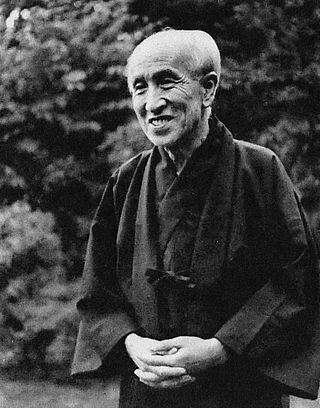
Seison Maeda was the art-name of a nihonga painter in the Taishō and Shōwa periods of Japan. His legal name was Maeda Renzō. He is considered one of the greatest contemporary Japanese painters, and one of the leaders of the Nihonga movement.
Edward Middleton Barry, English architect and academic, co-designed the Halifax Town Hall and the Royal Opera House (b. 1830) deaths

Edward Middleton Barry RA was an English architect of the 19th century.

Halifax Town Hall is a grade II* listed, 19th century town hall in the town of Halifax, West Yorkshire, England. It is notable for its design and interiors by Charles Barry and his son, Edward Middleton Barry, and for its sculptures by John Thomas. The town hall is also the headquarters of Calderdale Metropolitan Borough Council.

The Royal Opera House, also known as the Royal Theatre, was an opera house and performing arts venue in Valletta, Malta. It was designed by the English architect Edward Middleton Barry and was erected in 1866. In 1873 its interior was extensively damaged by fire but was eventually restored by 1877. The theatre received a direct hit from aerial bombing in 1942 during World War II. Prior to its destruction, it was one of the most beautiful and iconic buildings in Valletta. After several abandoned plans to rebuild the theatre, the ruins were redesigned by the Italian architect Renzo Piano and in 2013 it once again started functioning as a performance venue, called Pjazza Teatru Rjal.
Dorothy Scarborough, American author (d. 1935) births

Emily Dorothy Scarborough was an American writer who wrote about Texas, folk culture, cotton farming, ghost stories and women's life in the Southwest.
Will Marion Cook, American violinist and composer (d. 1944) births

William Mercer Cook, better known as Will Marion Cook, was an American composer, violinist, and choral director. Cook was a student of Antonín Dvořák. In 1919 he took his New York Syncopated Orchestra to England for a command performance for King George V of the United Kingdom, and tour. Cook is probably best known for his popular songs and landmark Broadway musicals, featuring African-American creators, producers, and casts, such as Clorindy, or The Origin of the Cake Walk (1898) and In Dahomey (1903). The latter toured for four years, including in the United Kingdom and United States.
János Bolyai, Romanian-Hungarian mathematician and academic (b. 1802) deaths
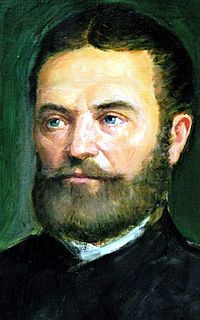
János Bolyai or Johann Bolyai, was a Hungarian mathematician, who developed absolute geometry—a geometry that includes both Euclidean geometry and hyperbolic geometry. The discovery of a consistent alternative geometry that might correspond to the structure of the universe helped to free mathematicians to study abstract concepts irrespective of any possible connection with the physical world.
Wilhelm II, German Emperor (d. 1941) births

Wilhelm II was the last German Emperor and King of Prussia, reigning from 15 June 1888 until his abdication on 9 November 1918. Despite strengthening the German Empire's position as a great power by building a powerful navy, his tactless public statements and erratic foreign policy greatly antagonized the international community and are considered by many to be one of the underlying causes of World War I. When the German war effort collapsed after a series of crushing defeats on the Western Front in 1918, he was forced to abdicate, thereby marking the end of the German Empire and the House of Hohenzollern's 300-year reign in Prussia and 500-year reign in Brandenburg.
Neel Doff, Dutch-Belgian author (d. 1942) births

Cornelia Hubertina "Neel" Doff was an author of Dutch origin living and working in Belgium and mainly writing in French. She is one of the most important contributors to proletarian literature.
Paavo Ruotsalainen, Finnish farmer and lay preacher (b. 1777) deaths
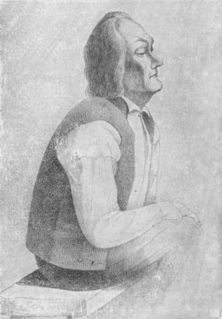
Paavo Heikki Ruotsalainen was a Finnish farmer and lay preacher who became the leader of the revivalist Awakening religious movement in Finland.
John James Audubon, French-American ornithologist and painter (b. 1789) deaths

John James Audubon was an American self-trained artist, naturalist, and ornithologist. His combined interests in art and ornithology turned into a plan to make a complete pictorial record of all the bird species of North America. He was notable for his extensive studies documenting all types of American birds and for his detailed illustrations, which depicted the birds in their natural habitats. His major work, a color-plate book titled The Birds of America (1827–1839), is considered one of the finest ornithological works ever completed. Audubon is also known for identifying 25 new species. He is the eponym of the National Audubon Society, and his name adorns a large number of towns, neighborhoods, and streets across the United States. Dozens of scientific names first published by Audubon are still in use by the scientific community.
John Collier, English painter and author (d. 1934) births

The Honourable John Maler Collier RP was a British painter and writer. He painted in the Pre-Raphaelite style, and was one of the most prominent portrait painters of his generation. Both of his marriages were to daughters of Thomas Henry Huxley. He was educated at Eton College, and he studied painting in Paris with Jean-Paul Laurens and at the Munich Academy starting in 1875.
Samuel Gompers, English-American labor leader (d. 1924) births
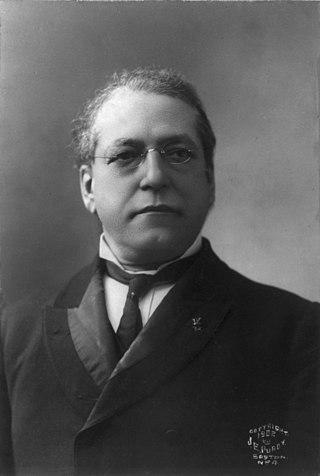
Samuel Gompers was a British-born American cigar maker, labor union leader and a key figure in American labor history. Gompers founded the American Federation of Labor (AFL) and served as the organization's president from 1886 to 1894, and from 1895 until his death in 1924. He promoted harmony among the different craft unions that comprised the AFL, trying to minimize jurisdictional battles. He promoted thorough organization and collective bargaining in order to secure shorter hours and higher wages, which he considered the essential first steps to emancipating labor.
Edward Smith, English captain (d. 1912) births

Edward John Smith was a British naval officer. He served as master of numerous White Star Line vessels. He was the captain of the RMS Titanic, and perished when the ship sank on her maiden voyage.
Tōgō Heihachirō, Japanese admiral (d. 1934) births

Marshal-Admiral Marquis Tōgō Heihachirō , served as a gensui or admiral of the fleet in the Imperial Japanese Navy and became one of Japan's greatest naval heroes. He claimed descent from Samurai Shijo Kingo, and he was an integral part of preserving Japanese artwork. As Commander-in-Chief of the Combined Fleet during the Russo-Japanese War of 1904–1905, he successfully confined the Russian Pacific naval forces to Port Arthur before winning a decisive victory over a relieving fleet at Tsushima in May 1905. Western journalists called Tōgō "the Nelson of the East". He remains deeply revered as a national hero in Japan, with shrines and streets named in his honour.
Arkhip Kuindzhi, Ukrainian-Russian painter (d. 1910) births

Arkhip Ivanovich Kuindzhi was a Ukraine landscape painter of Pontic Greek descent.
Leopold von Sacher-Masoch, Austrian journalist and author (d. 1895) births

Leopold Ritter von Sacher-Masoch was an Austrian nobleman, writer and journalist, who gained renown for his romantic stories of Galician life. The term masochism is derived from his name, invented by his contemporary, the Austrian psychiatrist Richard von Krafft-Ebing. Masoch did not approve of this use of his name.
Lewis Carroll, English novelist, poet, and mathematician (d. 1898) births
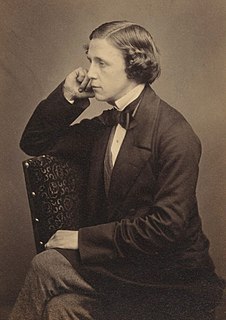
Charles Lutwidge Dodgson, better known by his pen name Lewis Carroll, was an English author, poet and mathematician. His most notable works are Alice's Adventures in Wonderland (1865) and its sequel Through the Looking-Glass (1871). He was noted for his facility with word play, logic, and fantasy. His poems Jabberwocky (1871) and The Hunting of the Snark (1876) are classified in the genre of literary nonsense.
Carl Friedrich Schmidt, Estonian-Russian geologist and botanist (d. 1908) births

Carl Friedrich Schmidt was a Baltic German geologist and botanist in the Russian Empire. He is acknowledged as the founder of Estonian geology. In the mid-19th century, he researched Estonian oil shale, kukersite, and named it as kuckers.
Mikhail Saltykov-Shchedrin, Russian journalist and author (d. 1889) births

Mikhail Yevgrafovich Saltykov-Shchedrin, born Mikhail Yevgrafovich Saltykov and known during his lifetime by the pen name Nikolai Shchedrin, was a major Russian writer and satirist of the 19th century. He spent most of his life working as a civil servant in various capacities. After the death of poet Nikolay Nekrasov, he acted as editor of a Russian literary magazine Otechestvenniye Zapiski until the Tsarist government banned it in 1884. In his works Saltykov mastered both stark realism and satirical grotesque merged with fantasy. His most famous works, the family chronicle novel The Golovlyov Family (1880) and the political novel The History of a Town (1870) became important works of 19th-century fiction, and Saltykov is regarded as a major figure of Russian literary Realism.
Richard Taylor, American general, historian, and politician (d. 1879) births

Lieutenant-General Richard "Dick" Taylor was an American planter, politician, military historian, and Confederate general. Following the outbreak of the American Civil War, Taylor joined the Confederate States Army, serving first as a brigade commander in Virginia, and later as an army commander in the Trans-Mississippi Theater. Taylor commanded the District of West Louisiana and was responsible for successfully opposing U.S. Federal Government troops invading upper northwest Louisiana during the Red River Campaign of 1864. He was the only son of Zachary Taylor, the 12th president of the United States. After the war and Reconstruction, Taylor published a memoir about his experiences.
Urbain Johnson, Canadian farmer and political figure (d. 1917) births
Urbain Johnson was a farmer and political figure in the Canadian province of New Brunswick. He represented Kent County in the Legislative Assembly of New Brunswick from 1869 to 1870, from 1874 to 1882 and from 1895 to 1908 as a Liberal member.
Édouard Lalo, French violinist and composer (d. 1892) births

Édouard-Victoire-Antoine Lalo was a French composer. His most celebrated piece is the Symphonie espagnole, a five-movement concerto for violin and orchestra, which remains a popular work in the standard repertoire.
John Chivington, American colonel and pastor (d. 1892) births

John Milton Chivington was an American Methodist pastor and Mason who served as a colonel in the United States Volunteers during the New Mexico Campaign of the American Civil War. He led a rear action against a Confederate supply train in the Battle of Glorieta Pass, and was then appointed a colonel of cavalry during the Colorado War.
Samuel Hood, 1st Viscount Hood, English admiral and politician (b. 1724) deaths
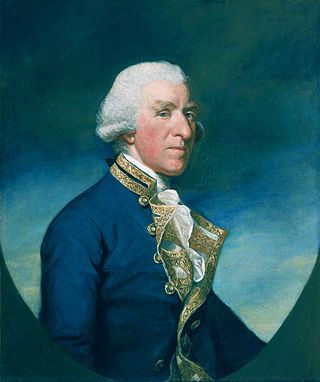
Samuel Hood, 1st Viscount Hood was an admiral in the Royal Navy. As a junior officer he saw action during the War of the Austrian Succession. While in temporary command of Antelope, he drove a French ship ashore in Audierne Bay, and captured two privateers in 1757 during the Seven Years' War. He held senior command as Commander-in-Chief, North American Station and then as Commander-in-Chief, Leeward Islands Station, leading the British fleet to victory at Battle of the Mona Passage in April 1782 during the American Revolutionary War. He went on to be Commander-in-Chief, Portsmouth, then First Naval Lord and, after briefly returning to the Portsmouth command, became Commander-in-Chief, Mediterranean Fleet during the French Revolutionary Wars. His younger brother was Admiral Alexander Hood, 1st Viscount Bridport (1726–1814), and his first cousin once-removed was Admiral Sir Samuel Hood, 1st Baronet (1762–1814).
Eugène Viollet-le-Duc, French architect, designed the Lausanne Cathedral (d. 1879) births

Eugène Emmanuel Viollet-le-Duc was a French architect and author who restored many prominent medieval landmarks in France, including those which had been damaged or abandoned during the French Revolution. His major restoration projects included Notre-Dame de Paris, the Basilica of Saint Denis, Mont Saint-Michel, Sainte-Chapelle, and the medieval walls of the city of Carcassonne, and he planned much of the physical construction of the Statue of Liberty. His later writings on the relationship between form and function in architecture had a notable influence on a new generation of architects, including Victor Horta, Hector Guimard, Antoni Gaudí, Hendrik Petrus Berlage, Louis Sullivan and Frank Lloyd Wright.

The Cathedral of Notre Dame of Lausanne is a church located in the city of Lausanne, in the canton of Vaud in Switzerland. It belongs to the Evangelical Reformed Church of the Canton of Vaud.
Johann Gottlieb Fichte, German philosopher and academic (b. 1762) deaths

Johann Gottlieb Fichte was a German philosopher who became a founding figure of the philosophical movement known as German idealism, which developed from the theoretical and ethical writings of Immanuel Kant. Recently, philosophers and scholars have begun to appreciate Fichte as an important philosopher in his own right due to his original insights into the nature of self-consciousness or self-awareness. Fichte was also the originator of thesis–antithesis–synthesis, an idea that is often erroneously attributed to Hegel. Like Descartes and Kant before him, Fichte was motivated by the problem of subjectivity and consciousness. Fichte also wrote works of political philosophy; he has a reputation as one of the fathers of German nationalism.
John Perkins, Anglo-Jamaican captain deaths

John Perkins, nicknamed Jack Punch, was a British Royal Navy officer. Perkins was perhaps the first mixed race commissioned officer in the Royal Navy. He rose from obscurity to be a successful ship's captain in the Georgian Royal Navy. He captained a 10-gun schooner during the American War of Independence and in a two-year period captured at least 315 enemy ships.
David Strauss, German theologian and author (d. 1874) births

David Friedrich Strauss was a German liberal Protestant theologian and writer, who influenced Christian Europe with his portrayal of the "historical Jesus", whose divine nature he denied. His work was connected to the Tübingen School, which revolutionized study of the New Testament, early Christianity, and ancient religions. Strauss was a pioneer in the historical investigation of Jesus.
Juan Crisóstomo Arriaga, Spanish composer and educator (d. 1826) births

Juan Crisóstomo Jacobo Antonio de Arriaga y Balzola was a Spanish Basque composer. He was nicknamed "the Spanish Mozart" after he died, because, like Wolfgang Amadeus Mozart, he was both a child prodigy and an accomplished composer who died young. They also shared the same first and second baptismal names; and they shared the same birthday, 27 January.
Maria Anna of Bavaria (d. 1877) births

Princess Maria Anna of Bavaria, known as 'Marie' was Queen of Saxony from 1836 to 1854 as the second wife of King Frederick Augustus II of Saxony.
Samuel Palmer, English painter and etcher (d. 1881) births

Samuel Palmer Hon.RE was a British landscape painter, etcher and printmaker. He was also a prolific writer. Palmer was a key figure in Romanticism in Britain and produced visionary pastoral paintings.
Eunice Hale Waite Cobb, American writer, public speaker, and activist (d. 1880) births

Eunice Hale Cobb was an American writer, public speaker, and activist. She was born in Kennebunk, Maine in 1803 and she married Rev. Sylvanus Cobb in Hallowell, Maine in 1822. She was a devoted and efficient assistant to his religious work as a Universalist preacher. Her eldest son, Sylvanus, Jr., derived much of his noted faculty for story-telling from her practice of telling him stories – often continued from evening to evening, as he sat at her feet when a child. She wrote hymns, and occasional poems, and obituary lines. Her faith in God was expressed in all her poetry. As a public speaker, she was very persuasive and convincing. She was the first female president of the Ladies Physiological Institute, of Boston, and served it in that capacity for some 15 years. She died in 1880.
Eli Whitney Blake, American engineer, invented the Mortise lock (d. 1886) births
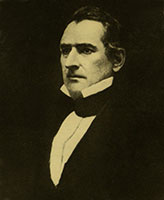
Eli Whitney Blake, Sr. was an American inventor, best known for his mortise lock and stone-crushing machine, the latter of which earned him a place into the National Inventors Hall of Fame.

A mortise lock is a lock that requires a pocket—the mortise—to be cut into the edge of the door or piece of furniture into which the lock is to be fitted. In most parts of the world, mortise locks are found on older buildings constructed before the advent of bored cylindrical locks, but they have recently become more common in commercial and upmarket residential construction in the United States. The design is widely used in domestic properties of all vintages in Europe.
Antoine Philippe de La Trémoille, French general (b. 1765) deaths

Antoine Philippe de La Trémoïlle, Prince of Talmont was a French noble and royalist notable for his military involvement against the French Revolution.
Juan Álvarez, Mexican general and president (1855) (d. 1867) births

Juan Nepomuceno Álvarez Hurtado de Luna, generally known as Juan Álvarez, was a general, long-time caudillo in southern Mexico, and president of Mexico for two months in 1855, following the liberals' ouster of Antonio López de Santa Anna. His presidency inaugurated the pivotal era of La Reforma.
Titumir, Bengali revolutionary (d. 1831) births

Syed Mīr Nisār ʿAlī, better known as Titumir, was a Bengali freedom fighter, who developed a strand of Muslim nationalism coupled with agrarian and political consciousness. He is famed for having built a large bamboo fort to resist the British, which passed onto Bengali folk legend.In 2004, Titumir was ranked number 11 in BBC's poll of the Greatest Bengali of all time.

1831 (MDCCCXXXI) was a common year starting on Saturday of the Gregorian calendar and a common year starting on Thursday of the Julian calendar, the 1831st year of the Common Era (CE) and Anno Domini (AD) designations, the 831st year of the 2nd millennium, the 31st year of the 19th century, and the 2nd year of the 1830s decade. As of the start of 1831, the Gregorian calendar was 12 days ahead of the Julian calendar, which remained in localized use until 1923.
Friedrich Wilhelm Joseph Schelling, German-Swiss philosopher and academic (d. 1854) births

Friedrich Wilhelm Joseph Schelling, later von Schelling, was a German philosopher. Standard histories of philosophy make him the midpoint in the development of German idealism, situating him between Johann Gottlieb Fichte, his mentor in his early years, and Georg Wilhelm Friedrich Hegel, his one-time university roommate, early friend, and later rival. Interpreting Schelling's philosophy is regarded as difficult because of its evolving nature.
Philippe Macquer, French historian (b. 1720) deaths
Philippe Macquer was a French historian and lawyer. His brother was the chemist Pierre Joseph Macquer.
Wolfgang Amadeus Mozart, Austrian pianist and composer (d. 1791) births
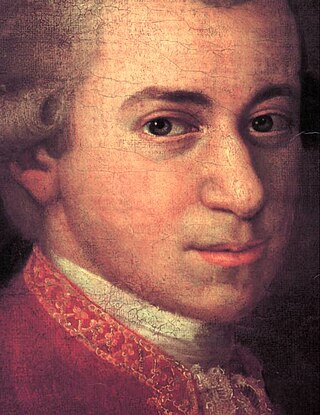
Wolfgang Amadeus Mozart, baptised as Joannes Chrysostomus Wolfgangus Theophilus Mozart, was a prolific and influential composer of the Classical period. Despite his short life, his rapid pace of composition resulted in more than 800 works of virtually every genre of his time. Many of these compositions are acknowledged as pinnacles of the symphonic, concertante, chamber, operatic, and choral repertoire. Mozart is widely regarded as among the greatest composers in the history of Western music, with his music admired for its "melodic beauty, its formal elegance and its richness of harmony and texture".
Hester Thrale, Welsh author (d. 1821) births

Hester Lynch Thrale Piozzi, a Welsh-born diarist, author and patron of the arts, is an important source on Samuel Johnson and 18th-century English life. She belonged to the prominent Salusbury family, Anglo-Welsh landowners, and married first a wealthy brewer, Henry Thrale, then a music teacher, Gabriel Mario Piozzi. Her Anecdotes of the Late Samuel Johnson (1786) and her diary Thraliana, published posthumously in 1942, are the main works for which she is remembered. She also wrote a popular history book and a dictionary. She has been seen as a protofeminist.
Louis Henri, Duke of Bourbon (b. 1692) deaths

Louis Henri, Duke of Bourbon, was a French nobleman and politician who served as Prime Minister of France from 1723 to 1726. As a member of the reigning House of Bourbon, he was a prince du sang.
Thomas Woolston, English theologian and author (b. 1669) deaths
Thomas Woolston was an English theologian. Although he was often classed as a deist, his biographer William H. Trapnell regards him as an Anglican who held unorthodox theological views.
Bartolomeo Cristofori, Italian instrument maker, invented the Piano (b. 1655) deaths
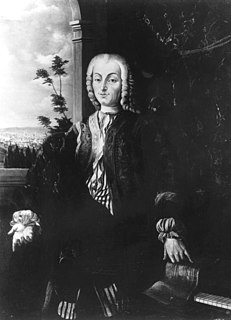
Bartolomeo Cristofori di Francesco was an Italian maker of musical instruments famous for inventing the piano.

The piano is a stringed keyboard instrument in which the strings are struck by wooden hammers that are coated with a softer material. It is played using a keyboard, which is a row of keys that the performer presses down or strikes with the fingers and thumbs of both hands to cause the hammers to strike the strings. It was invented in Italy by Bartolomeo Cristofori around the year 1700.
Grand Duchess Anna Petrovna of Russia (d. 1728) births

Grand Duchess Anna Petrovna of Russia was the eldest daughter of Emperor Peter I of Russia and his wife Empress Catherine I. Her younger sister, Empress Elizabeth, ruled between 1741 and 1762. While a potential heir in the reign of her nephew Peter II, she never acceded to the throne due to political reasons. However, her son Peter III became Emperor in 1762, succeeding Elizabeth. She was the Duchess Consort of Holstein-Gottorp by marriage. She was born in Moscow and died in Kiel in her youth, at the age of 20.
Johann Nikolaus von Hontheim, German historian and theologian (d. 1790) births

Johann Nikolaus von Hontheim was a German historian and theologian. He is remembered as Febronius, the pseudonym under which he wrote his 1763 treatise On the State of the Church and the Legitimate Power of the Roman Pontiff and which gave rise to febronianism.
Robert Aske, English merchant and philanthropist (b. 1619) deaths

Robert Aske was a merchant and haberdasher in the City of London. He is remembered primarily for the charitable foundation created from his estate, which nowadays operates two schools in Hertfordshire, Haberdashers' Boys' School and Haberdashers' School for Girls, and others elsewhere.
Empress Dowager Xiaozhuang of China (b. 1613) deaths
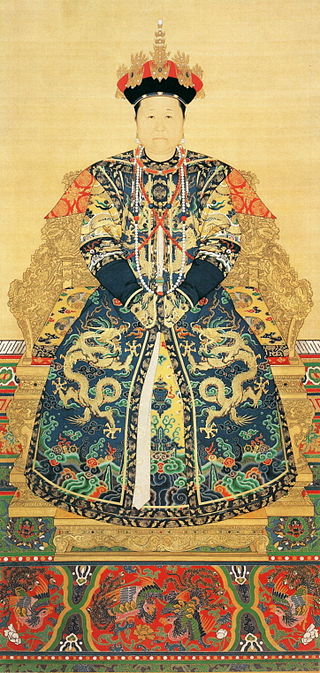
Bumbutai, of the Khorchin Mongol Borjigit clan, was the consort of Hong Taiji. She was 21 years his junior. She was honoured as Empress Dowager Zhaosheng during the reign of her son, Fulin, the Shunzhi Emperor, and as Grand Empress Dowager Zhaosheng during the reign of her grandson, Xuanye, the Kangxi Emperor.
Johann Balthasar Neumann, German engineer and architect, designed Würzburg Residence and Basilica of the Fourteen Holy Helpers (d. 1753) births

Johann Balthasar Neumann, usually known as Balthasar Neumann, was a German architect and military artillery engineer who developed a refined brand of Baroque architecture, fusing Austrian, Bohemian, Italian, and French elements to design some of the most impressive buildings of the period, including the Würzburg Residence and the Basilica of the Fourteen Holy Helpers.
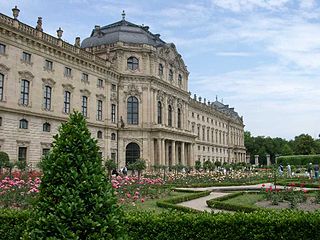
The Würzburg Residence is a palace in Würzburg, Germany. Johann Lukas von Hildebrandt and Maximilian von Welsch, representatives of the Austrian/South German Baroque style, were involved in the construction, as well as Robert de Cotte and Germain Boffrand, who were followers of the French Style. Balthasar Neumann, court architect of the Bishop of Würzburg, was the principal architect of the Residence, which was commissioned by the Prince-Bishop of Würzburg Johann Philipp Franz von Schönborn and his brother Friedrich Carl von Schönborn in 1720, and completed in 1744. The Venetian painter Giovanni Battista Tiepolo, assisted by his son, Domenico, painted frescoes in the building.

The Basilica of the Fourteen Holy Helpers is a church located near the town of Bad Staffelstein near Bamberg, in Bavaria, southern Germany. The late Baroque-Rococo basilica, designed by Balthasar Neumann, was constructed between 1743 and 1772. It is dedicated to the Fourteen Holy Helpers, a group of saints venerated together in the Catholic Church, especially in Germany at the time of the Black Death.
George Byng, 1st Viscount Torrington, Royal Navy admiral (d. 1733) births

Admiral of the Fleet George Byng, 1st Viscount Torrington,, of Southill Park in Bedfordshire, was a Royal Navy officer and statesman. While still a lieutenant, he delivered a letter from various captains to Prince William of Orange, who had just landed at Torbay, assuring the Prince of the captains' support; the Prince gave Byng a response which ultimately led to the Royal Navy switching allegiance to the Prince and the Glorious Revolution of November 1688.
Richard Bentley, English scholar and theologian (d. 1742) births

Richard Bentley FRS was an English classical scholar, critic, and theologian. Considered the "founder of historical philology", Bentley is widely credited with establishing the English school of Hellenism. In 1892, A. E. Housman called Bentley "the greatest scholar that England or perhaps that Europe ever bred".
Abraham Bloemaert, Dutch painter and illustrator (b. 1566) deaths

Abraham Bloemaert was a Dutch painter and printmaker in etching and engraving. He was initially working in the style of the "Haarlem Mannerists", but in the 16th century altered his style in line with the new Baroque style that was then developing. He mostly painted history subjects and some landscapes. He was an important teacher, who trained most of the Utrecht Caravaggisti, at least for a period.
Gonzalo de Céspedes y Meneses, Spanish author and poet (b. 1585) deaths
Gonzalo de Céspedes y Meneses was a Spanish novelist.
Hieronymus Praetorius, German organist and composer (b. 1560) deaths
Hieronymus Praetorius was a Northern German composer and organist of the late Renaissance and early Baroque whose polychoral motets in 8 to 20 voices are intricate and vividly expressive. Some of his organ music survives in the Visby Orgel-Tabulatur, which dates from 1611.
Thomas Willis, English physician and anatomist (d. 1675) births
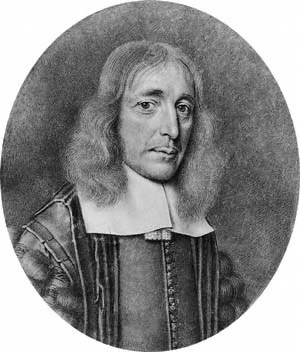
Thomas Willis FRS was an English doctor who played an important part in the history of anatomy, neurology and psychiatry, and was a founding member of the Royal Society.
Sir Harbottle Grimston, 2nd Baronet, English lawyer and politician, Speaker of the House of Commons (d. 1685) births

Sir Harbottle Grimston, 2nd Baronet was an English lawyer and politician who sat in the House of Commons at various times between 1640 and 1685 and was Speaker in 1660. During the English Civil War he remained a Parliamentarian but was sympathetic to the Royalists.

The speaker of the House of Commons is the presiding officer of the House of Commons, the lower house and primary chamber of the Parliament of the United Kingdom. The current speaker, Sir Lindsay Hoyle, was elected Speaker on 4 November 2019, following the retirement of John Bercow. Hoyle began his first full parliamentary term in the role on 17 December 2019, having been unanimously re-elected after the 2019 general election.
Humphrey Mackworth, English politician, lawyer and judge (d. 1654) births
Humphrey Mackworth was an English lawyer, judge, and politician of Shropshire landed gentry origins who rose to prominence in the Midlands, the Welsh Marches and Wales during the English Civil War. He was the Parliamentarian military governor of Shrewsbury in the later phases of the war and under The Protectorate. He occupied several important legal and judicial posts in Chester and North Wales, presiding over the major trials that followed the Charles Stuart's invasion in 1651. In the last year of his life, he attained national prominence as a member of Oliver Cromwell's Council and as a Member of the House of Commons for Shropshire in the First Protectorate Parliament.
Francis Drake, English captain and explorer (b. 1540) deaths
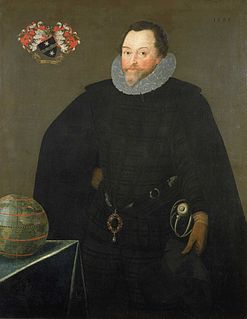
Sir Francis Drake was an English explorer, sea captain, privateer, slave trader, naval officer, and politician. Drake is best known for his circumnavigation of the world in a single expedition, from 1577 to 1580. This included his incursion into the Pacific Ocean, until then an area of exclusive Spanish interest, and his claim to New Albion for England, an area in what is now the U.S. state of California. His expedition inaugurated an era of conflict with the Spanish on the western coast of the Americas, an area that had previously been largely unexplored by Western shipping.
Gian Paolo Lomazzo, Italian painter (b. 1538) deaths

Gian Paolo Lomazzo was an Italian artist and writer on art. Praised as a painter, Lomazzo wrote about artistic practice and art theory after blindness compelled him to pursue a different professional path by 1571. Lomazzo's written works were especially influential to second generation Mannerism in Italian art and architecture.
Hendrick Avercamp, Dutch painter (d. 1634) births

Hendrick Avercamp was a Dutch painter during the Dutch Golden Age of painting. He was one of the earliest landscape painters of the 17th-century Dutch school, he specialized in painting the Netherlands in winter. His paintings are colorful and lively, with carefully crafted images of the people in the landscape. His works give a vivid depiction of sport and leisure in the Netherlands in the beginning of the 17th century. Many of Avercamp's paintings feature people ice skating on frozen lakes.
Abbas I of Persia (d. 1629) births

Abbas I, commonly known as Abbas the Great, was the 5th Safavid Shah (king) of Azerbaijan, and is generally considered one of the greatest rulers of Iranian history and the Safavid dynasty. He was the third son of Shah Mohammad Khodabanda.
Joachim III Frederick, Elector of Brandenburg (d. 1608) births

Joachim Frederick, of the House of Hohenzollern, was Prince-elector of the Margraviate of Brandenburg from 1598 until his death.
Angela Merici, Italian educator and saint, founded the Company of St. Ursula (b. 1474) deaths

Angela Merici or Angela de Merici was an Italian religious educator, who is honored as a saint by the Roman Catholic Church. She founded the Company of St. Ursula in 1535 in Brescia, in which women dedicated their lives to the service of the church through the education of girls. From this organisation later sprang the monastic Order of Saint Ursula, whose nuns established places of prayer and learning throughout Europe and, later, worldwide, most notably in North America.
The Angelines, also known as the Company of Saint Ursula or officially the Secular Institute of Saint Angela Merici, is a secular institute of consecrated women in the Catholic Church founded in 1535 by Saint Angela Merici in Brescia, Italy. Their primary focus is the education of women and girls, and the care of the sick and needy. Their patron saint is Saint Ursula. They follow the original form of life established by their foundress in that they live independently, responsible for their own well-being, for which they often have secular jobs, but they formally dedicate their lives to the service of the Church. In 1572, some members formed a separate monastic order, the Ursulines.
Ludovico II, Marquess of Saluzzo (b. 1438) deaths
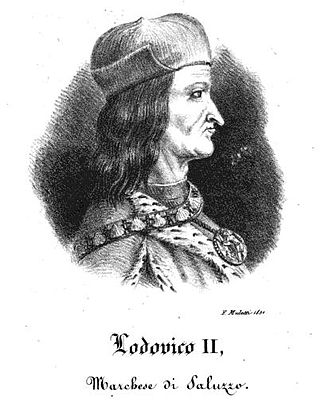
Ludovico II del Vasto was marquess of Saluzzo from 1475 until his death. Before his accession as marquis he held the title of Count of Carmagnola.
Ashikaga Yoshimasa, Japanese shōgun (b. 1435) deaths

Ashikaga Yoshimasa was the eighth shōgun of the Ashikaga shogunate who reigned from 1449 to 1473 during the Muromachi period of Japan.
Albert III, Duke of Saxony (d. 1500) births

Albert III was a Duke of Saxony. He was nicknamed Albert the Bold or Albert the Courageous and founded the Albertine line of the House of Wettin.
Frederick the Simple, King of Sicily deaths

Frederick III, called the Simple, was King of Sicily from 1355 to 1377. He was the second son of Peter II of Sicily and Elisabeth of Carinthia. He succeeded his brother Louis. The documents of his era call him the "infante Frederick, ruler of the kingdom of Sicily", without any regnal number.
Edward of Angoulême, English noble (d. 1370) births

Edward of Angoulême was second in line to the throne of the Kingdom of England before his death. Born in Angoulême, he was the eldest child of Edward, Prince of Wales, commonly called "the Black Prince", and Joan, Countess of Kent, and thus was a member of the House of Plantagenet. Edward's birth, during the Hundred Years' War, was celebrated luxuriously by his father and by other monarchs, such as Charles V of France.
Külüg Khan, Emperor Wuzong of Yuan deaths
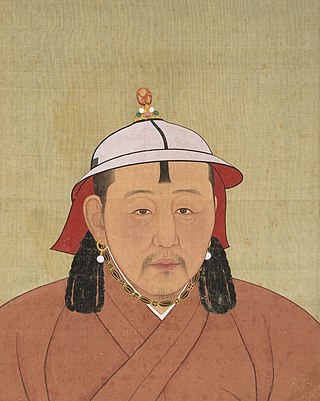
Külüg Khan, born Khayishan, also known by the temple name Wuzong, Prince of Huaining (懷寧王) in 1304-1307, was an emperor of the Yuan dynasty of China. Apart from Emperor of China, he is regarded as the seventh Great Khan of the Mongol Empire, although it was only nominal due to the division of the empire. His name means "warrior Khan" or "fine horse Khan" in the Mongolian language.
Adelaide of Hungary, (b. c. 1040) deaths
Adelaide of Hungary was the only daughter of King Andrew I of Hungary of the Árpád dynasty and Anastasia of Kiev. She was the second wife of Vratislav II of Bohemia, whom she married in 1058. She was a good dynastic match for Vratislav, as he profited from the alliance with her father. They had four children, including Bretislaus II of Bohemia and Judith of Bohemia. Vratislav became duke in 1061 after the death of his brother; thus, Adelaide was duchess for only a short time before her death early in 1062.
Zhang Yanze, Chinese general and governor deaths

Zhang Yanze was an ethnic Göktürk general of the Later Tang, Later Jin, and Liao dynasties of China. He was reviled in traditional sources for his cruelty, avarice, and lack of faithfulness to the Later Jin.
Ruotger, archbishop of Trier deaths
Ruotger, also spelled Rutger, Rudger or Rudgar, was the archbishop of Trier from 915. His archdiocese at first lay within the kingdom of West Francia, but after 925 it was annexed to East Francia, an event in which Ruotger played a major role.
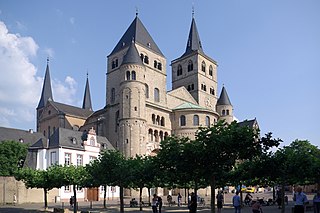
The Diocese of Trier, in English historically also known as Treves from French Trèves, is a Latin Church ecclesiastical territory or diocese of the Catholic church in Germany. When it was the archbishopric and Electorate of Trier, it was one of the most important states of the Holy Roman Empire, both as an ecclesiastical principality and as a diocese of the church. Unlike the other Rhenish dioceses—including Mainz and Cologne–Trier was the former Roman provincial capital of Augusta Treverorum. Given its status, Trier has continuously been an episcopal see since Roman times and is one of the oldest dioceses in all of Germany. The diocese was elevated to an archdiocese in the time of Charlemagne and was the metropolitan for the dioceses of Metz, Toul, and Verdun. After the victory of Napoleon Bonaparte of France, the archdiocese was lowered to a diocese and is now a suffragan in the ecclesiastical province of the Archdiocese of Cologne. The diocesan cathedral is the Cathedral of Saint Peter. The Cathedral Chapter retains the right to elect the bishop, rather than selection by papal appointment.
Liu Can, chancellor of the Tang Dynasty deaths
Liu Can, courtesy name Zhaozhi, formally the Baron of Hedong (河東男), nicknamed Liu Qiezi, was an official of the Chinese dynasty Tang Dynasty, serving as a chancellor during the reigns of Emperor Zhaozong and Emperor Zhaozong's son Emperor Ai, near the end of the dynasty. He was an associate of the powerful warlord Zhu Quanzhong the military governor (Jiedushi) of Xuanwu Circuit, who assisted Zhu in the process of seizing the Tang throne. However, eventually, Zhu became impatient of the pace that Liu and his other associates Jiang Xuanhui (蔣玄暉) and Zhang Tingfan (張廷範) were taking in that process, and became suspicious that they had turned against him. He therefore had all of them executed.
The chancellor was a semi-formally designated office position for a number of high-level officials at one time during the Tang dynasty of China. This list also includes chancellors of the short-lived Wu Zhou dynasty, which is typically treated as an interregnum of the Tang dynasty by historians.
Pope Sergius II (b. 790) deaths
Pope Sergius II was the bishop of Rome and ruler of the Papal States from January 844 to his death in 847. Sergius II's pontificate saw the Arab raid against Rome as well as the city's redevelopment.
Pope Vitalian deaths
Pope Vitalian was the bishop of Rome from 30 July 657 to his death. His pontificate was marked by the dispute between the papacy and the imperial government in Constantinople over Monothelitism, which Rome condemned. Vitalian tried to resolve the dispute and had a conciliatory relationship with Emperor Constans II, who visited him in Rome and gave him gifts. Vitalian's pontificate also saw the secession of the Archbishopric of Ravenna from the papal authority.
Yuan Di, emperor of the Liang Dynasty (b. 508) deaths
Emperor Yuan of Liang, personal name Xiao Yi (蕭繹), courtesy name Shicheng (世誠), childhood name Qifu (七符), was an emperor of the Chinese Liang Dynasty. After his father Emperor Wu and brother Emperor Jianwen were successively taken hostage and controlled by the rebel general Hou Jing, Xiao Yi was largely viewed as the de facto leader of Liang, and after defeating Hou in 552 declared himself emperor. In 554, after offending Yuwen Tai, the paramount general of rival Western Wei, Western Wei forces descended on and captured his capital Jiangling, executing him and instead declaring his nephew Xiao Cha the Emperor of Liang.
Marcian, Byzantine emperor (b. 392) deaths

Marcian was Roman emperor of the East from 450 to 457. Very little of his life before becoming emperor is known, other than that he was a domesticus who served under the commanders Ardabur and his son Aspar for fifteen years. After the death of Emperor Theodosius II on 28 July 450, Marcian was made a candidate for the throne by Aspar, who held much influence because of his military power. After a month of negotiations Pulcheria, Theodosius' sister, agreed to marry Marcian. Zeno, a military leader whose influence was similar to Aspar's, may have been involved in these negotiations, as he was given the high-ranking court title of patrician upon Marcian's accession. Marcian was elected and inaugurated on 25 August 450.
Nerva, Roman emperor (b. 35) deaths
AD 98 (XCVIII) was a common year starting on Monday of the Julian calendar. At the time, it was known as the Year of the Consulship of Augustus and Traianus. The denomination AD 98 for this year has been used since the early medieval period, when the Anno Domini calendar era became the prevalent method in Europe for naming years.

Nerva was Roman emperor from 96 to 98. Nerva became emperor when aged almost 66, after a lifetime of imperial service under Nero and the succeeding rulers of the Flavian dynasty. Under Nero, he was a member of the imperial entourage and played a vital part in exposing the Pisonian conspiracy of 65. Later, as a loyalist to the Flavians, he attained consulships in 71 and 90 during the reigns of Vespasian and Domitian, respectively. On 18 September 96, Domitian was assassinated in a palace conspiracy involving members of the Praetorian Guard and several of his freedmen. On the same day, Nerva was declared emperor by the Roman Senate. As the new ruler of the Roman Empire, he vowed to restore liberties which had been curtailed during the autocratic government of Domitian.
Christian feast day: Angela Merici

Angela Merici or Angela de Merici was an Italian religious educator, who is honored as a saint by the Roman Catholic Church. She founded the Company of St. Ursula in 1535 in Brescia, in which women dedicated their lives to the service of the church through the education of girls. From this organisation later sprang the monastic Order of Saint Ursula, whose nuns established places of prayer and learning throughout Europe and, later, worldwide, most notably in North America.
Christian feast day: Blessed Paul Joseph Nardini

Beatification is a recognition accorded by the Catholic Church of a deceased person's entrance into Heaven and capacity to intercede on behalf of individuals who pray in their name. Beati is the plural form, referring to those who have undergone the process of beatification; they possess the title of "Blessed" before their names and are often referred to in English as "a Blessed" or, plurally, "Blesseds".

Paul Joseph Nardini, was a German diocesan priest and the founder of the religious congregation of the Poor Franciscan Sisters of the Holy Family, also commonly known as the Nardini Sisters, or the Mallersdorfer Sisters from the town where they are now headquartered. He was beatified in 2006 by the Catholic Church. He is commemorated on 27 January.
Christian feast day: Devota (Monaco)
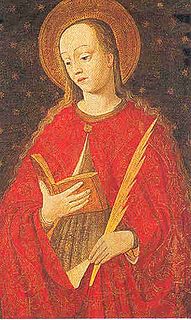
Saint Devota is the patron saint of Corsica and Monaco. She was killed during the persecutions of the Roman Emperors Diocletian and Maximian. She is sometimes identified with another Corsican saint named Julia, who was described in Latin as Deo devota. The description was misinterpreted as a proper name. The legend connected with her is similar to those told of other saints of the region, such as Saint Reparata and Saint Torpes.
This is a list of public holidays in Monaco.
Christian feast day: Enrique de Ossó y Cercelló

Enrique de Ossó i Cervelló was a Spanish Catholic priest and the founder of the Society of Saint Teresa of Jesus. He served the role of a parish priest as an educator and an able catechist and published several works on catechesis to that effect while also expressing a keen interest in the value of women and in Teresa of Ávila to whom he dedicated his congregation.
Christian feast day: John Chrysostom (translation of relics) (Anglican, Lutheran, Eastern Orthodox)

John Chrysostom was an important Early Church Father who served as archbishop of Constantinople. He is known for his preaching and public speaking, his denunciation of abuse of authority by both ecclesiastical and political leaders, his Divine Liturgy of Saint John Chrysostom, and his ascetic sensibilities. The epithet Χρυσόστομος means "golden-mouthed" in Greek and denotes his celebrated eloquence. Chrysostom was among the most prolific authors in the early Christian Church, although both Origen of Alexandria and Augustine of Hippo exceeded Chrysostom.

Anglicanism is a Western Christian tradition that has developed from the practices, liturgy, and identity of the Church of England following the English Reformation, in the context of the Protestant Reformation in Europe. It is one of the largest branches of Christianity, with around 110 million adherents worldwide as of 2001.

Lutheranism is one of the largest branches of Protestantism, identifying primarily with the theology of Martin Luther, the 16th-century German monk and reformer whose efforts to reform the theology and practice of the Catholic Church launched the Protestant Reformation. The reaction of the government and church authorities to the international spread of his writings, beginning with the Ninety-five Theses, divided Western Christianity. During the Reformation, Lutheranism became the state religion of numerous states of northern Europe, especially in northern Germany, Scandinavia and the then Livonian Order. Lutheran clergy became civil servants and the Lutheran churches became part of the state.

Eastern Orthodoxy, also known as Eastern Orthodox Christianity, is one of the three main branches of Chalcedonian Christianity, alongside Catholicism and Protestantism.
Christian feast day: Sava (Serbia)

Saint Sava, known as the Enlightener, was a Serbian prince and Orthodox monk, the first Archbishop of the autocephalous Serbian Church, the founder of Serbian law, and a diplomat. Sava, born as Rastko Nemanjić, was the youngest son of Serbian Grand Prince Stefan Nemanja, and ruled the appanage of Zachlumia briefly in 1190–92. He then left for Mount Athos, where he became a monk with the name Sava (Sabbas). At Athos he established the monastery of Hilandar, which became one of the most important cultural and religious centres of the Serbian people. In 1219 the Patriarchate exiled in Nicea recognized him as the first Serbian Archbishop, and in the same year he authored the oldest known constitution of Serbia, the Zakonopravilo nomocanon, thus securing full religious and political independence. Sava is regarded as the founder of Serbian medieval literature.
The public holidays in Serbia are defined by the Law of national and other holidays in the Republic of Serbia.
Christian feast day: January 27 (Eastern Orthodox liturgics)

January 26 - Eastern Orthodox liturgical calendar - January 28
Day of the lifting of the siege of Leningrad (Russia)

The Days of Military Honour are special memorable dates in the Russian Armed Forces dedicated to the most outstanding victories won by Russia. Some of these dates are state holidays but the majority of them is celebrated purely in the armed forces, while 7 November is marked by parades in Moscow and Samara.

Russia, or the Russian Federation, is a transcontinental country spanning Eastern Europe and Northern Asia. It is the largest country in the world, covering over 17,098,246 square kilometres (6,601,670 sq mi), and encompassing one-eighth of Earth's inhabitable landmass. Russia extends across eleven time zones and shares land boundaries with fourteen countries, more than any other country but China. It is the world's ninth-most populous country and Europe's most populous country, with a population of 146 million people. The country's capital and largest city is Moscow, the largest city entirely within Europe. Saint Petersburg is Russia's cultural centre and second-largest city. Other major urban areas include Novosibirsk, Yekaterinburg, Nizhny Novgorod, and Kazan.
Liberation of the remaining inmates of Auschwitz-related observances: Holocaust Memorial Day (UK)

Holocaust Memorial Day is a national commemoration day in the United Kingdom dedicated to the remembrance of the Jews and others who suffered in the Holocaust, under Nazi persecution. It was first held in January 2001 and has been on the same date every year since. The chosen date is the anniversary of the liberation of Auschwitz concentration camp by the Soviet Union in 1945, the date also chosen for the International Holocaust Remembrance Day and some other national Holocaust Memorial Days.
Liberation of the remaining inmates of Auschwitz-related observances: International Holocaust Remembrance Day

The International Holocaust Remembrance Day, or the International Day in Memory of the Victims of the Holocaust, is an international memorial day on 27 January that commemorates the victims of the Holocaust, which resulted in the murder of one third of the Jewish people, along with countless members of other minorities between 1933 and 1945 by Nazi Germany, an attempt to implement their "final solution" to the Jewish question. 27 January was chosen to commemorate the date when the Auschwitz concentration camp was liberated by the Red Army in 1945.
Liberation of the remaining inmates of Auschwitz-related observances: Memorial Day (Italy)
The following days are public holidays in Italy. These include a mix of national, religious and local observances.
Liberation of the remaining inmates of Auschwitz-related observances: Other Holocaust Memorial Days observances
A Holocaust memorial day or Holocaust remembrance day is an annual observance to commemorate the victims of the Holocaust, the genocide of six million Jews and of millions of other Holocaust victims by Nazi Germany and its collaborators. Many countries, primarily in Europe, have designated national dates of commemoration. In 2005, the United Nations instituted an international observance, International Holocaust Remembrance Day.